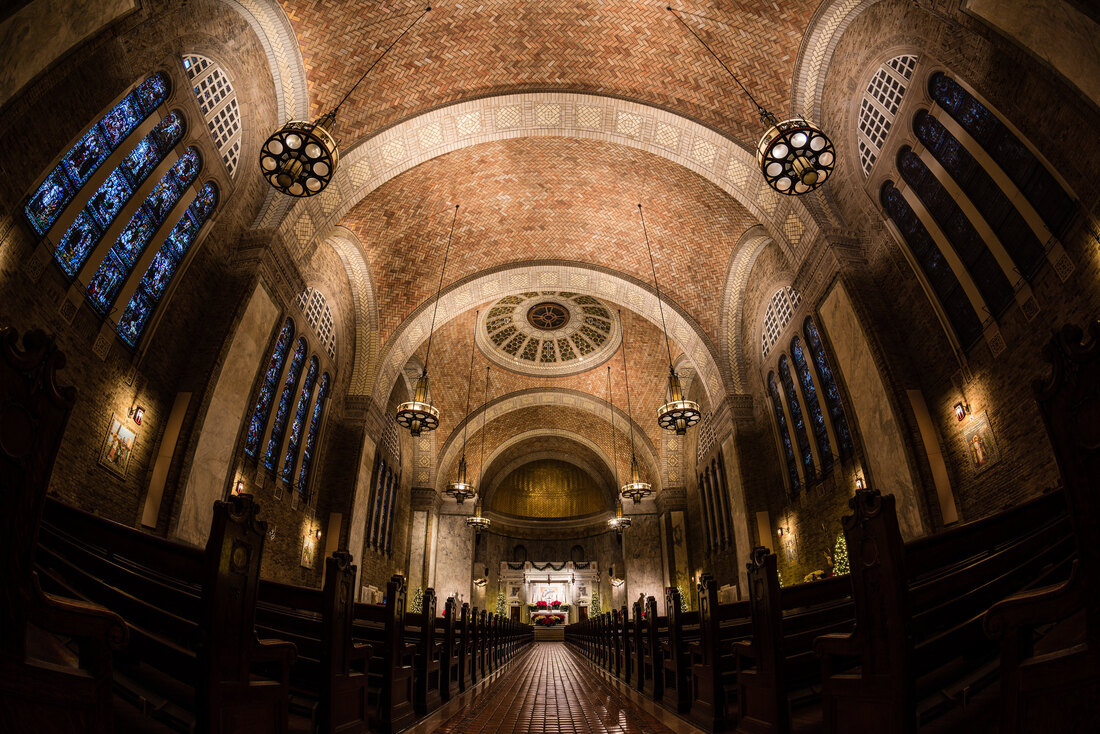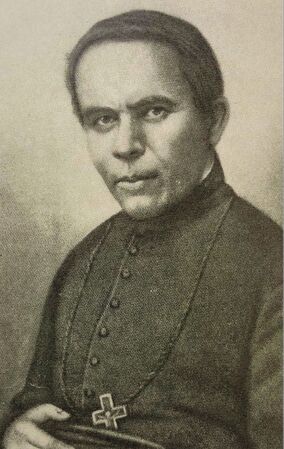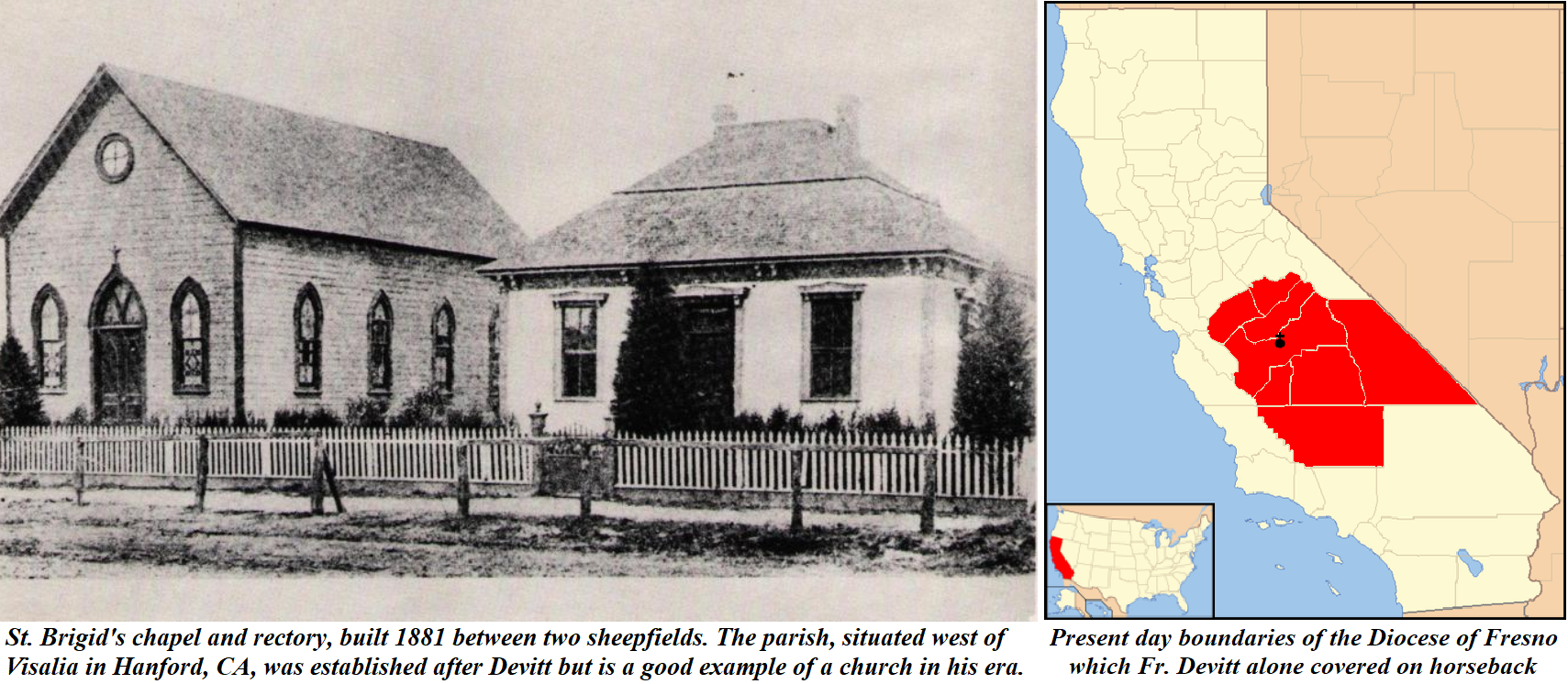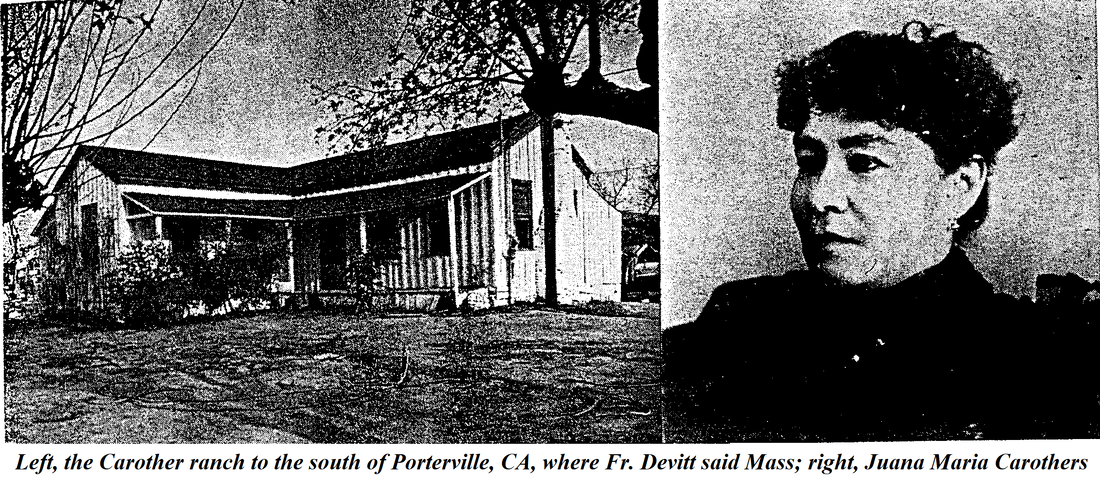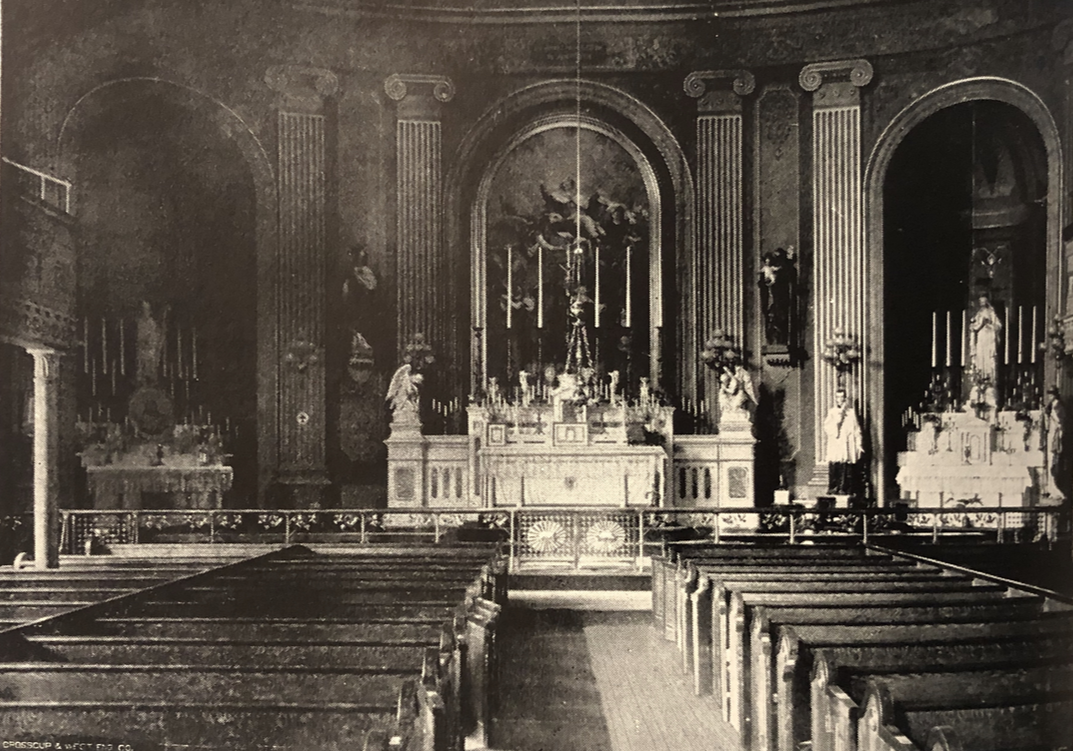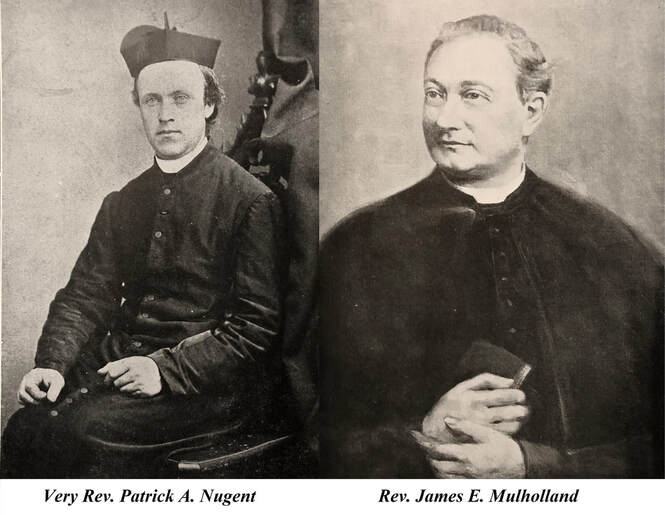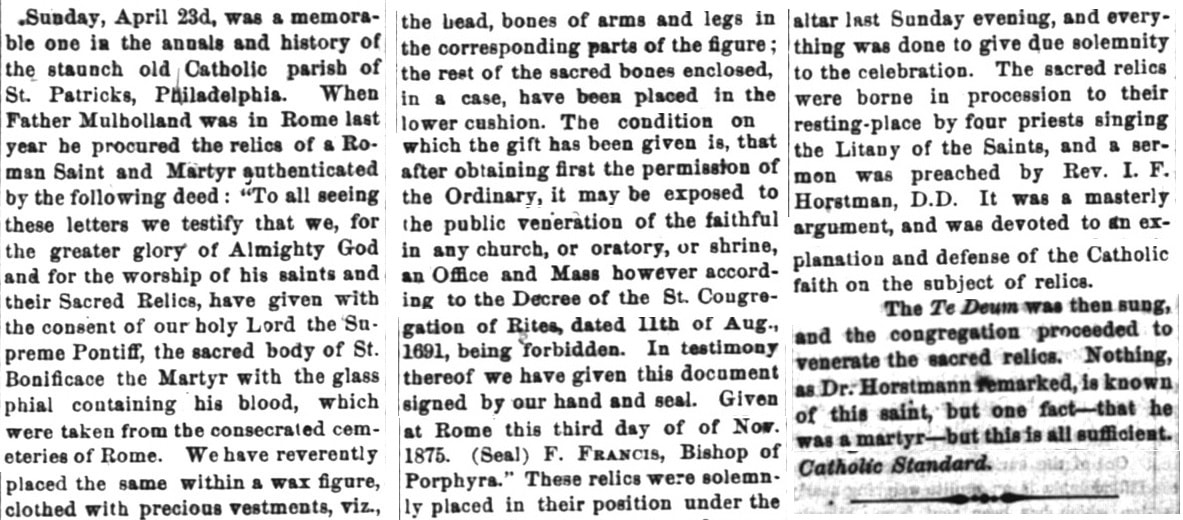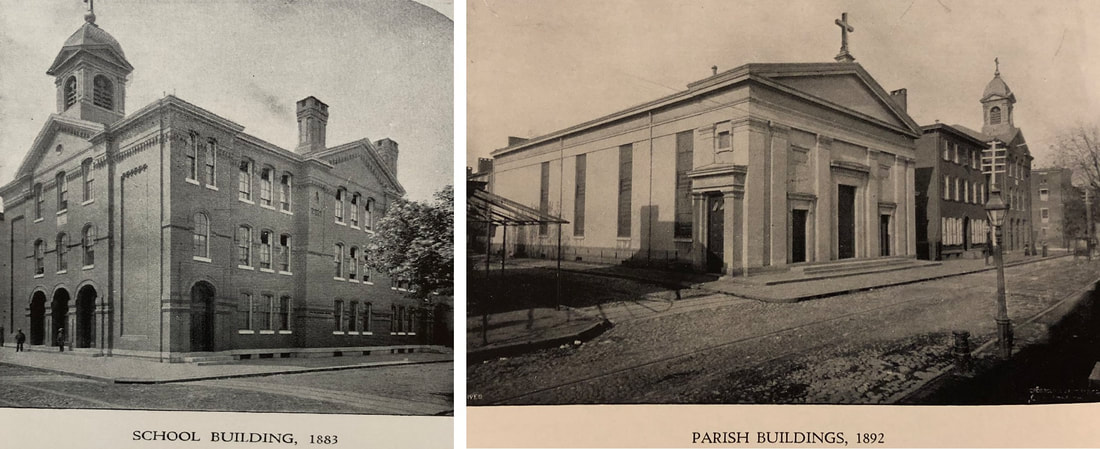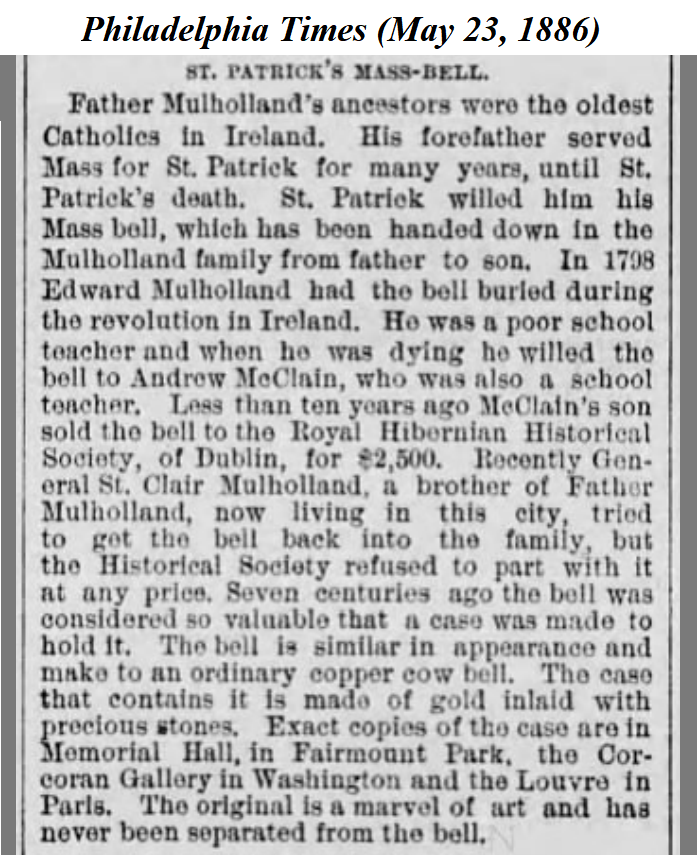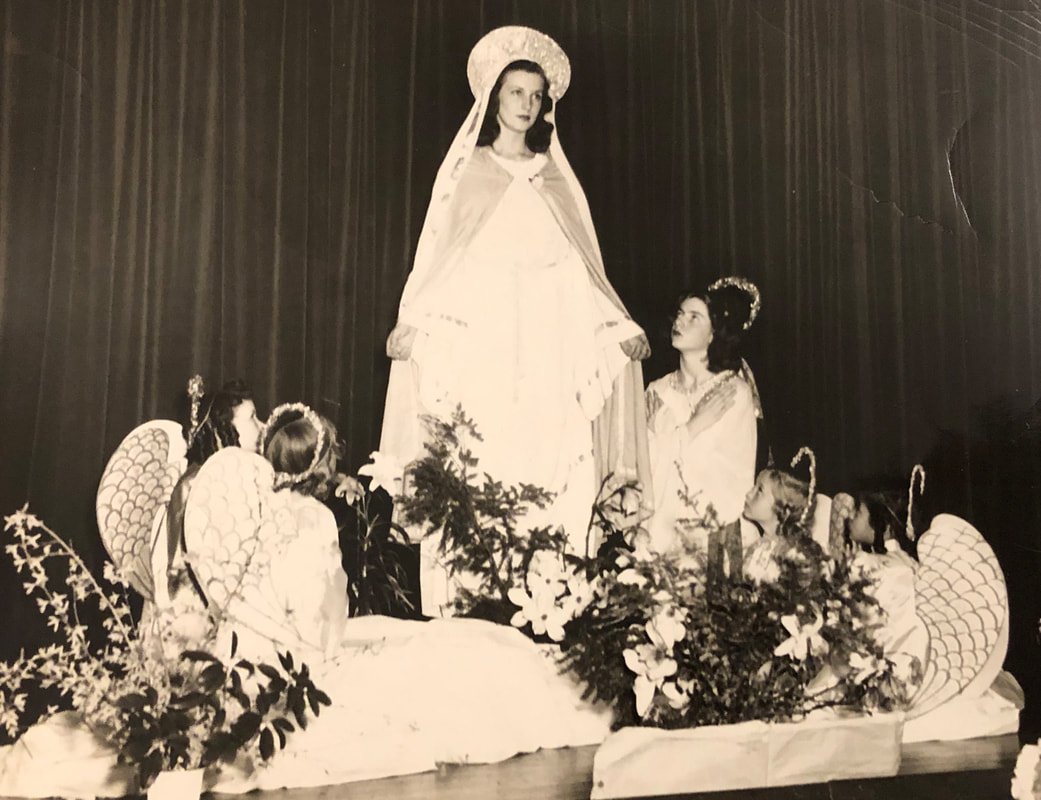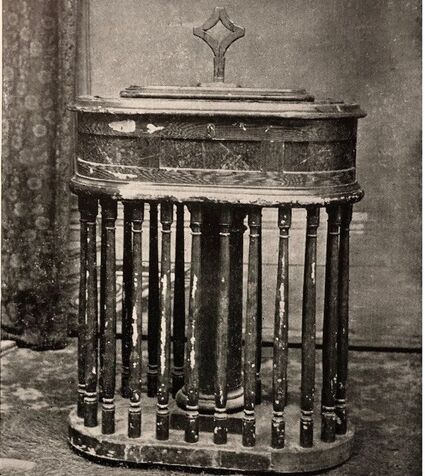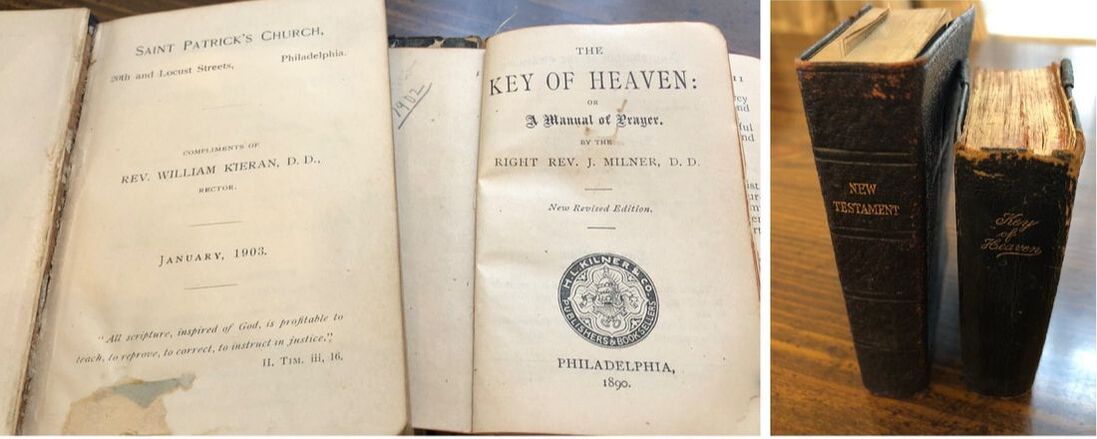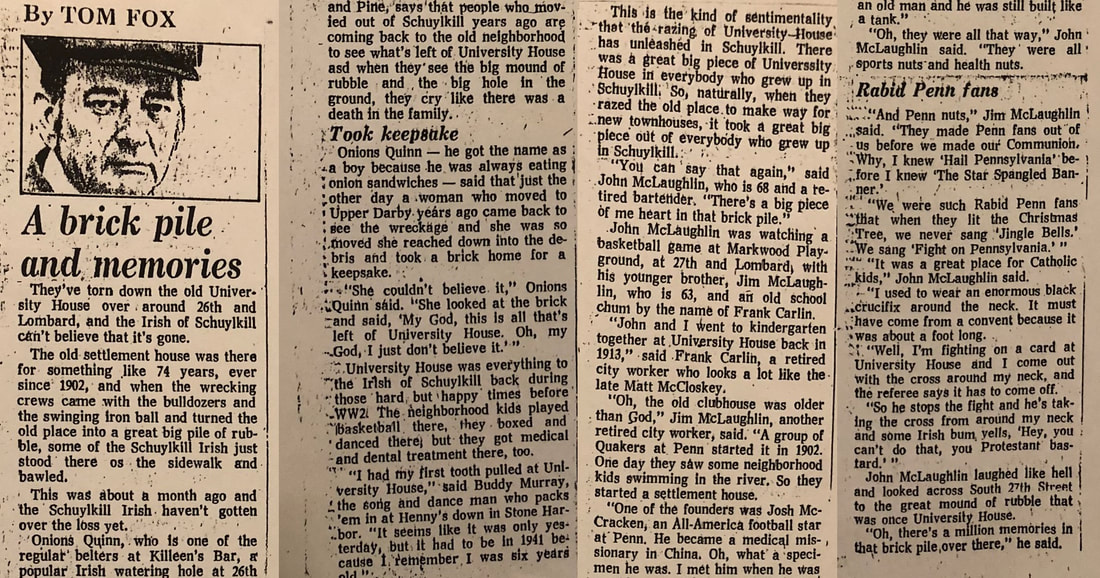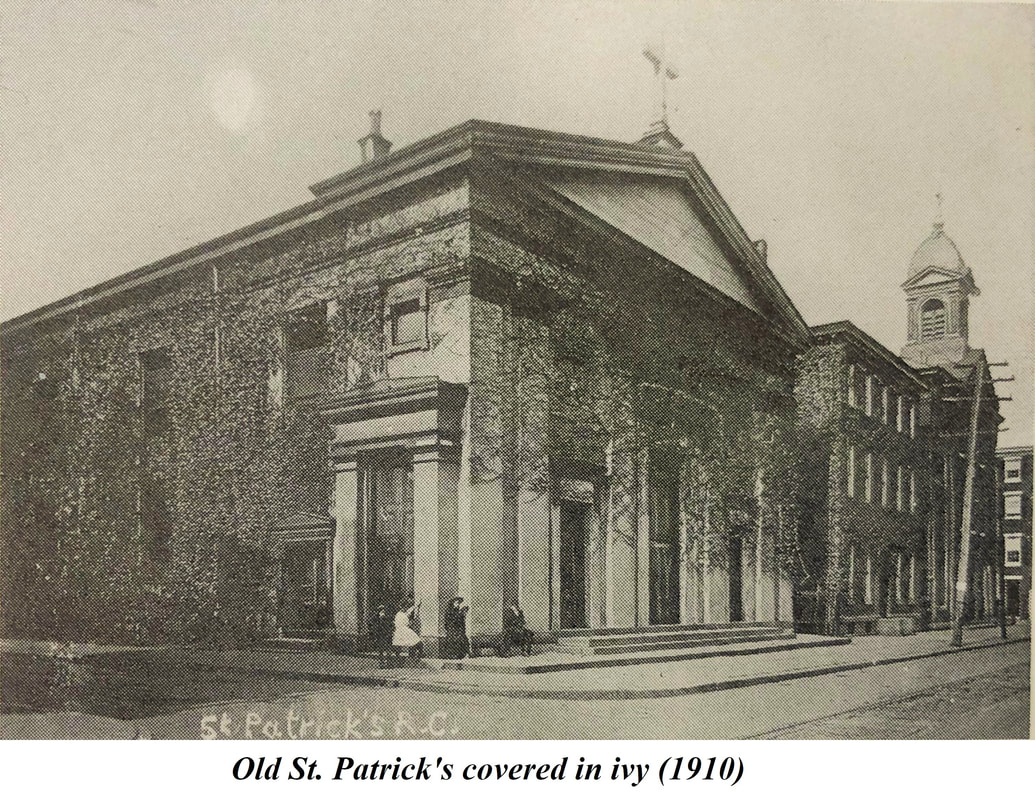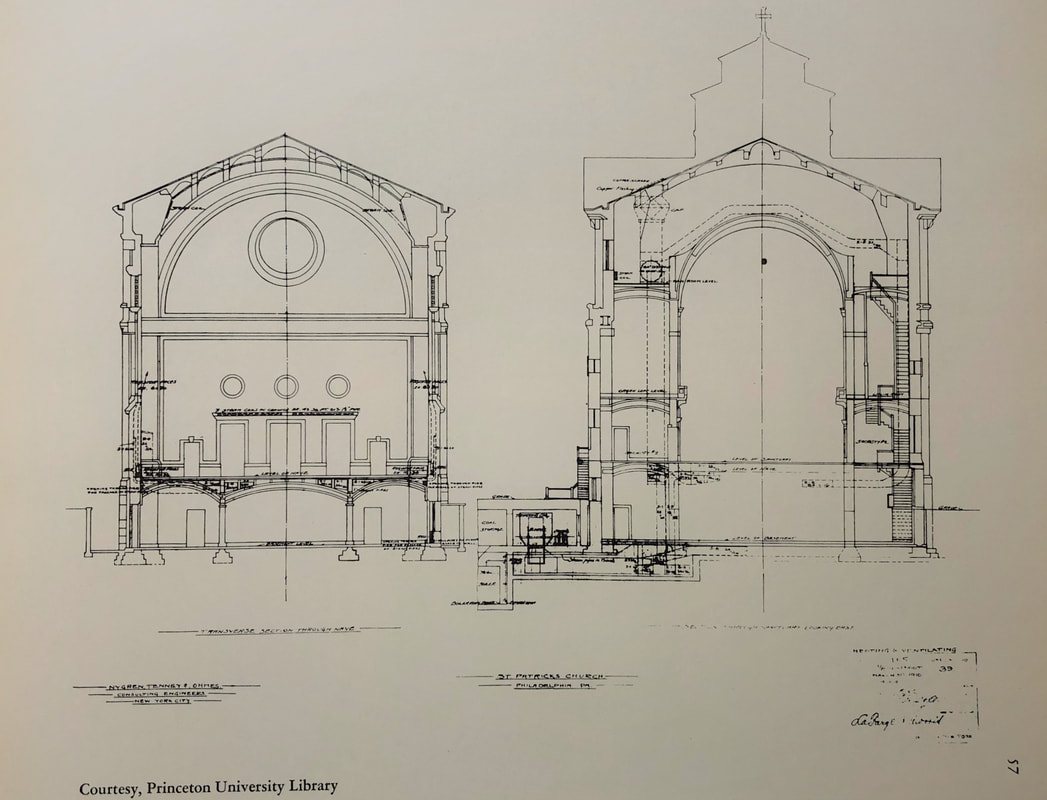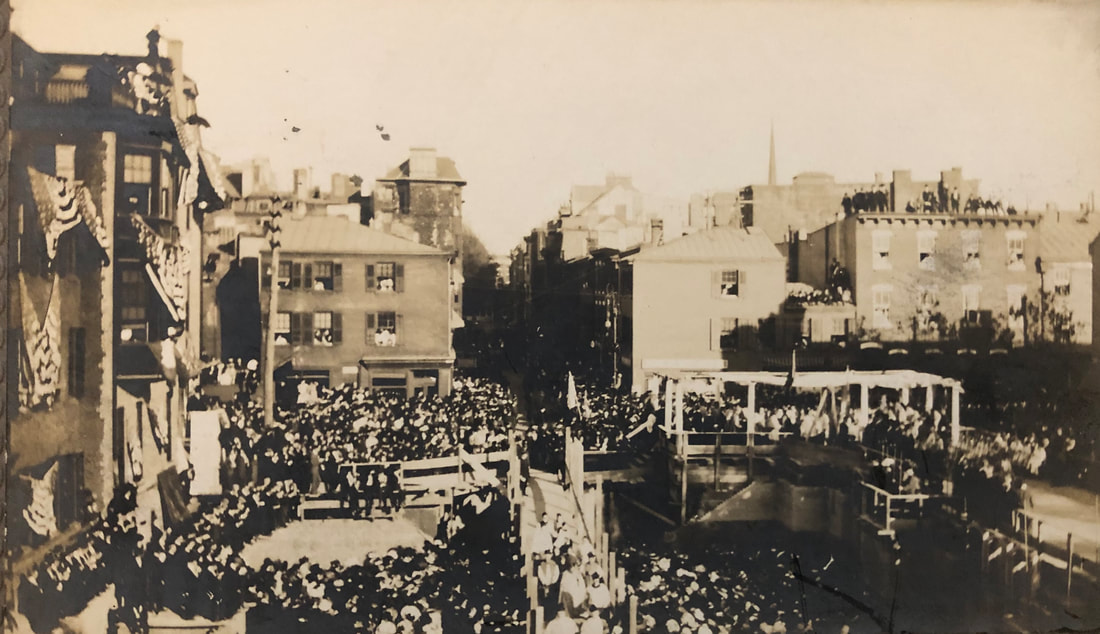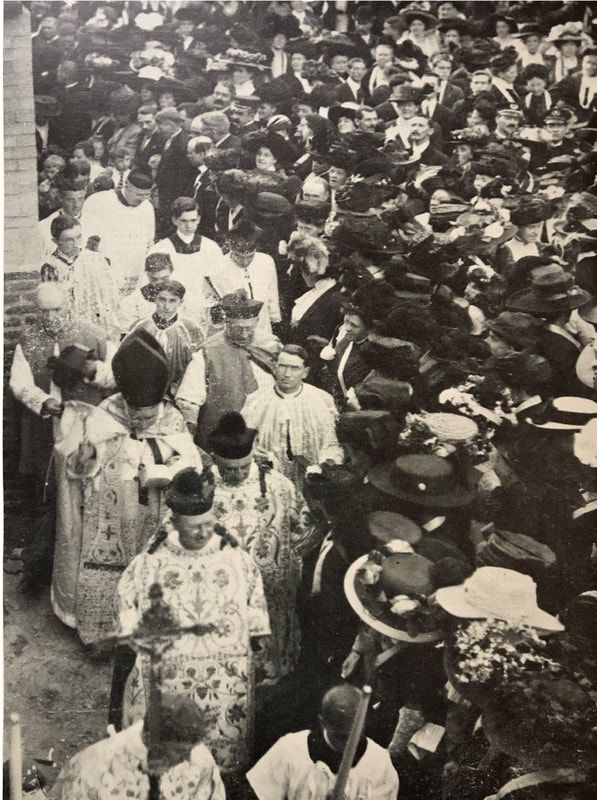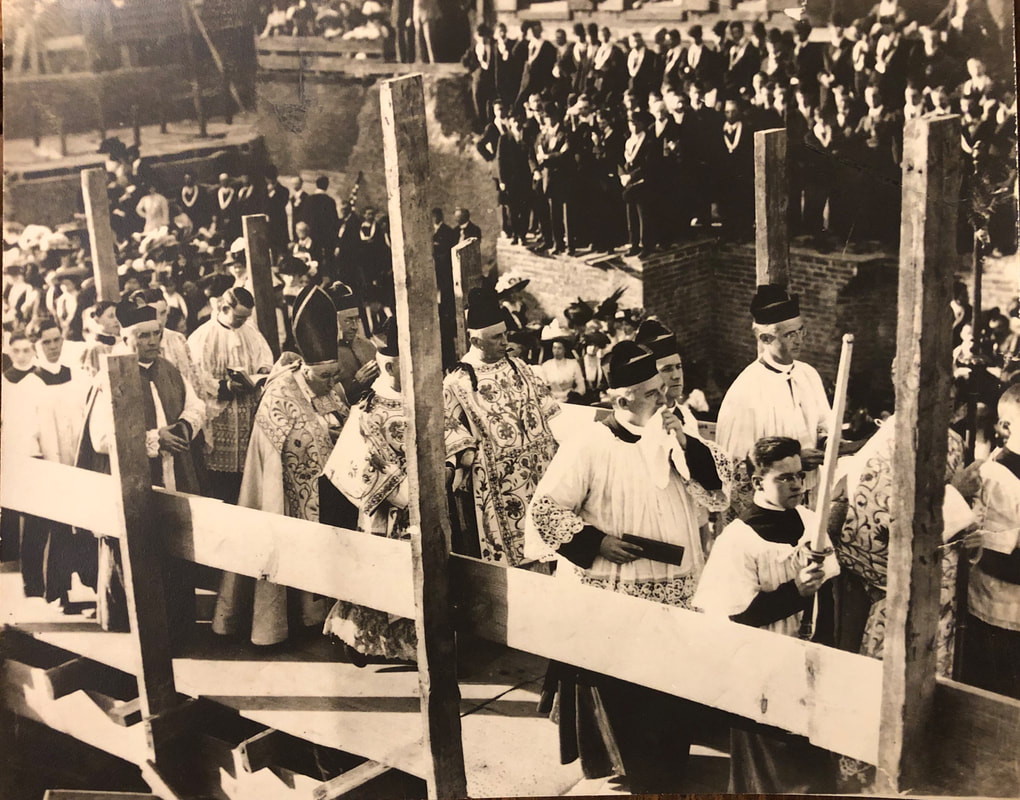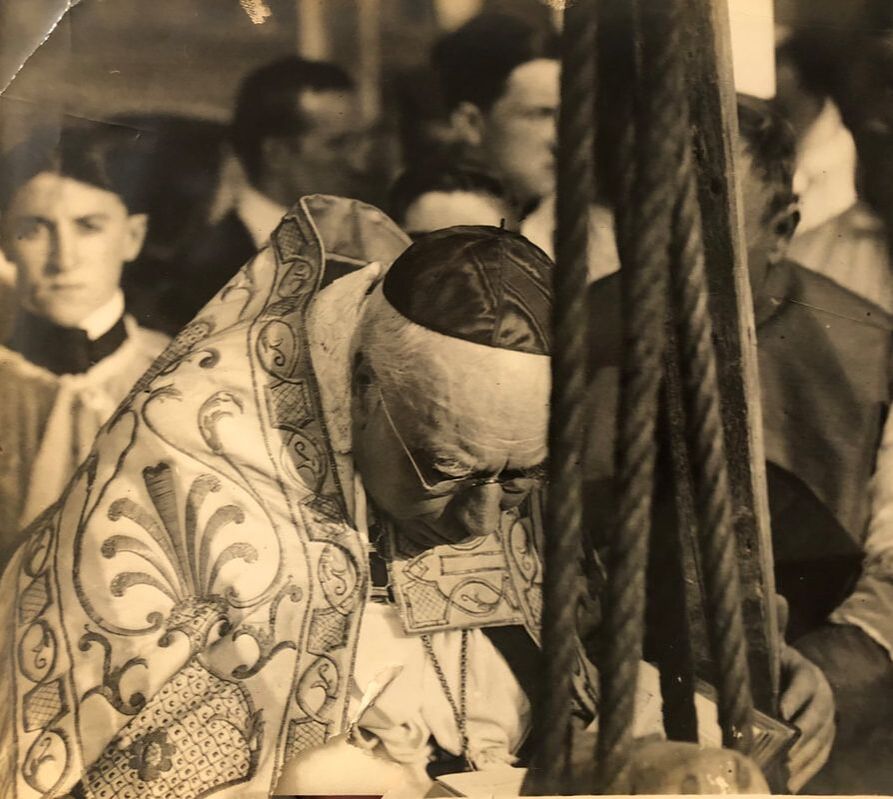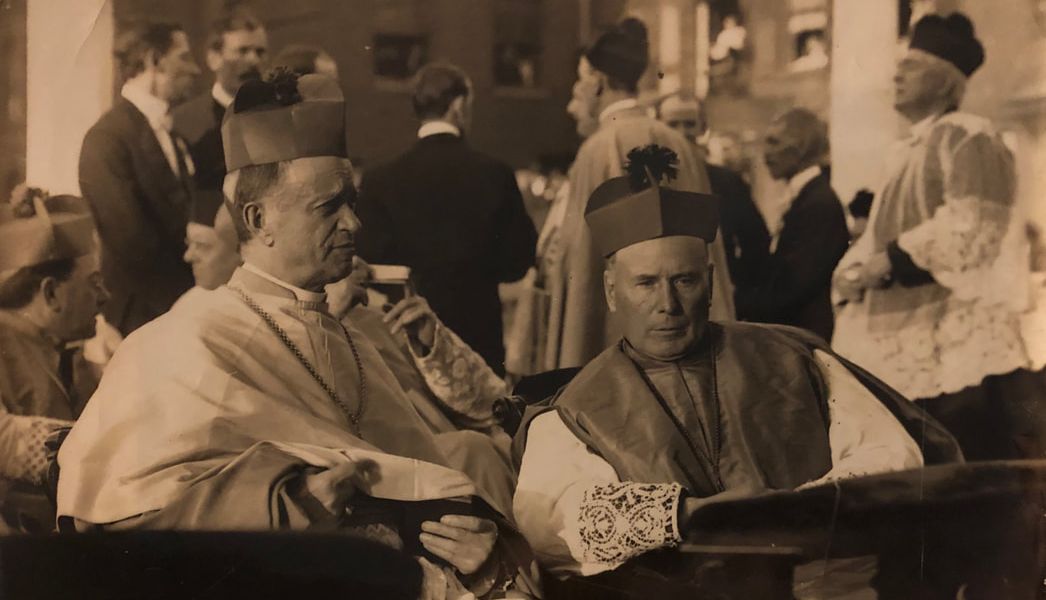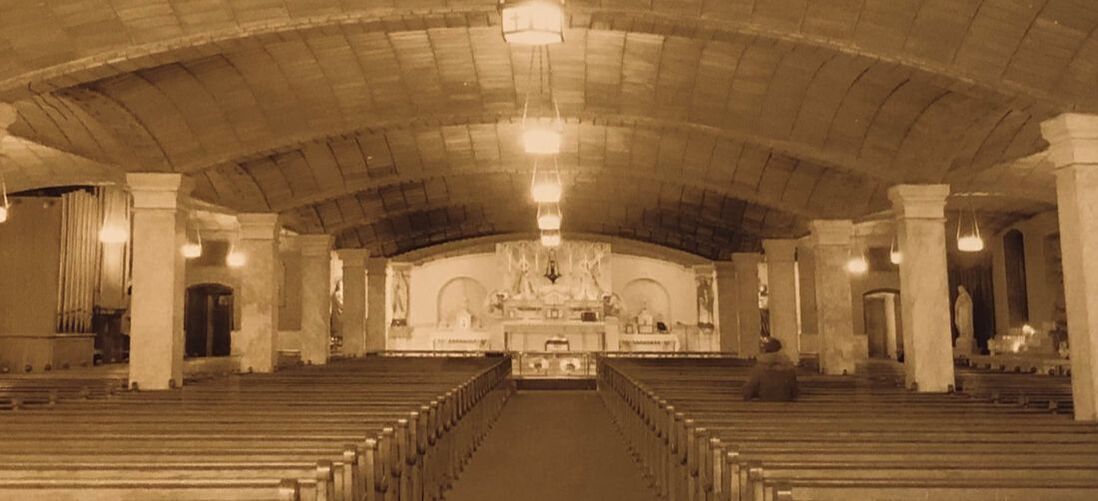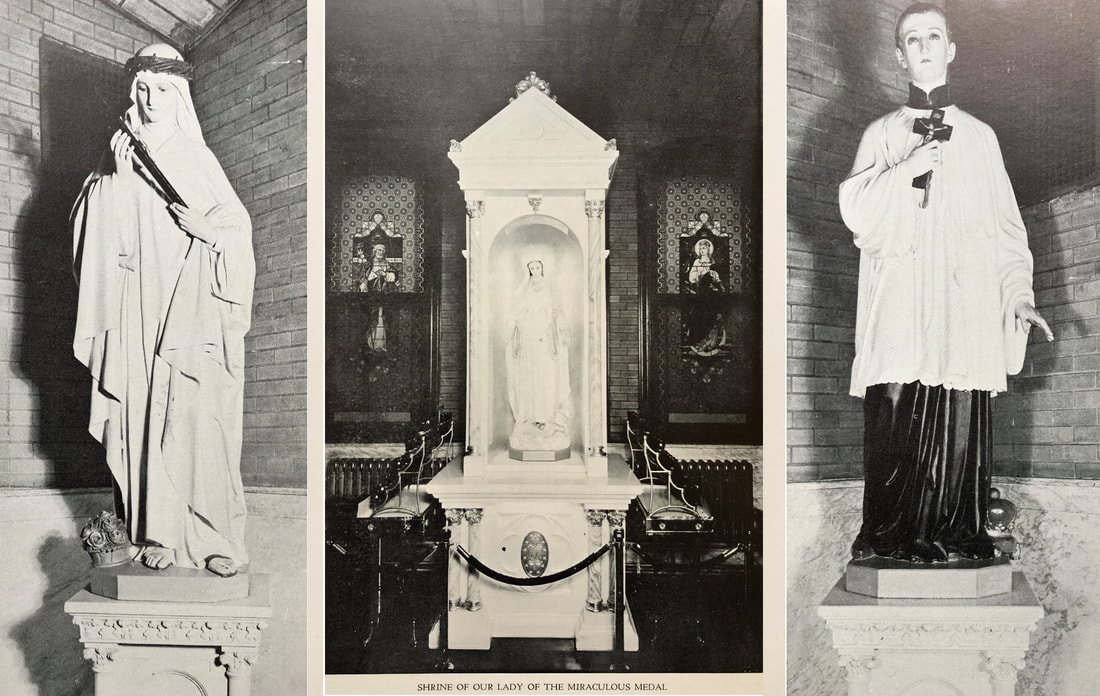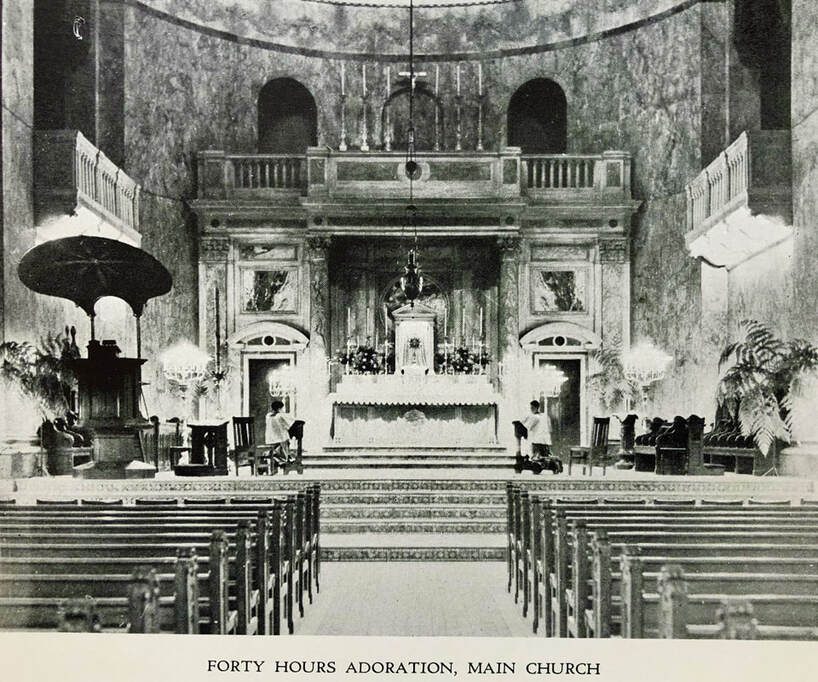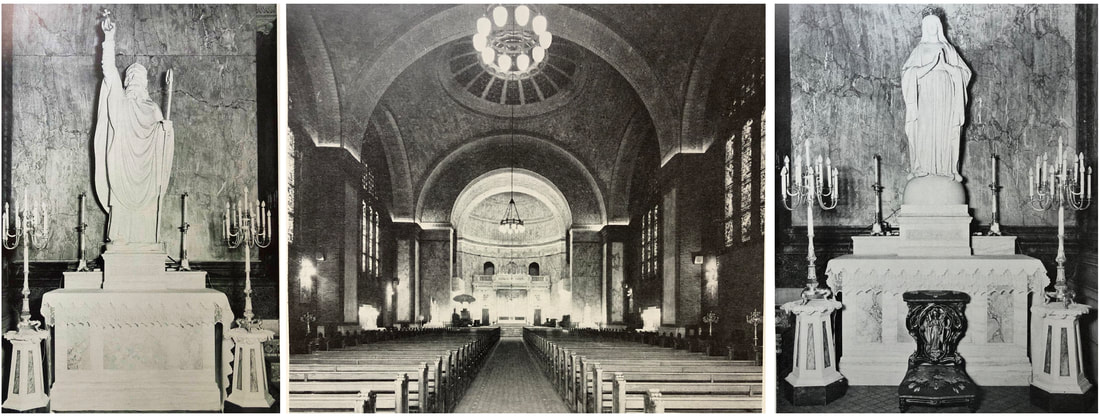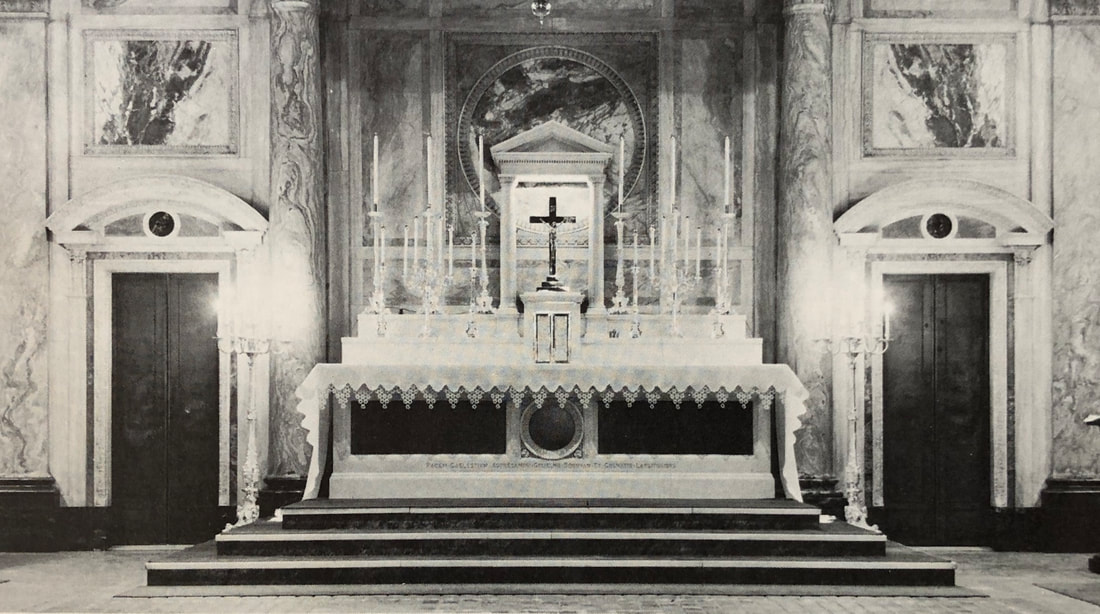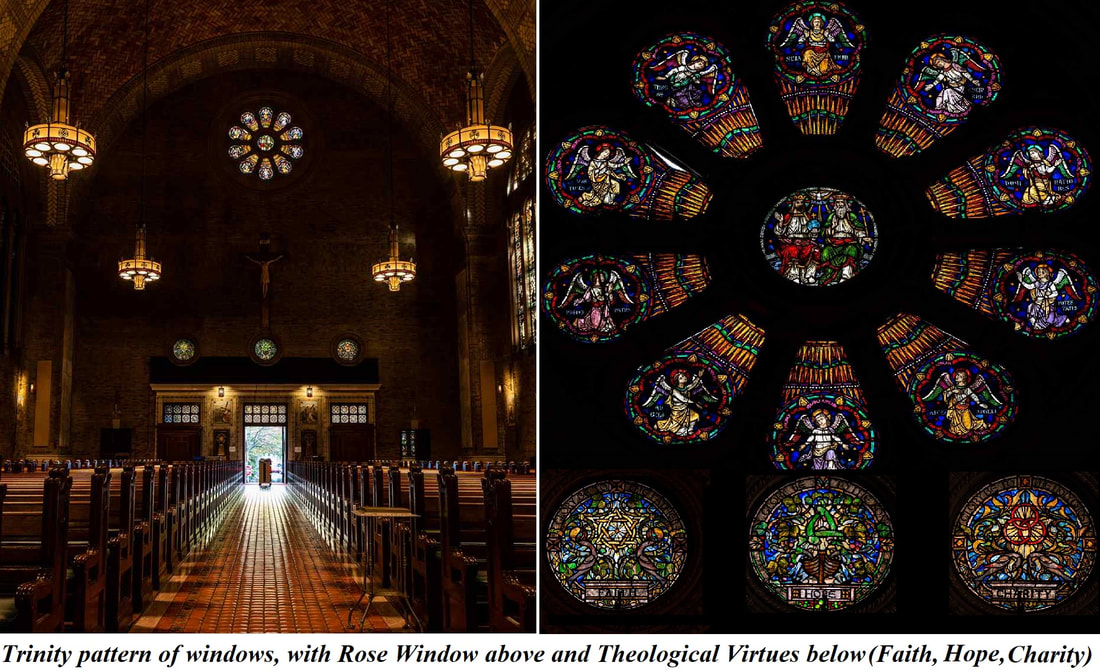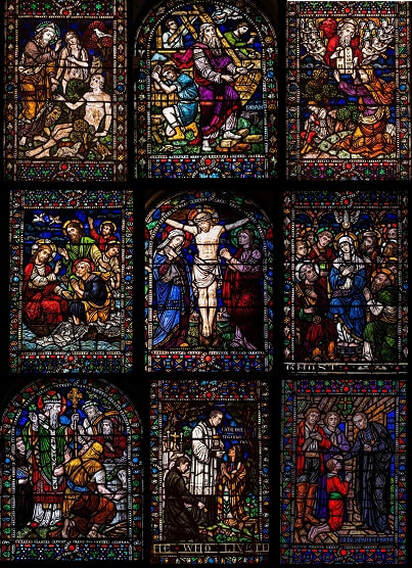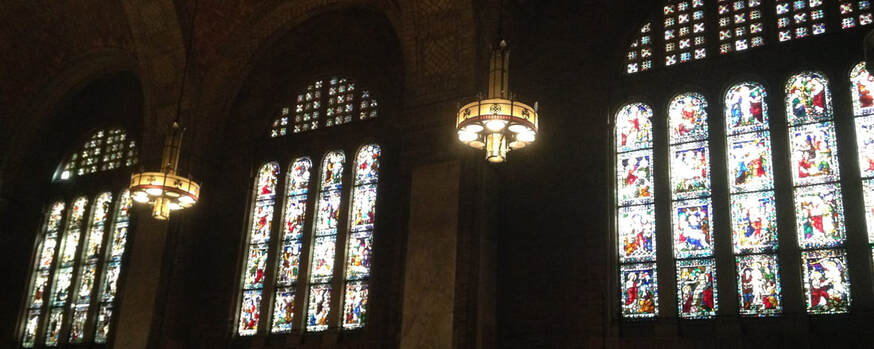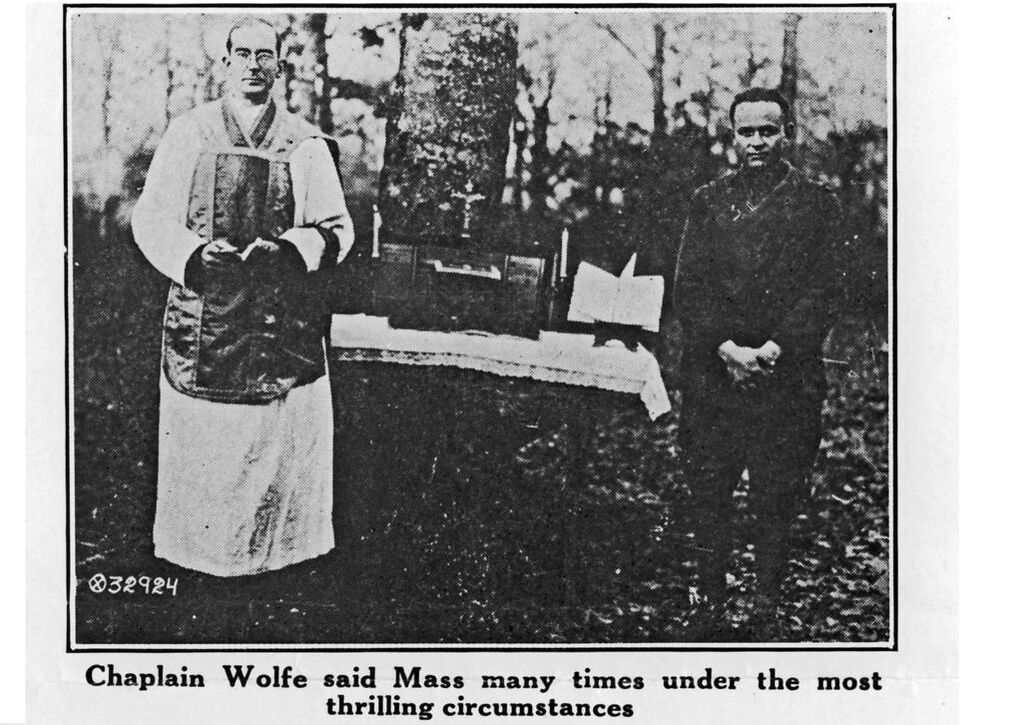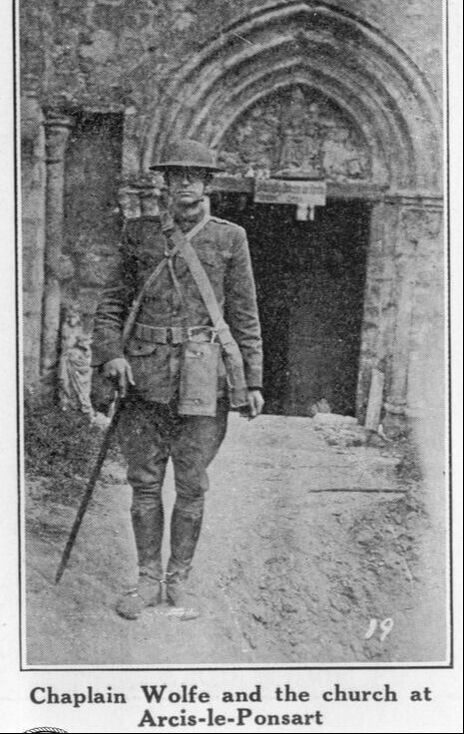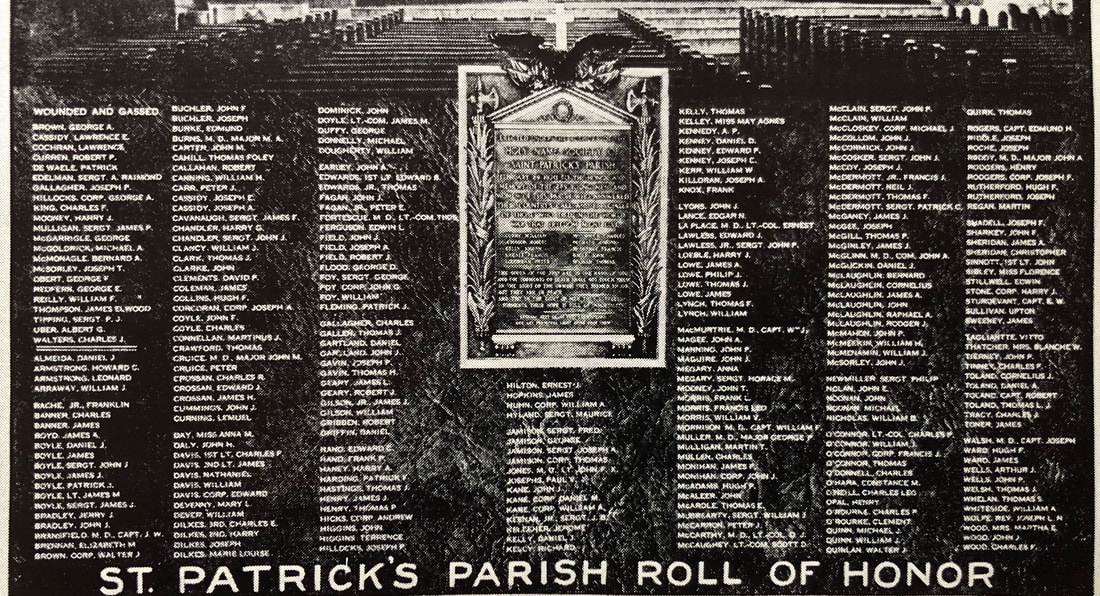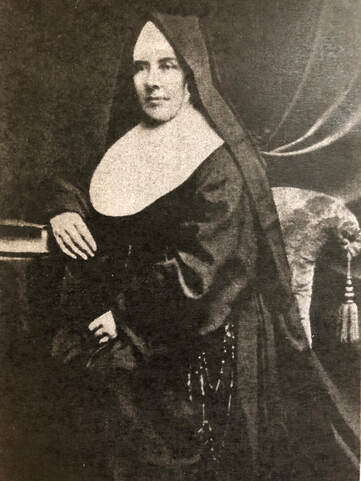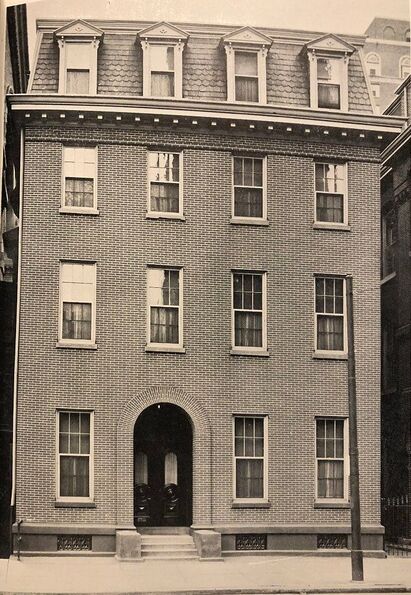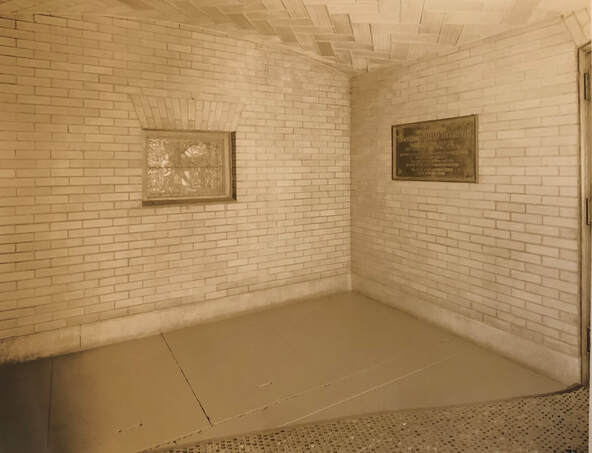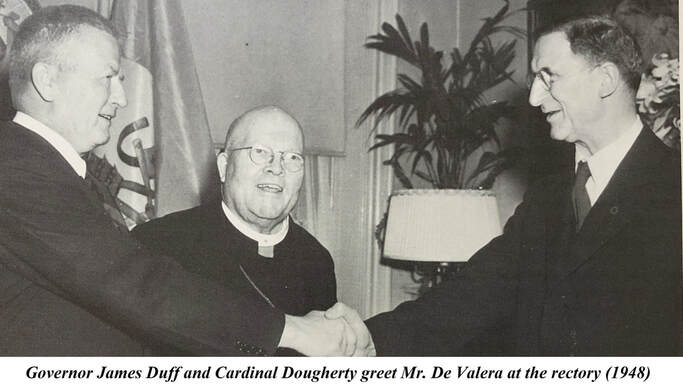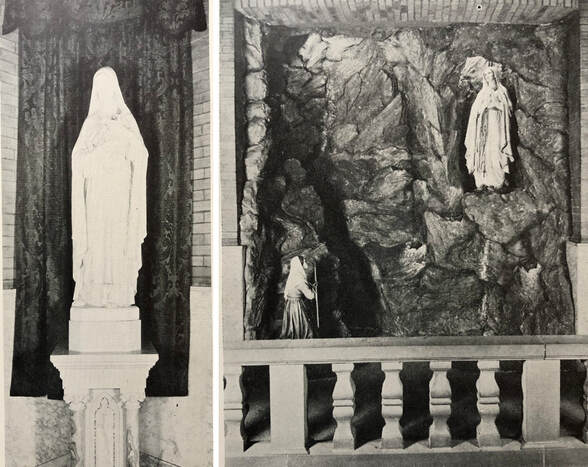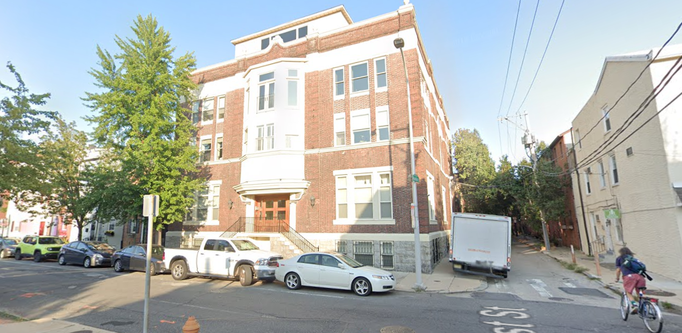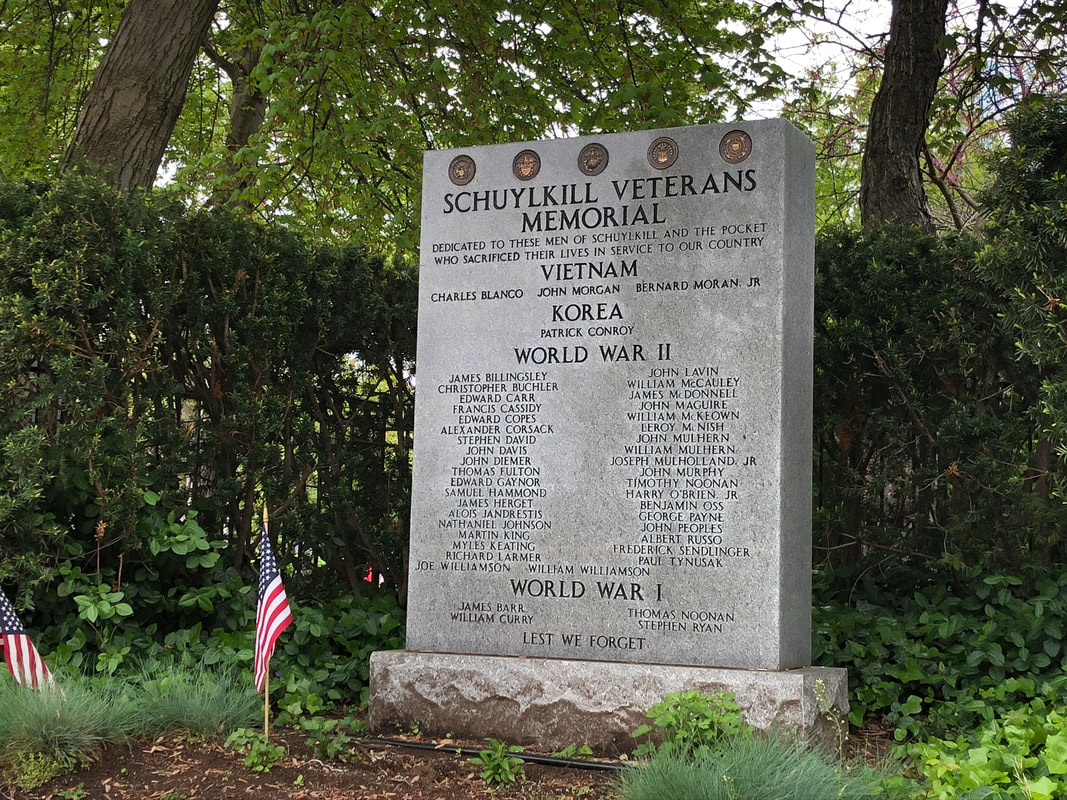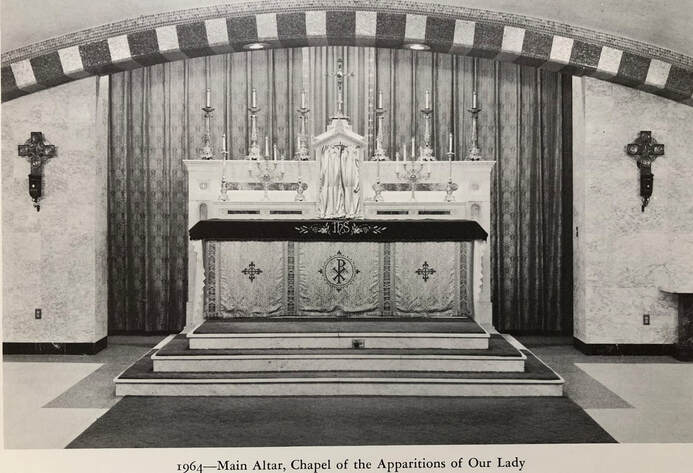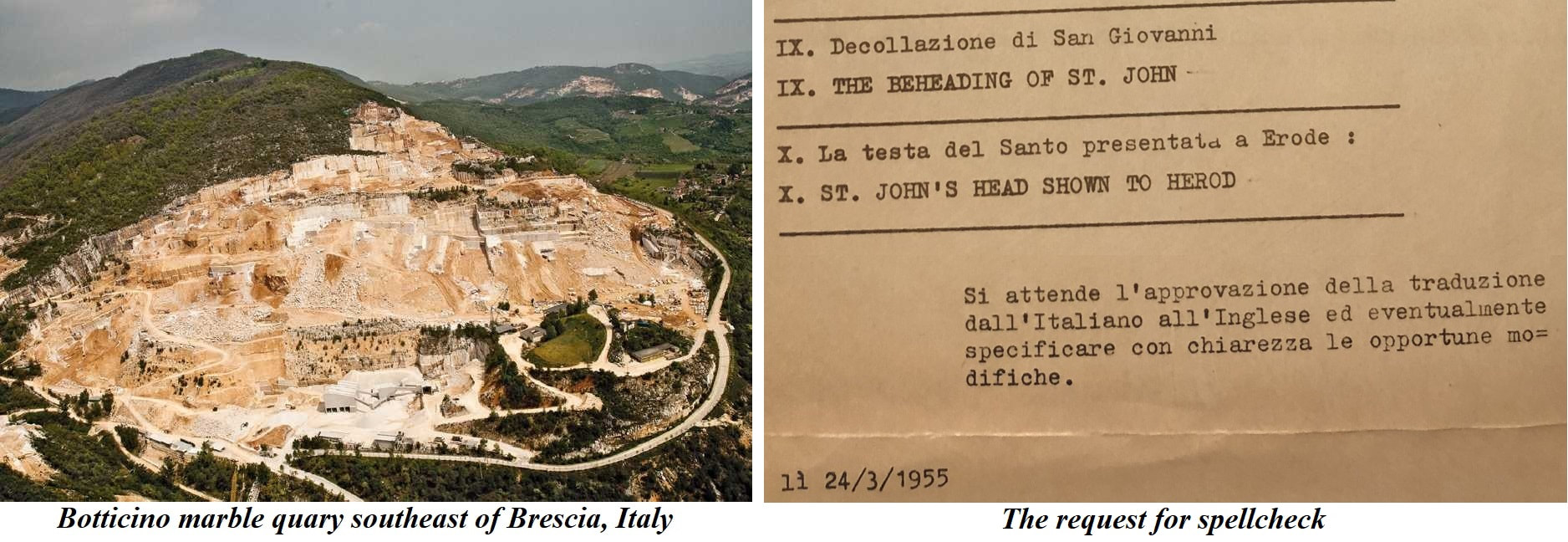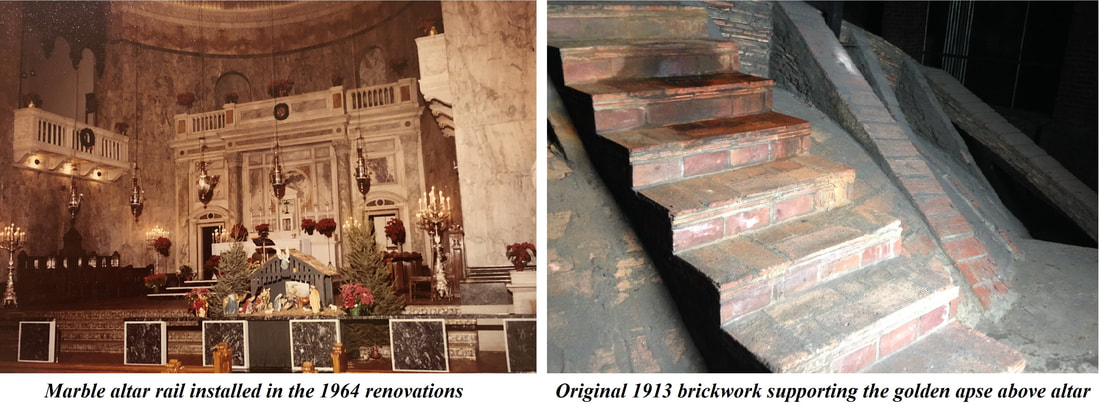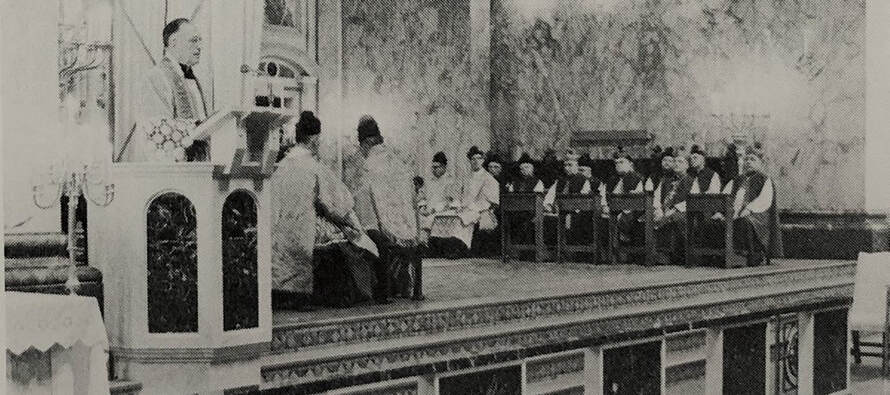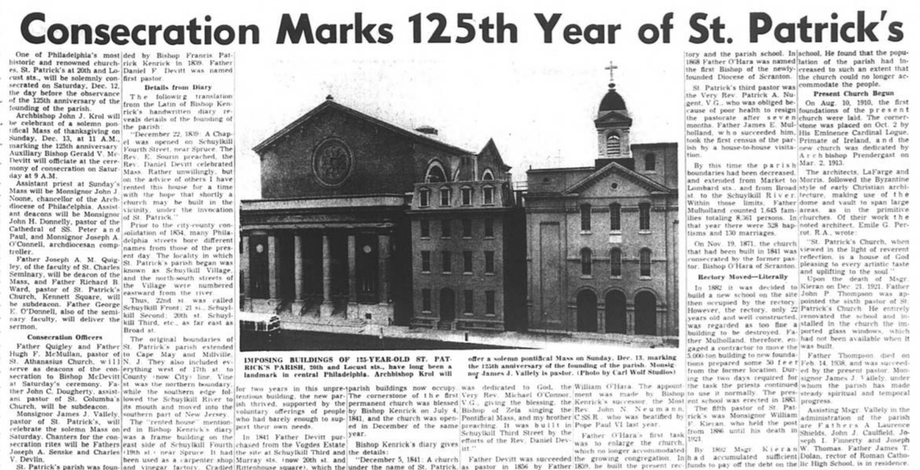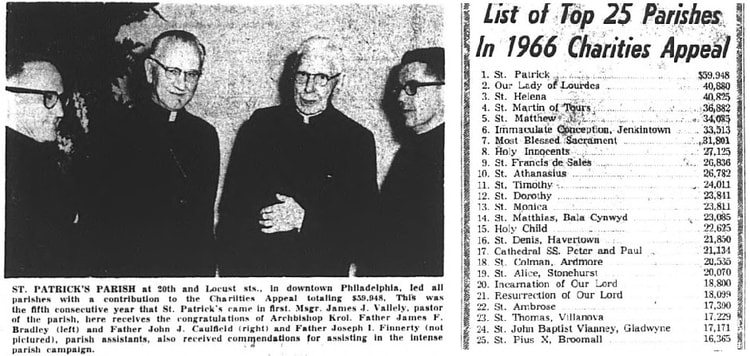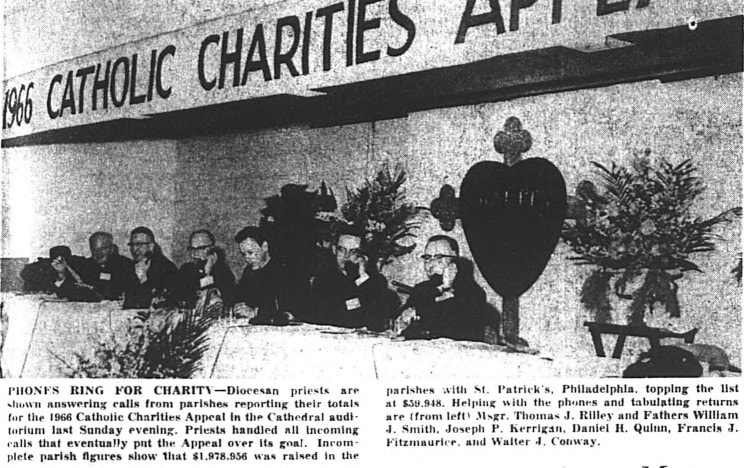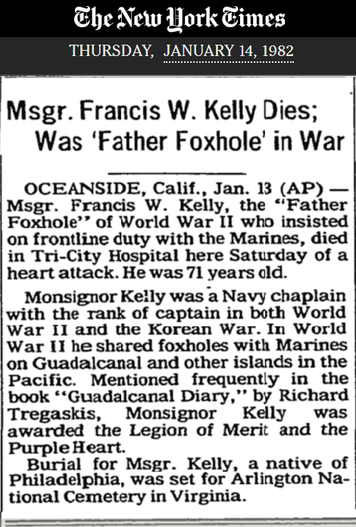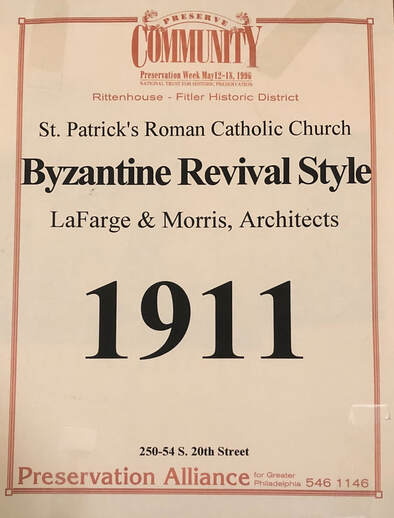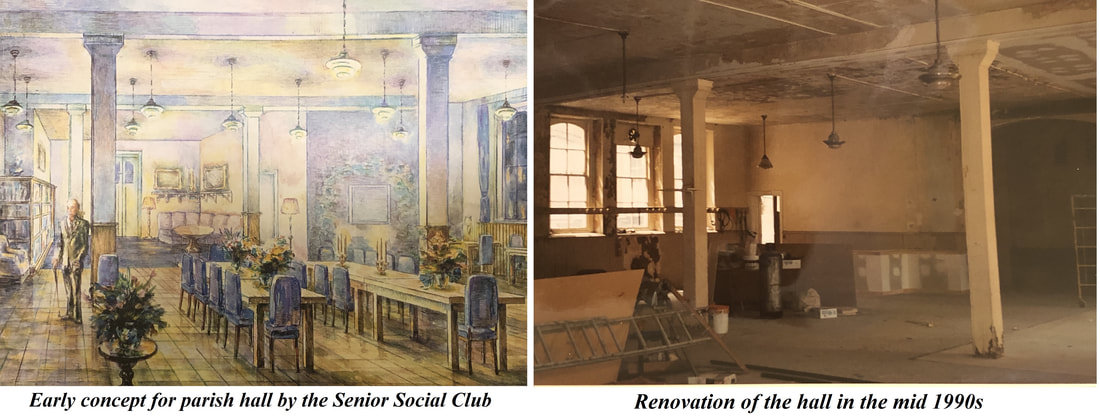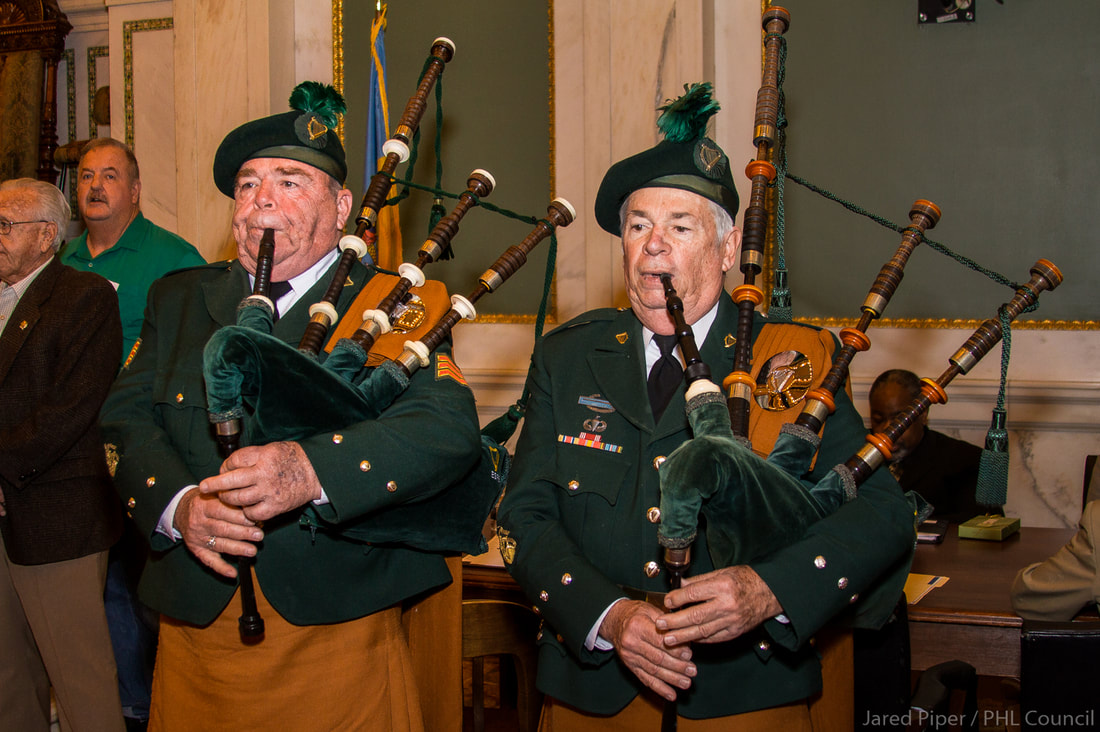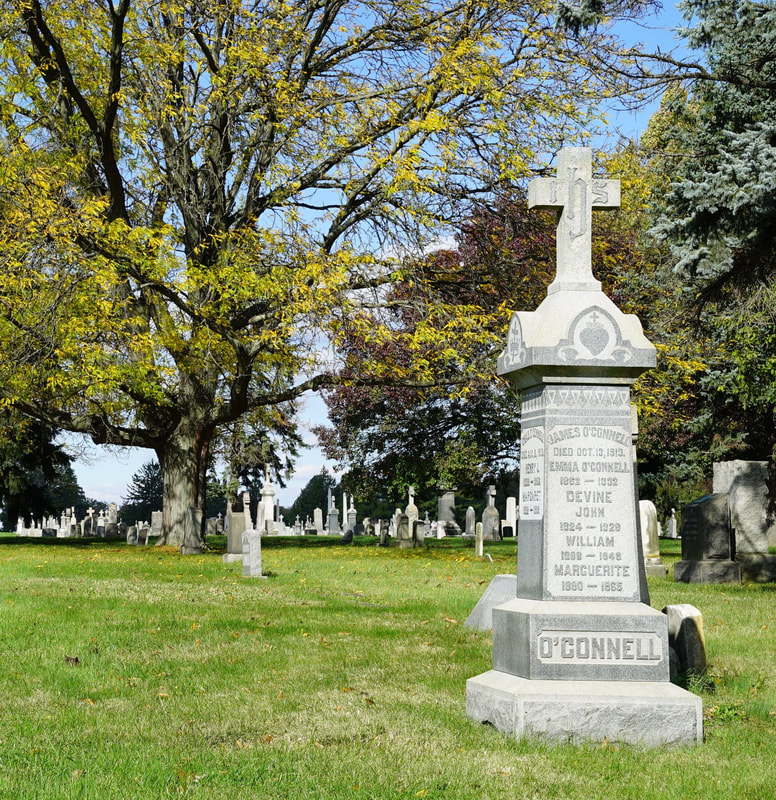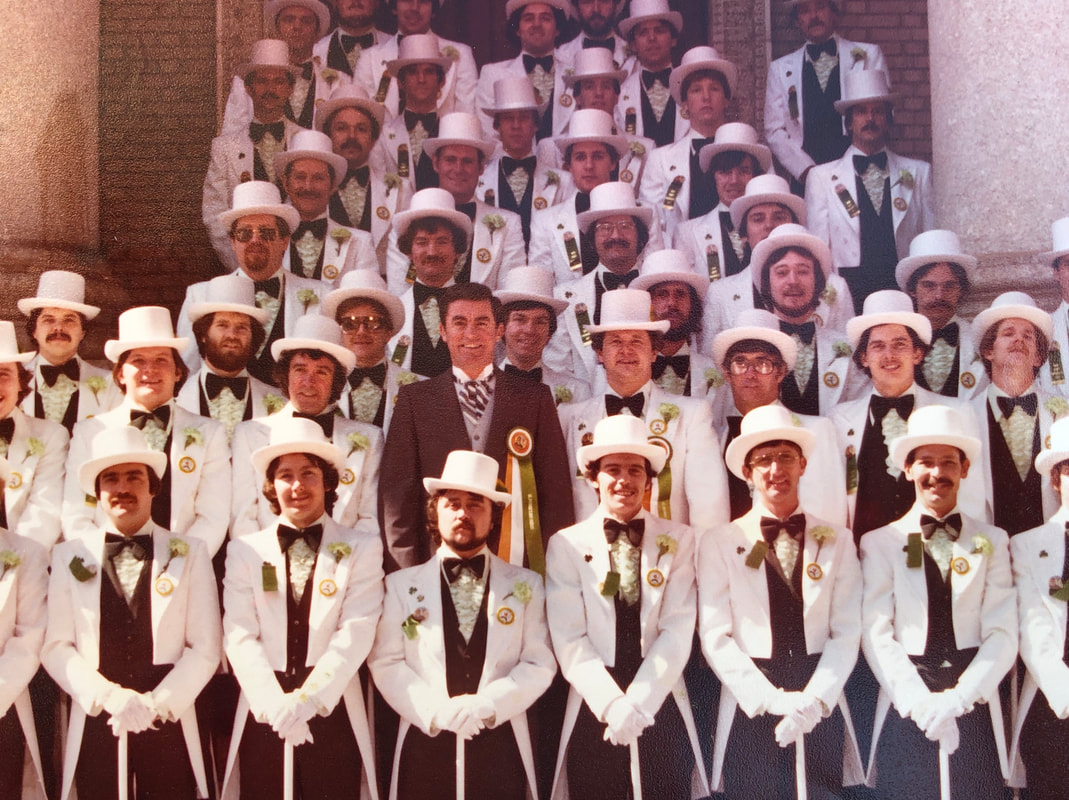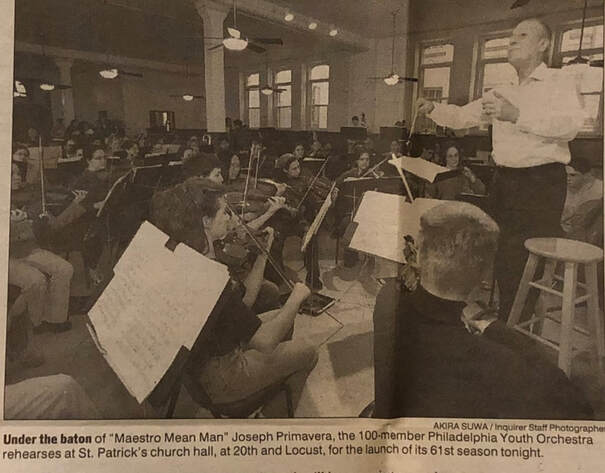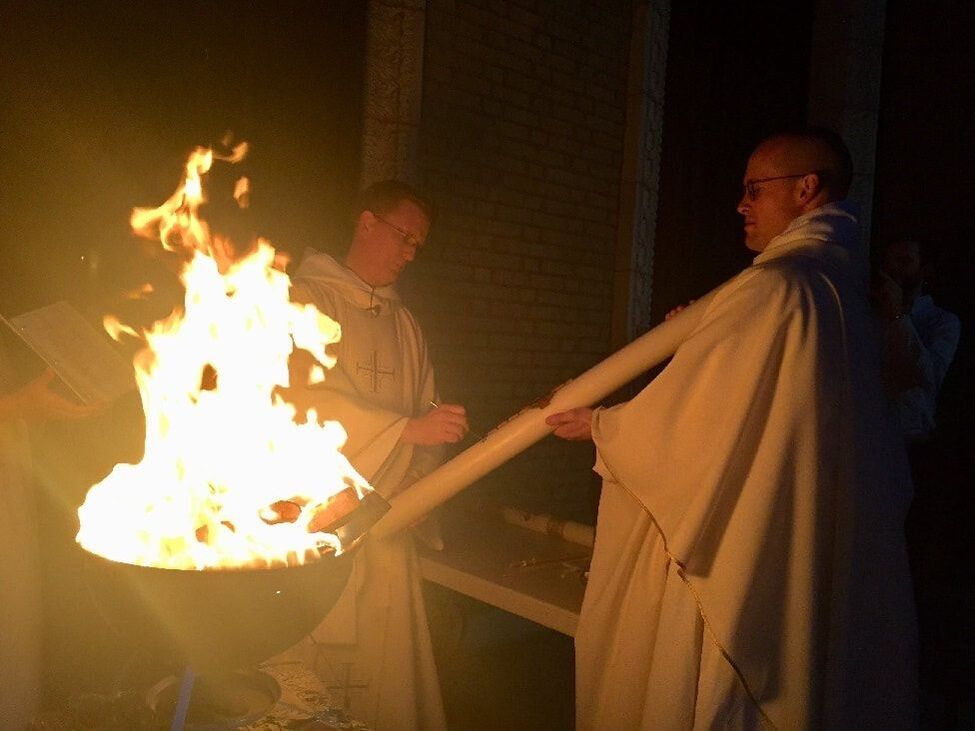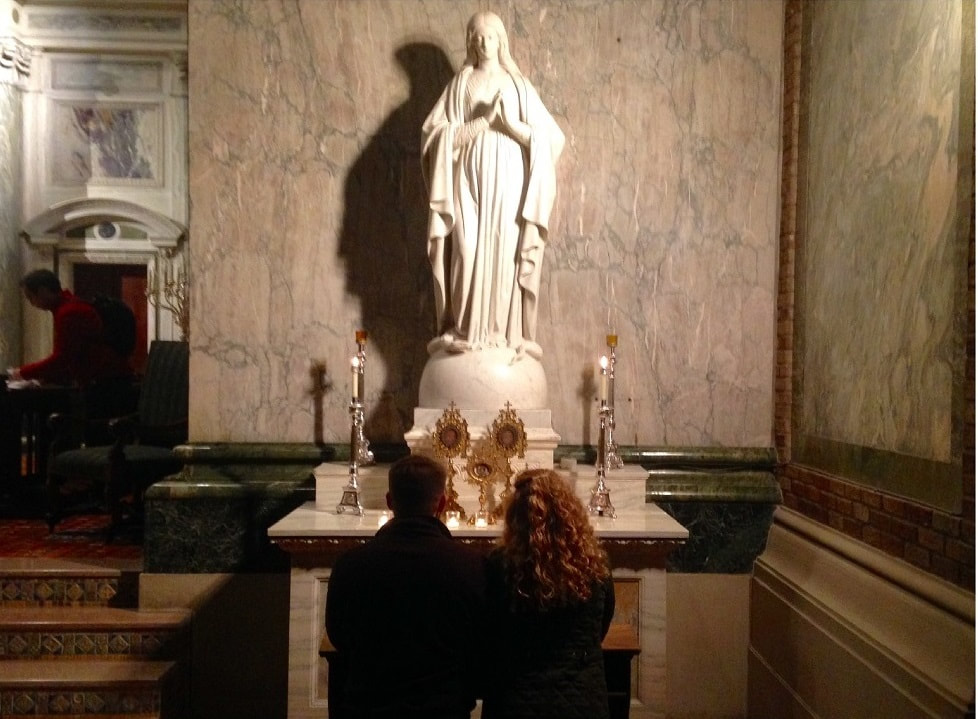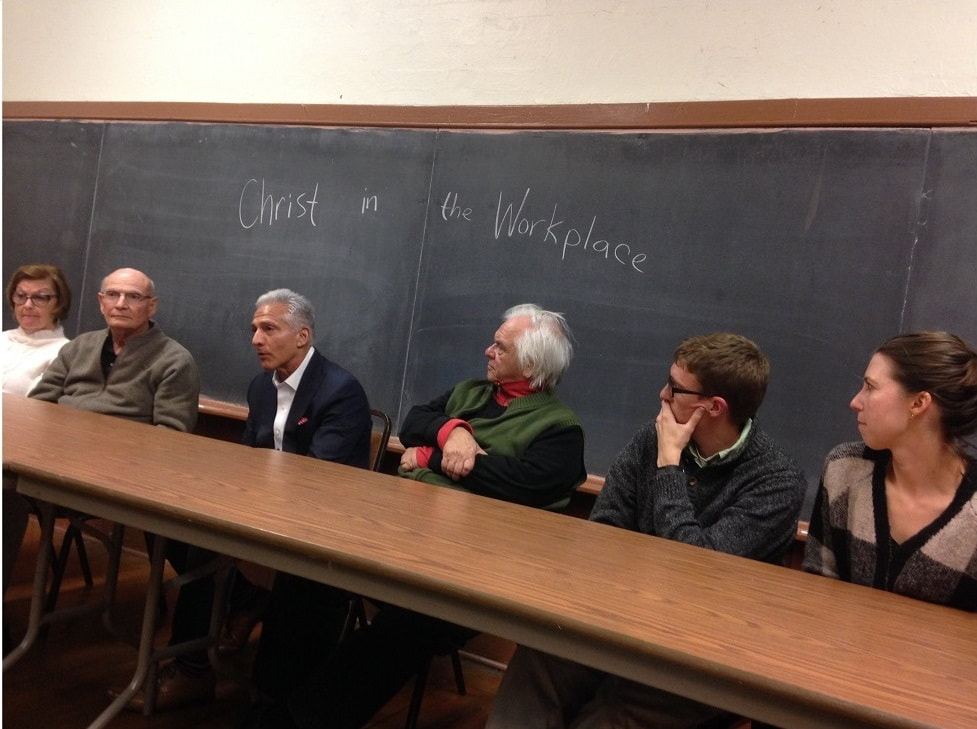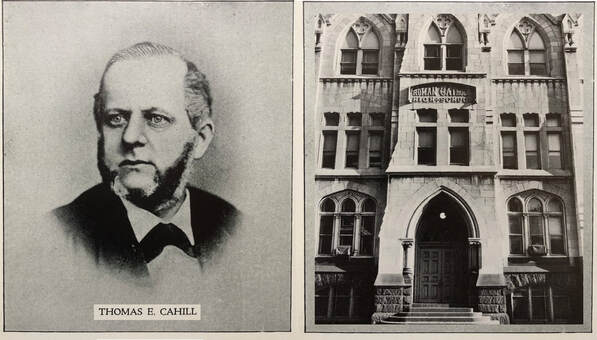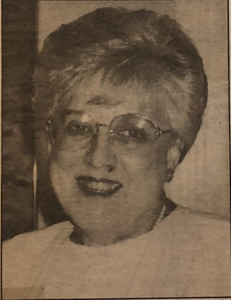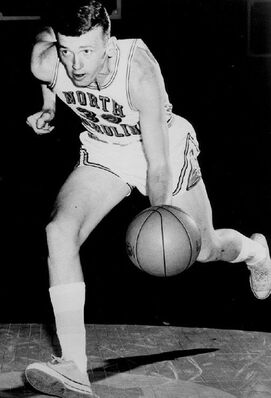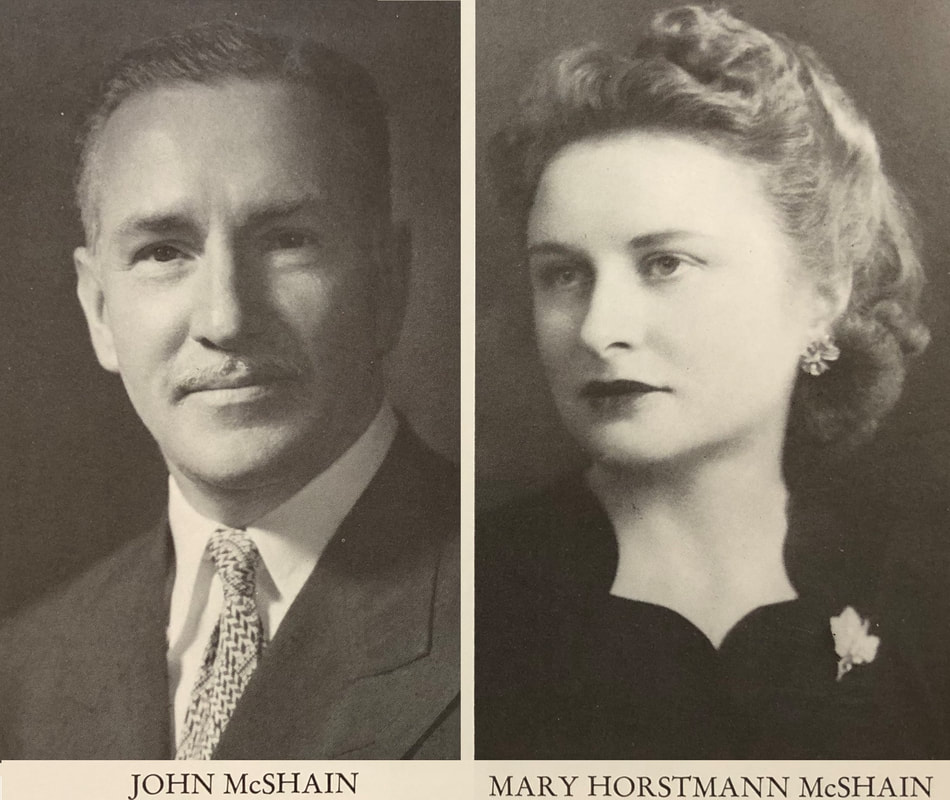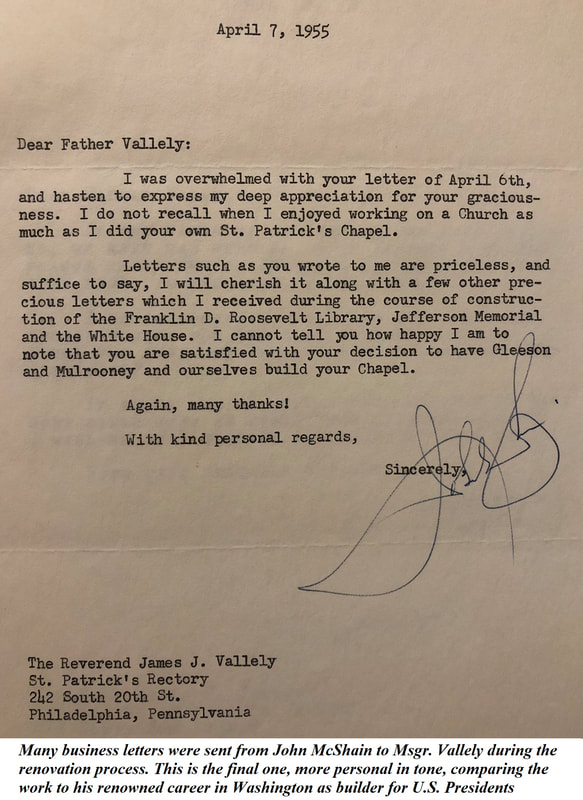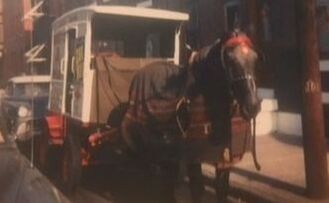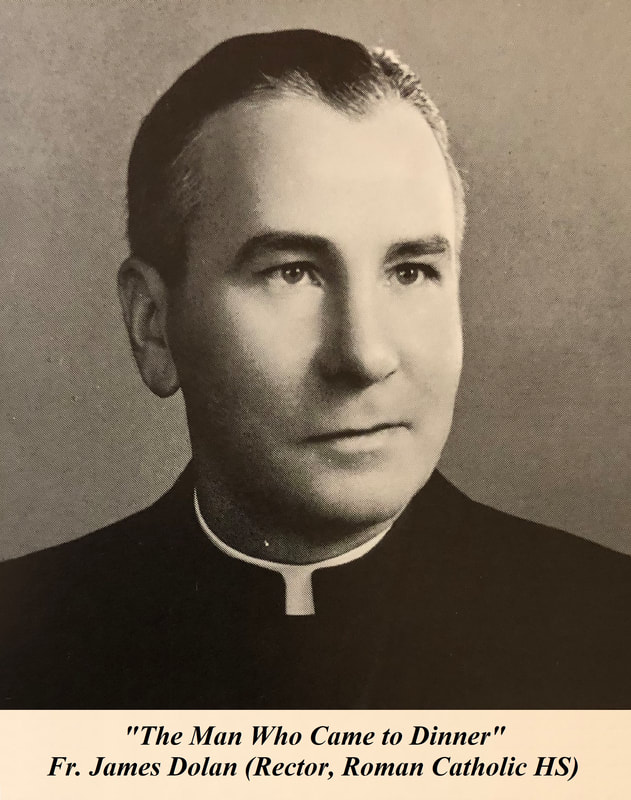|
|
|
Our Stained Glass Windows
|
To obtain a beautifully printed edition of our beautiful new Rosary booklet featuring stained-glass windows of St. Patrick Church for only $10 a copy, contact our parish office at [email protected] or call (215) 735-9900. You can also purchase a copy online through the link below and come by the office to pick up your order. |
|
Salvation History Windows
Upper Church |
|
Other Windows & Photos
Upper Church |
|
Christ With Me, Christ Before Me
A History of St. Patrick's Church (Founded 1839)
By Timothy Danaher, O.P.
From written and oral traditions
April 2020
____________________
From written and oral traditions
April 2020
____________________
Apology: I write this history for the people in our neighborhood who know it already, those who were born here and told me the stories which until now have lived only in their memories and deserve to be put on paper. I write this history for those in the people in our neighborhood only think of the Spread bagel shop or Ultimo Coffee, who just arrived and who walk past our church doors and all other row home doors and know nothing of the people that came before them. I write this history for myself, as I have recently arrived and recently realized that I live and serve in a place of immense history: local, international, religious, and civic. To look into the past, to open the door just a little, is to discover many things. I write this history because roots matter, and they teach us, as they help us breathe more deeply in an age when we are convinced that everything that happens is new, which is simply not the case. Glory to God. Jesus Christ is the same yesterday, today, and forever. (April 2020)
I. Bishop Kenrick and Early Dominicans
Bishop Kenrick, who founded the parish, wrote in his diary on December 22 of that year: "A chapel was opened in Schuylkill Fourth Street near Spruce. Fr. E. Sourin preached, the Fr. Daniel Devitt celebrated Mass... I have rented this house for a time, with the hope that in a short time a church might be built in the vicinity."
|
Kenrick was born in Dublin and had been educated in Rome, arriving there in 1814 during the heroic return of Pius VII from his years of captivity under Napoleon. He completed his studies at the Urbaniana college for missionaries, then was ordained a priest in 1821 and volunteered to serve in America. He taught seminarians Greek and History at St. Joseph's College in Bardstown, Kentucky. (This diocese was created along with Boston, New York, and Philadelphia on the same date, April 8, 1808, all new branches from Baltimore, our nation's first Catholic diocese.)
|
Here begin some surprising and providential ties to the Dominican Friars, who presently have care of St. Patrick's Church. In Kentucky, there were only a handful of priests, except for the Dominicans who lived down the road in Springfield. Here was their headquarters in the United States, founded in 1805 by Edward Dominic Fenwick, O.P., who later was named the first bishop of Cincinnati. He was one of those present to consecrate Kenrick a new bishop for Philadelphia in 1830, which happened in Bardstown before he left to begin work in this city. He had spent 9 years teaching, and after 9 more years as bishop he would found St. Patrick's Church on December 22, which is also the founding date of the Dominicans themselves since 1216. Another hint of providence is found in that the Knights of Columbus would soon purchase a building right next door to our parish (presently the Koresh Dance Company), named the San Domingo Council, the same saint who founded our Order.
The first Dominican priest arrived in Philadelphia in 1808, Fr. William Harold, O.P. of the Irish Province. He arrived to assist his fellow Irish Dominican, Luke Concanen, O.P., appointed the first bishop of New York. He, however, never set foot on American soil. Napoleonic blockades controlled the port in Naples, so from there he administered the diocese by letters to his mission priests, and there he died and was buried at the Church of St. Dominic. Harold was quickly recruited by Philadelphia’s first bishop, Michael Egan, O.F.M., who made him the first vicar general of the diocese and his groomed successor. The two fought, however, and the very outspoken Harold returned overseas in 1813. He would return again from 1820-1828 as collaborator with the second bishop, Henry Conwell, this time with fellow Dominican, John A. Ryan, O.P. Harold even served as pastor of Old St. Joseph’s during the Jesuit suppression!
This continued until the Hogan Schism divided everyone involved. Conwell had walked into a mine field. Since the death of Egan, the young diocese had been 6 years without a bishop. Technically its administrator was a German named Fr. Louis de Barth, who had refused the offer of bishop, lived in New Jersey, and was cold towards the Irish. The diocese carried on with the service of a variety of mission priests, some stray diocesan priests and other Franciscans or Cistercians fleeing Europe’s attacks upon monasteries in that era. (The British Colonies were served by an array of roaming priests, a good example of which is the Trappist, Fr. Jeremiah O’Flynn, who’s political and religious journeying mimicked Gulliver’s Travels, setting off from Ireland, then onto Rome, Australia, Philadelphia, Santo Domingo, and his final years were spen in, you guessed it, Susquehanna County. The first 186 priests to serve in the colonies, however, were all Jesuits, based in Maryland ever since first Mass was celebrated at St. Clement’s Island by Fr. Andrew White, S.J. on March 25, 1634. This changed with their suppression in 1773. The priests at Old St. Joseph’s acquired diocesan status but left for Georgetown in 1799.)
At last, in 1820, Conwell was named, a life-long Irishman who was then 75 years old, the age today at which all bishops must submit to the Holy See their retirement letter. His rival to which he recently lost in vying for the See of Armagh commented on the American news that he wouldn’t be more surprised if he was named as Emperor of China. The brand new geriatric bishop arrived on these shores fairly blind, in poor health, worried over personal finances, and about to face the trustees.
Bishop Carroll had imitated the Episcopalian structure of having parish trustees, but their decisions did not extend to hiring or firing pastors. At St. Mary’s Church, Fr. William Hogan was the most favored, known for insulting other priests in his sermons and also for building his own private residence. When Conwell ordered he return to live at the clergy house, the trustees reacted by firing all priests from the board, electing Hogan their pastor, and banning the bishop from setting foot in his own cathedral. They also wrote a letter to all surrounding Catholics to break away with them and form a new American Church. Hogan was, understandably, stripped of his faculties. Elections for a new pastor the next year resulted in a brawl, which included throwing bricks, finally broken up by the police. Pius VII eventually wrote a letter reprimanding the St. Mary’s trustees, asking for their reorganization.
Tangled up in the affair were other priests who weighed in with opinions. One was Harold’s own uncle, Fr. James Harold, a diocesan priest once shipped off to Botany Bay for conspiracy against Britain and now present and money-grubbing and not helping achieve any peace. Another was a Spanish Franciscan named Friar Rico, who was a canon lawyer, but worked most weekly hours in the city as a cigar salesman. Neither quite helped the cause. In 1826, Conwell signed a truce with the trustees, splitting the difference with them recommending pastors and he approving. It was enough to get him summoned to Rome and removed forever from administration of his diocese. It also separated him from Harold and Ryan. The two Dominicans stayed on to serve in parishes, until Bishop Fenwick of Cincinnati arranged for their Order in Rome to assign them to his diocese. They appealed to Secretary of State Henry Clay that their rights were violated, but when the appeal fell flat, they returned to Ireland again. Harold would become Irish Provincial later in life. The next Dominican arrival to Philadelphia was Fr. John Dominic Berrill, O.P., the founding pastor of St. Dominic Parish in 1849. As a community, Dominicans first arrived at Holy Name of Jesus Church in Fishtown, serving from 1912-1998, as well as teaching at La Salle University and St. Charles Seminary.
Francis Kenrick was the one to pacify the diocese at last. Conwell traveled to Kentucky to ordain him as coadjutor bishop (but also apostolic administrator, i.e. the one who held the keys now). The two sailed north up the Ohio River (past my hometown of Steubenville, Ohio), and they disembarked in Pittsburgh which was then the western edge of the Philadelphia Diocese. By stagecoach, and with many stops to preside over Confirmations and new church dedications, they traveled east across the state towards Philadelphia. The city then boasted only 10 priests and 4 churches: Old St. Joseph's (founded by the Jesuits), St. Mary's (a new branch of that parish), Holy Trinity (for German immigrants fleeing the Napoleonic Wars), and St. Augustine (built by the friars of that order). 12 other churches fell in the diocese’s vast boundaries which covered all of Pennsylvania, Delaware, and southern New Jersey. St. John’s would soon be built as a larger cathedral. Given the Hogan Schism recounted above, Kenrick immediately suspended Mass at St. Mary's until order was restored. By the next year of 1832, he established St. Charles Borromeo Seminary in his own residence (then on Fifth Street, between Spruce and Pine, now the site of CVS pharmacy) with the reception of the diocese’s first seminarian, Patrick Bradley, and two others, all from Ireland. All of this early history happened in what is today Old City and Society Hill.
II. St. Patrick's Church Established
In 1839, St. Patrick’s Church was established in response to Irish families moving west and working on unloading coal barges on the Schuylkill River and building houses along Manning Street. This was a good distance west of the city center, and it was commonly called “The Village” or going “Out Schuylkill.” It wouldn’t be until 1840 that James Harper built the first house on Rittenhouse Square itself (the 1811 Walnut Street mansion which stands to this day) thus inaugurating the movement of wealthy families westward. Previous to then, the square had been designated a park by William Penn but left feral as deer and fox hunting grounds, until the area was roped off and again left mostly for grazing cattle and chickens, surrounded soon after by clay pits and various company kilns for brickmaking.
It was the home of Paul Reilly, a local law clerk, which can rightly be called the foundation of our parish. One evening in 1839, he called together his Catholic neighbors to discuss forming a parish, and they at once petitioned Bishop Kendrick. Being Irishmen, they requested St. Patrick as the patron of their church. This was also an appeal to the bishop’s middle name of Patrick, seeing as he had recently founded St. Francis Xavier church just north of us which bears his first name. Their letter also uses the language of a “free church” with no rented pews for the wealthy (a common feature among city churches), and it suggested the church be located in Goosetown, slightly uphill from the river, so that it would sit among Protestant homes and less likely of being burned! Although anti-Catholic riots wouldn’t break out in Philadelphia until 1844, already the sentiment was in the air, especially since the 1834 convent burning of the Ursuline sisters in Boston.
Soon, Kenrick leased a house on the east side of 19th Street, between Manning and Spruce (just north of what is today Marathon Grill on the Square). The house was an original U.S. Navy Yard home, whose frame had been transported by a man named Stephen Kingston across the city, the military base then being at Federal Street and the Delaware River. It had first operated as a carpenter's shop and vinegar factory, but on December 22, 1849, the first Mass in this new chapel was celebrated by Fr. Daniel Devitt.
It was the home of Paul Reilly, a local law clerk, which can rightly be called the foundation of our parish. One evening in 1839, he called together his Catholic neighbors to discuss forming a parish, and they at once petitioned Bishop Kendrick. Being Irishmen, they requested St. Patrick as the patron of their church. This was also an appeal to the bishop’s middle name of Patrick, seeing as he had recently founded St. Francis Xavier church just north of us which bears his first name. Their letter also uses the language of a “free church” with no rented pews for the wealthy (a common feature among city churches), and it suggested the church be located in Goosetown, slightly uphill from the river, so that it would sit among Protestant homes and less likely of being burned! Although anti-Catholic riots wouldn’t break out in Philadelphia until 1844, already the sentiment was in the air, especially since the 1834 convent burning of the Ursuline sisters in Boston.
Soon, Kenrick leased a house on the east side of 19th Street, between Manning and Spruce (just north of what is today Marathon Grill on the Square). The house was an original U.S. Navy Yard home, whose frame had been transported by a man named Stephen Kingston across the city, the military base then being at Federal Street and the Delaware River. It had first operated as a carpenter's shop and vinegar factory, but on December 22, 1849, the first Mass in this new chapel was celebrated by Fr. Daniel Devitt.
|
The first baptism took place during that Mass, that of Susanna Patricia O'Brien, who would later take the name Sr. Evangelista, I.H.M. and serve as a school teacher and local superior in neighboring counties. The first parish wedding was on New Year’s Day of 1840 between Charles Kennedy and Margaret Clark. By that fall, the house was opening on weekdays as St. Patrick’s School. In the 2 years that St. Patrick’s Church operated on this site, there are recorded 331 baptisms and 60 marriages.
Fr. Devitt, himself a Society Hill native, was only 23 years old and 3 months ordained a priest when named pastor of the new parish. He had taken Latin classes from Kenrick as a youth, and unlike the other Irish and English seminarians, he was the diocese’s first native vocation (and first native ordained priest). He was sent to study at the Urbaniana in Rome, which Kenrick had also attended. By then, it was not only a place of training for priests going to mission lands such as America, but also for seminarians coming from those lands, as in the case of Devitt. He returned to Philadelphia for ordination, Kenrick imposing hands upon him at the diocese’s second cathedral, St. John the Evangelist, then off he went down Schuylkill. He lived with Paul Reilly (mentioned above) until a rectory was built 6 years later in 1845. He also served in mission churches at this time. |
St. Patrick’s parish boundaries extended north to Vine Street north, to all of West Philadelphia as far as Overbrook, south along both banks of the Schuylkill River, and even extending through southern New Jersey as far as Cape May. Baptism records exist for Devitt’s journeys to 3 of the parish’s mission churches, in Leiperville (near Widener University) and also Port Elizabeth and Millville, NJ (the childhood home of MLB star, Mike Trout). He was assisted for a time by his seminary classmate, Fr. Joseph Ignatius Balfe, before he was transferred to full-time teaching at the seminary, by then located at 18th and Race Street, the same site of the present cathedral rectory. Two other priests would assist Devitt in the first years, both Fr. Andrew Gibbs and Fr. William O’Hara, later named the first bishop of Scranton.
St. Patrick’s boundaries were extended in 1841 to cover all of South Philly, much of which was a farming region. Our parishioner Glenn Johnson still remembers that his relatives, the Rogers family, operated a large farm on Broad Street near the present sports stadiums well into the 1950s. Over time, our boundaries would be reduced when more parishes were established: the north reduced to Market Street by the Cathedral of SS. Peter and Paul, established 1849; the west reduced to the Schuylkill River by St. James Church, established 1854; the south reduced to South Street with 1880s Italian immigration to South Philly and subsequent building boom across the city; nearby neighborhoods were given to St. Charles Borromeo Church and St. Anthony’s Church, established 1868 and 1886. The first would later become a black Catholic community, while the second would be a poorer Irish parish and close its doors in 1999. To the west, we have always kept a similar boundary with St. John the Evangelist.
III. Old St. Patrick’s
Still, in 1841, St. Patrick’s had no proper church. On June 1, Devitt finally purchased a new plot of land for $6,000 as a construction site of a proper church ($150,000 today with adjusted inflation), approved by a parish council meeting on June 5. A month later, the great celebration of July 4 saw the laying of the cornerstone by Kenrick, and a sermon was preached by Fr. Patrick Moriarty, O.S.A., who was a missionary to India and founder of Villanova University. A collection was then taken up among the crowd after the sermon! The building, measuring at 60x100ft, was designed in brick by Napoleon LeBrun, the same architect who would go on to build our present cathedral. LeBrun was a Philadelphia native who apprenticed under Thomas Ustick Walter, later to be the architect of the United States Capitol. After setting up his own office, LeBrun designed churches, courthouses and prisons in neighboring counties, and notably Philadelphia’s Academy of Music, still in use on Broad Street and home of the Pennsylvania Ballet and Opera. His first church was St. Philip Neri across town, which is still standing today and a great example of what our first church was like.
Old St. Patrick’s church, as it is now called, was quickly completed by December 5, 1841, a mere 6 months since the piece of earth on which it stood was purchased. It would take 23 years to pay the mortgage, reflecting the poverty of the parish in that age. Though dedicated, the church was far from complete, having no stained glass and no pews, but some benches alone for seating. That day, the prayer of dedication was made by Kenrick’s vicar general, Fr. Michael O'Connor, originally of County Cork: “Pour out, O God, Thy grace upon this place of prayer, so that all who call upon Thy name therein, may feel the effects of Thy mercy.” The Solemn Mass which followed was presided by Bishop Peter Lefebre of Detroit and preached by Kenrick’s brother, Peter Richard, his first homily as newly consecrated bishop of St. Louis. Sadly no record of that first homily exists. (These men’s paths in years ahead help give a sense of how missionary the American Church still was. O’Connor, for example, would become the first bishop of both Pittsburgh and Eerie, then resign to join the Jesuits in later life. His brother, James, was the first rector of the seminary in Overbrook and would become first bishop of Omaha.)
Old St. Patrick’s church, as it is now called, was quickly completed by December 5, 1841, a mere 6 months since the piece of earth on which it stood was purchased. It would take 23 years to pay the mortgage, reflecting the poverty of the parish in that age. Though dedicated, the church was far from complete, having no stained glass and no pews, but some benches alone for seating. That day, the prayer of dedication was made by Kenrick’s vicar general, Fr. Michael O'Connor, originally of County Cork: “Pour out, O God, Thy grace upon this place of prayer, so that all who call upon Thy name therein, may feel the effects of Thy mercy.” The Solemn Mass which followed was presided by Bishop Peter Lefebre of Detroit and preached by Kenrick’s brother, Peter Richard, his first homily as newly consecrated bishop of St. Louis. Sadly no record of that first homily exists. (These men’s paths in years ahead help give a sense of how missionary the American Church still was. O’Connor, for example, would become the first bishop of both Pittsburgh and Eerie, then resign to join the Jesuits in later life. His brother, James, was the first rector of the seminary in Overbrook and would become first bishop of Omaha.)
Societies soon began to spring up in the parish, dedicated to the Scapular, the Rosary, Our Lady of Mercy in service of the poor, and also the wordy but essential society of the Eucharstic League of the Sacred Heart. Finances, however, were tight. Various fundraising efforts were organized closer to center city at the Philadelphia Museum, such as a fair held in the Chinese Salon selling “articles beautiful and numerous, to aid St. Patrick’s Church out of its difficulties.” There were also ticketed lectures pitched to Hibernian societies, and Fr. Ryder, S.J. of Holy Cross College preached vespers with a collection to follow.
IV. St. Anne's Mission and Nativist Riots
St. Patrick’s was constructed during a 5-year depression known as the Panic of 1837, when national finance markets collapsed, due in large part to railroads springing up and leaving behind major investors in a growing eastern canal system, quickly abandoned and left unfinished. Locally, coal began to be transported by new railroads directly to Port Richmond, northeast of the city, bypassing the entire river barge system. Many parishioners, making their wage as dock workers, were now forced to either commute daily to the new site, or to move their families, as many indeed did. When the local Catholic parish, St. Michael’s, was burned to the ground by the Protestant Know-Nothing riots of 1844, Devitt petitioned the diocese to send another priest to found a mission church there. Told no priests were available, he himself took up the task of establishing yet another mission church.
He journeyed weekly to say Mass, first in a public school (by permission of a Protestant board member) until he then purchased a plot which was to become St. Anne’s church. The cornerstone was laid in 1845 by Very Rev. F.X. Gartland, the pastor of the cathedral St. John the Evangelist and later the first bishop of Savannah in 1850. Fr. Devitt continued as pastor for a year, until the diocese finally assigned Fr. Hugh McLaughlin.
A story is told of a couple knocking on the rectory door one night during a thunderstorm, May 18, 1856. Seeing that the woman was in labor, Fr. McLaughlin admitted them, and she gave birth to a boy. Though both parents were Episcopalian, they asked to have him baptized Catholic in honor of the pastor’s generosity. The mother soon died, and the father moved west of the city with his son, Samuel Vauclain, the future inventor of the Vauclain compound locomotive and millionaire president of Baldwin Locomotive Works, then the largest producer of steam locomotives. Fr. William Cambell, in drafting the 1965 parish history book for St. Patrick’s, recorded this story from an oral tradition he heard from an old man from Port Richmond, whom he calls “a reliable source in all my dealings with him.”
The present church of St. Anne’s was built later in 1870, a so-called “fortress of faith” and built low to the ground and with rooftop walkways, as better defense against any future attacks. Much of the interior decor was lost in a 1947 fire.
He journeyed weekly to say Mass, first in a public school (by permission of a Protestant board member) until he then purchased a plot which was to become St. Anne’s church. The cornerstone was laid in 1845 by Very Rev. F.X. Gartland, the pastor of the cathedral St. John the Evangelist and later the first bishop of Savannah in 1850. Fr. Devitt continued as pastor for a year, until the diocese finally assigned Fr. Hugh McLaughlin.
A story is told of a couple knocking on the rectory door one night during a thunderstorm, May 18, 1856. Seeing that the woman was in labor, Fr. McLaughlin admitted them, and she gave birth to a boy. Though both parents were Episcopalian, they asked to have him baptized Catholic in honor of the pastor’s generosity. The mother soon died, and the father moved west of the city with his son, Samuel Vauclain, the future inventor of the Vauclain compound locomotive and millionaire president of Baldwin Locomotive Works, then the largest producer of steam locomotives. Fr. William Cambell, in drafting the 1965 parish history book for St. Patrick’s, recorded this story from an oral tradition he heard from an old man from Port Richmond, whom he calls “a reliable source in all my dealings with him.”
The present church of St. Anne’s was built later in 1870, a so-called “fortress of faith” and built low to the ground and with rooftop walkways, as better defense against any future attacks. Much of the interior decor was lost in a 1947 fire.
The 1844 Nativist Riots themselves were sparked by the 1837 establishment of the Public School System in America. Bishop Kenrick had requested from the city that Catholic students could use their own version of the Bible in class instead of the King James Version. This was approved by the local Whig party, but in response, a total of 94 Protestant clergymen joined together against this so-called Romanism. Animosity towards Catholics had already produced small incidents even in the neighborhood, as in the story told among parishioners that a bystander spat upon the cornerstone during its blessing ceremony in 1841. This spirit can be traced back to New England roots with the Adams administration, as well as the Second Great Awakening among many faith communities, a charismatic push in evangelical preaching, turning at times against neighboring Catholics. It’s worth saying, however, that the particular conflict Philadelphia was among Irish on both sides, the ancient Catholic-Orangemen divide from the old country revived here, as even the Protestant tune “Boyne Waters” was heard in the street those nights, along and cries of “to hell with the pope and O’Connell,” that is, Daniel O’Connell, the former Lord Mayor of Dublin who petitioned British Parliament for Irish Catholic seats.
The first riots broke out in the Kensington marketplace on May 6, provoked by a rally with preaching against “the influence of Popery and the miscreant Irish.” The rally soon turned into a mob, and fighting broke out when two Protestants were shot dead by Catholics from a nearby window. Gunfire was traded between men and women of both sides, which would claim 14 lives in a few days and injure over 50. Police were permitted by law only to operate within city limits, which then ended at Vine Street. Any activity north of there was left to state militia to handle. That first evening, militia did mobilize from the Wayne Artillery Corps, and with countless Catholic shops and homes in flames, about 200 families had fled west on foot down Jefferson Avenue until they reached the forest at 18th Street where they spent the night in the open. The next morning, a local judge asked Paul Reilly - the first man to petition Kenrick for a church and to house Fr. Devitt for many years - to organize St. Patrick’s parishioners in bringing relief to the families. So they arrived with carts full of blankets and food, continuing for many days. This site would providentially become the first Philadelphia convent of the Little Sisters of the Poor later in 1869.
Bishop Kenrick posted placards around the city to instruct Catholics: “I earnestly conjure you to avoid all occasions of excitement and to shut all public places of assemblage… Follow peace with all men and have charity without which no man can see God.” On the night of May 8, a crowd of rioters burned down St. Michael’s Church and the Sisters of Charity convent, then they moved south to burn St. Augustine’s Church, not to mention the library, school and friary, all ignited by a 14-year-old boy in the crowd. This transpired under the watch of the military police who stood by. Papers also noted how the mob threw rocks at the mayor, John Morin Scott, who was present, and how the crowd cheered when the church steeple fell. That site had ironically served as a hospital in the 1832 cholera outbreak, 80% of the patients being Protestant. “The next morning, passersby awoke to see the charred building burned away, with only a single painting above the place where the altar had stood: “The Lord Seeth.”
The first riots broke out in the Kensington marketplace on May 6, provoked by a rally with preaching against “the influence of Popery and the miscreant Irish.” The rally soon turned into a mob, and fighting broke out when two Protestants were shot dead by Catholics from a nearby window. Gunfire was traded between men and women of both sides, which would claim 14 lives in a few days and injure over 50. Police were permitted by law only to operate within city limits, which then ended at Vine Street. Any activity north of there was left to state militia to handle. That first evening, militia did mobilize from the Wayne Artillery Corps, and with countless Catholic shops and homes in flames, about 200 families had fled west on foot down Jefferson Avenue until they reached the forest at 18th Street where they spent the night in the open. The next morning, a local judge asked Paul Reilly - the first man to petition Kenrick for a church and to house Fr. Devitt for many years - to organize St. Patrick’s parishioners in bringing relief to the families. So they arrived with carts full of blankets and food, continuing for many days. This site would providentially become the first Philadelphia convent of the Little Sisters of the Poor later in 1869.
Bishop Kenrick posted placards around the city to instruct Catholics: “I earnestly conjure you to avoid all occasions of excitement and to shut all public places of assemblage… Follow peace with all men and have charity without which no man can see God.” On the night of May 8, a crowd of rioters burned down St. Michael’s Church and the Sisters of Charity convent, then they moved south to burn St. Augustine’s Church, not to mention the library, school and friary, all ignited by a 14-year-old boy in the crowd. This transpired under the watch of the military police who stood by. Papers also noted how the mob threw rocks at the mayor, John Morin Scott, who was present, and how the crowd cheered when the church steeple fell. That site had ironically served as a hospital in the 1832 cholera outbreak, 80% of the patients being Protestant. “The next morning, passersby awoke to see the charred building burned away, with only a single painting above the place where the altar had stood: “The Lord Seeth.”
Kenrick himself fled the city for a time, reserving the Blessed Sacrament in homes of the laity, and suspended all Masses “until it can be resumed with safety and we can enjoy our constitutional right to worship according to the dictates of our conscience.” Martial law was declared, with soldiers posted on every street corner. Dr. Thomas Perkins Stokes rode horseback to our neighborhood, asking St. Patrick’s to arm itself with muskets provided by the city. The married men of the parish kept guard around the church itself, while the unmarried men formed a first line of defense in Rittenhouse Square, a post they held for 5 days, to intercept any attempts against their own church. No further activity followed immediately, and the city gave compensation to help rebuild the two burned churches, until a second wave of the riots visited after the July 4 parade. A mob gathered outside of St Philip Neri church, where soldiers were stockpiling arms for their patrol of the city. Various exchanges transpired between the mob and the soldiers from July 5-8, with cannons being fired into the crowd, the mob retrieving their own cannons from the wharf and firing into the walls of the church, leaving at least 15 dead all in all, not to count many injuries. Philadelphia petitioned the federal government, and 5,000 troops were soon stationed in the city to keep peace. The violence had New York City also mobilize to guard their Catholic churches, and the whole issue was discussed nationally and cited as one reason James K. Polk would win the presidential race that year on the Democratic ticket, as the Whigs became associated with the riots.
V. A Saintly Bishop and a School at Last
For the next 10 years, St. Patrick’s Church would continue to grow, especially given the influx of Irish immigrants from the Great Famine, reaching it peak in 1847. The Sisters of the Good Shepherd arrived from Louisville in 1850, residing on 22nd Street, where Devitt and his assistants would celebrate daily Mass for them. For our parish history, this marks the beginning of a long history of cooperation between priests and sisters, to take new forms in coming years. These sisters stayed in the neighborhood for 30 years, and almost 100 girls from the parish would take their habit in that time.
By 1851, the church finally had proper pews installed, to handle the large Mass crowds. That year, Bishop Kenrick was named Archbishop of Baltimore and left the city in sadness. He would go on in 1853 to introduce the Forty Hours' Devotion in the United States, as well as poll the American bishops in 1854 concerning their support declaring the Immaculate Conception as dogma. He himself would attend the declaration in Rome later that year. The man we now know as St. John Nepomucene Neumann would replace him as Philadelphia’s fourth bishop, and the two traded places really, as Kenrick ordained him in Baltimore upon his arrival. He would spend the next 8 years in Philadelphia, until his untimely death of a heart attack on January 5, 1860, running daily errands on Vine Street. Born and educated in Bavaria, Neumann had been ordained at Old St. Patrick’s in New York, then after serving at parishes upstate, he applied to become the first vocation of the Redemptorists in the New World.
He was a mere 40 when he was serving as their provincial in Baltimore and chosen as Philadelphia’s new bishop, arriving in 1852 and soon consolidating the few parish schools into the first Catholic school system - St. Patrick’s included - with newly organized joint funding and regulations on curriculum and teacher salaries. (The year previous, Kenrick had given a speech proposing this idea at the Catholic Philopatrian Society, then held at the Athenaeum on Washington Square, but he had not enough time to implement it before leaving to Baltimore.) With the continual arrival of immigrants, schools numbered 200 by the time of his death, not to mention countless new parishes, completed at the rate of nearly one per month, many of them “national churches” which spoke only the language of their home countries. Neumann was a polyglot, able to speak English and German, as well as fluent Italian to that new community arriving in the city. In 1852, he founded St. Mary Magdalene de Pazzi, the first national Italian parish in the U.S. The large wave from southern Italy wouldn’t arrive and fill most of South Philly until the 1880s. When these parishes were later consolidated, all hell broke loose, as when parishioners of Our Lady of Good Counsel took their own Augustinian pastor hostage for five months to protest the move. Neumann’s accent, however, endeared the local clergy more to his auxiliary, James Wood, and the bishop more than once wrote to Rome requesting the diocese be split and he himself take the rural portion and be rid of the city.
The fall of 1852 was the opening of St. Patrick’s school proper, with a brand new building completed that summer. (For those familiar with St. Patrick’s buildings today, imagine the same order of buildings on our block beginning from the south - church, rectory, then school - only that all 3 original edifices were much smaller than the present ones, occupying half of the block, compared to our full block stretch today.)
St. Patrick’s School had begun in 1840 in the first parish house, a small operation run by 3 lay teachers, Mr. Daly, Mr. William Jennings, and Mr. James Cullen. All except Daly would enter seminary for the priesthood. This arrangement only lasted a year, until all funds were put towards building the church proper, and 60 or so students all moved for the next decade to the local public school called “Woods” on 23rd and Lombard Streets. That is, until they were one day collectively expelled! In May of 1849, all Catholic students had missed class on Friday because of participation in the parish May Crowning procession, the crowning itself of the Virgin Mary statue being carried out by an 8th grade girl in her role as “queen” that year. On the following Monday, the principal called an assembly at the start of the school day, she read select verses from the Bible against the honor of Mary, then declared summarily to all the Catholic students: “The queen and her train may now go forth.”
That spring, a parish meeting was called, and it was decided to build a new parochial school. It would be the second one in the diocese after St. Mary’s in Society Hill. Opened in September of 1852, the 3-story building received 600 students that first year! (The reader should remember the immigration comments above. Newspapers also commented that the students were poor.) At the start, there were 13 lay teachers, all women, paid $150 yearly salary ($4,669 today with adjusted inflation), as well as 2 principals and 2 priests, Fr. Flood and Fr. Rice, to teach the older boys. The building also doubled as a parish hall on the ground floor, which became known as a place of receptions, as well as lectures by various journalists, the Fr. John McCaffery, president of Mt. St. Mary's College, and the famous New England convert to the faith, Orestes Brownson.
The following year, the Belgian community of the Sisters of Notre Dame de Namur would open the doors of their larger academy for girls on Rittenhouse Square, attracting St. Patrick graduates over the next century. They were part boarding school and also had a co-ed grade school for children from high rise apartments and others who commuted for a private school education. When Sr. Julia, the superior of the community, went to the law office to sign the deeds of the new property, she and Sr. Marie Antonie dressed in disguise as elderly widows. The owners unsuccessfully tried to prevent the building of the convent when they later discovered the sisters’ identity, that Catholic sisters would dare claim a place on Rittenhouse Square. To a degree, Sr. Julia understood them. As a girl in Cincinnati, she had laughed at the habits of the first European sisters who arrived at her school, and now she laughed in telling of her own antics.
After inspecting the construction in her own meticulous manner, the sisters at last moved all of their furniture across town into the new convent, only to find that no front door had been attached. They barricaded the door with furniture and trusted in God's providence to protect them that first night in the neighborhood. For the next 100 years, St. Patrick’s priests would arrive with an assigned altar boy to celebrate 7 a.m. morning Mass in the sisters’ chapel, in addition to presiding at all Masses for the students’ sacraments, their May Crownings, graduations, and the like.
Next door to the school and convent was a mansion soon purchased by the president of the Pennsylvania Railroad, Alexander Cassatt, famous for tunneling under the Hudson River and into Manhattan without prior permission, hence the name Penn Station. His sister also lived there in stages of her life, the impressionist painter Mary Cassatt. Both buildings were sold in the late 1960s to build the Rittenhouse Hotel, and the sisters moved to their other campus in Villanova, still operating today.
1865 was also the year that the Christian Brothers were invited in to teach the boys’ sections. Immigration continued, and by 1883 a new school, designed by Edwin Forrest Durang. Its ground floor served as the new parish hall, and combined with the upper floors it was built to accommodate 850 students. Idyllic as this may sound to modern ears, no time has ever seen human nature behaving perfectly, especially in attendance! Every fall had 2 weeks of open enrollment for classes due to so many late arrivals after summer, prolonging every teacher’s introductory classes. The opening of the new school was accompanied by an announcement of the pastor at all Sunday Masses: “We hope that Catholic parents will think of this and burden their consciences with the responsibility of having their children present tomorrow, the first day of the new school year.”
|
In 1922, the Christian Brothers were recalled by their superior after 57 years of service, citing lack of vocations and a priority to focus on serving in high schools. The entire Sunday collection was given to them as a parting gift, and the school building was majorly renovated the same year. Yet more Sisters of St. Joseph would replace them, staying on until their departure in June of 1971. Exactly twice the length of the brothers’ generous stay, the sisters completed 114 years of service here at St. Patrick’s, teaching the faith and all other subjects to countless children. This number, actually, can indeed be counted, as our school was joined with St. Mary’s in an interparochial merger, and all of its records are kept in the basement there to this day. (St. Mary’s is called the “mother school of Catholic parochial education,” as in 1782 it became the first English-speaking Catholic school to open in the Colonies.) The sisters’ farewell was announced in a letter from mother general to all parishioners at Masses on December 8, 1970, and once the school year came to a close, so also did the school itself. Every invitation for a major parish event began with the heading: “The priests, sisters, and parishioners of St. Patrick’s invite you…” Their place next to the priests shows how much they belonged to the parish, how irreplaceable their part was, and how everyone thought of the sisters when they thought of St. Patrick’s at all.
|
Parishioners today remember the decades of the 1950s and 60s well and the sisters who taught them. Strict though they may have been, it is told also of a funny policy of students being dismissed at the end of the day either to 20th Street, or for those who lived down Locust Street, exiting through the sisters’ attached convent and catching a glimpse of their dining room on the way out. Each student was still expected to attend the 9 a.m. Children’s Mass, with simpler music, a homily focused on them, and the expectation that each child would tithe in the basket with their own envelope! Previously, at the turn of the century, the girls’ school choir had become well known for singing sacred music. Most girls attended Notre Dame Academy upon graduation. Boys who graduated went on to attend a regional Catholic high school. A real rivalry existed among our students and those who attended St. Anthony’s just below South Street, with our students being labeled as “rich kids” though that was seldom the truth. Class sizes by this era had been reduced to about 10-12 students per grade until the closure.
VI. Devitt Goes West and The Old Doctor Steps In
Returning to the 1850s growth period, it was in these days that the only pastor our parish had known, Fr. Daniel Devitt, resigned his post in the spring of 1856 to follow the California gold rush. They needed chaplains, and given his poor health, he was invited out by his Vincentian friend Thaddeus Amat, C.M., Bishop of Monterrey and previous rector of St. Charles Seminary. For reasons not documented and in Jason Bourne style, he began to use an alias and was called Fr. Francis Dade, perhaps easier to pronounce by Chicanos who had intermarried with Irish settlers. After a short stay in Santa Barbara, he was transferred to the village of Visalia in 1861 and founded Nativity of the Blessed Virgin Mary Church, commonly called St. Mary’s. The earliest Masses held in Visalia were those in 1859 by Fr. Francisco Mora, visiting as pastor of Mission San Juan Bautista. He departed after a 3-week attempt to establish a church there due to the small number of Catholics. Devitt lived in a stable initially and founded the church and an elementary school, as well as organizing the rebuilding efforts in Visalia after the great flood of 1862.
The next 11 years he rode a spring and summer circuit on horseback as the lone priest covering a territory of mission churches spanning 34,200 square miles, about a quarter of the entire state of California, which is today the Diocese of Fresno. In all, he served a Catholic community of about 20 families, though many non-Catholics attended his sermons at mission churches. His spring and summer circuit riding led to founding Saint Anne's Parish in Porterville, CA, in 1859 when he would celebrate Masses at the ranch of Samuel and Juana Maria Carothers, southeast of the city in Deer Creek. The parish history reads: “Father Dade would travel on horseback or by horse and buggy and spend two or three days at the Carothers ranch. During his visits he would celebrate Mass, provide religious instruction, visit the sick, validate marriages and baptize. These were "Fiesta" days when the many workers at the Carothers ranch would join the family in the religious observances. Celebrations would continue with roping and riding competitions, games, dancing and feasting. At the end of the visit Father Dade would travel to Havilah, then the seat of Kern County.” Bishop Amat even conferred Confirmation at the home one year. Devitt also said Masses at the Gilligan home, west of the city in Woodville, then called "Irishtown," on his way south to Deer Creek in those days.
Devitt retired due to poor health in 1872 and moved south of Eureka to Rohnerville, CA, where the Precious Blood Fathers has built a novitiate to train seminarians. He taught there briefly until his death in 1874, and his body was returned to Visalia for burial. A 1947 biography was written of him, Apostle of the San Joaquin Valley, by Sr. Mary Thomas, O.P., of the Kenosha Dominican Sisters. The community today is headquartered near Milwaukee, but first arrived to teach at a school in Oregon, and their second outpost was in Hanford, CA, just 20 minutes west of Visalia.

By the early summer of 1856, Fr. William O’Hara was named our second pastor, having already served here as an assistant for 13 years. During those years, he was also teaching at St. Charles Seminary on Race Street, where he was also made Rector. He retained that position even once he was made pastor. Born in County Derry, he was 4 years of age when his family immigrated to Philadelphia. He was later educated at Georgetown, and like Devitt he completed seminary in Rome at the Urbaniana. Once named pastor, Bishop Neumann held the priestly ordination of 6 men at St. Patrick’s that August, to honor parish. When Neumann died just more than 3 years later, his requiem Mass on January 9 was at the cathedral, St. John’s, out of which he was buried. His second closing requiem Mass - called the “month’s mind Mass” - was held 30 days later on February 8, 1860, at St. Patrick’s, with his successor Bishop Wood reciting the same requiem prayers and offering final absolution over his catafalque. (James Wood was a convert from Unitarianism and would be the first archbishop.) The saintly bishop had just celebrated a Solemn High Mass for St. Patrick’s day the year before in March of 1859. He had also celebrated Confirmation here on four different occasions, the number of children averaging 2-300 each time. At his beatification in 1963, the 250 or so names of the 1852 class of children were published in the monthly calendar (where parish news was printed before the advent of weekly bulletins). Though the sacrament is the same for all who receive it, nonetheless it’s a great thought to think how many children of the parish were walking about with the sacred character of confirmation bestowed on them by a saint! They, however, wouldn’t boast about it to other classes of students. No one of that generation lived long enough to see Neumann’s cause for sainthood reach its goal.
During his tenure, O’Hara would expand the sanctuary of the church in 1857, then adding skylights to brighten the space. It was he who invited in the Sisters of St. Joseph and the Christian Brothers to staff the school, while one of his faithful assistants Fr. Nicholas Walsh would make daily visits as chaplain to the school. In the spring of 1860, more windows were added to the church to increase light, the sanctuary was renovated, and the altarpiece re-painted, from the original crucifixion scene to a depiction rather of Our Lady as the Immaculate Conception, no doubt in light of the 1854 dogma declared by Pope Pius IX. (Later on in 1867 was added the first Italian marble altar in Philadelphia, surviving today as the altar in our lower chapel.)
By July of 1860, the clergy moved into a new rectory, which is the same rectory standing today, except that it was first situated on the north corner of the property, 20th and Locust Streets. Its design is by Durang, the same architect who built our first school. The old rectory between the church and school, deemed dark and musty, was torn down. In 1863, the school was renovated, and a new organ of 1,800 pipes would be built in place by J. C. Standbridge company for the cost of $3,500 ($74,000 today with adjusted inflation). With all of these improvements, expenses came from donors and fairs, as well as ticketed lectures, such as one by Fr. Moriarty, O.S.A., who had preached at the laying of the cornerstone, now serving as Augustinian provincial. As the Civil War was sweeping over the land, he spoke to a packed crowd of 4,000 at Academy of Music, seated almost to the roof itself, on “The Flag of the Nation and the Cross of the Church.”
VII. The CiVIL WAR
The Civil War years in Philadelphia saw the Irish joining in the 69th Regiment Infantry, originally composed of New York National Guardsmen, of which our men became the majority. They were nicknamed the “Fighting Irish” or simply the “Irish Brigade,” given to them by others not out of pride but derision. A total of 1,715 St. Patrick’s men fought in the war. The first group of recruits to leave, according to an eye-witness Edward Harley, attended morning Mass in common and had breakfast at the nearby restaurant The Malt House. They would take part in nearly all the major battles of the war, from Antietam, Fredericksburg, and Chancellorsville, then north to play a central role repulsing Pickett’s Charge at Gettysburg, and south again to take part in Wilderness, Spotsylvania, Cold Harbor, and even the surrender of Lee at Appomattox Court House.

In all, the war would claim the lives of 291 men, with 184 captured or missing, and 346 wounded. Years later in 1889, Colonel James O’Reilly spoke at the dedication of the Gettysburg monument, remembering his men’s willingness to sacrifice, their obedience to orders, and the sad treatment they continued receiving as Irish returning back home:
“There are some here today who can look back with shame and sorrow, to the time when hisses and shouts of contempt were freely bestowed upon us, and on more than one occasion something harder, bricks or stones, fell thick and fast on the ranks of the organization is it marched through the streets of that city - the city of brotherly love.”
O’Hara shepherded his people through the war years, and new parish societies flourished which focused on doctrine and literature, as well as an altar society and continual service to the poor. Himself a G. K. Chesterton of sorts, O’Hara taught theology yet had a love for the common man, the workmen, the children, and especially the poor. And all who knew him, knew this about him. He was affectionately called by all “The Old Doctor.”
In 1867, parishioners organized a banquet to thank him for a quarter century of dedication to their church. After being presented with a check and enduring many speeches, he himself arose to speak: “Your compliments given to my years of labor among you are well calculated to embarrass me!”
“There are some here today who can look back with shame and sorrow, to the time when hisses and shouts of contempt were freely bestowed upon us, and on more than one occasion something harder, bricks or stones, fell thick and fast on the ranks of the organization is it marched through the streets of that city - the city of brotherly love.”
O’Hara shepherded his people through the war years, and new parish societies flourished which focused on doctrine and literature, as well as an altar society and continual service to the poor. Himself a G. K. Chesterton of sorts, O’Hara taught theology yet had a love for the common man, the workmen, the children, and especially the poor. And all who knew him, knew this about him. He was affectionately called by all “The Old Doctor.”
In 1867, parishioners organized a banquet to thank him for a quarter century of dedication to their church. After being presented with a check and enduring many speeches, he himself arose to speak: “Your compliments given to my years of labor among you are well calculated to embarrass me!”
Because of the poetic and sincere quality of his words, we will quote more of him. He spoke of the parish, calling it “a little grain of mustard seed which has sprung up to a great overshadowing tree, due to the fertility of the soil in which the seed was cast,” a reference to the people themselves. “For 24 years, I have been among you: how calmly, how sweetly, how rapidly those years have glided by, it’s beyond my power to explain. Here I celebrated my first Mass on returning to these shores. Here my lips were first opened to announce to the faithful the words of saving truth. Here I first administered the sacrament of Baptism. Here the first couple stood before me to be united in the bonds of holy wedlock. From this spot I was first called to impart to the dying the last consolations of our faith. Here, in a word, I entered upon my career in the labors of the Lord’s vineyard, and remained to the present, and here I hope to have the happiness to bring it to a close. Happy indeed have been my days among you, days abounding in that wealth beyond all price, the wealth of heavenly consolation.”
VIII. Two New Pastors, A New School, Death in Egypt
The parish and school were complete. The priests had a home to live in. The war dividing the nation was done. Then in the following year of 1868, Fr. O’Hara was named the first bishop of Scranton where he would serve the next 20 years until his death. He would not spend the rest of his days at St. Patrick’s, but he would return every March on the feast day to celebrate the Solemn High Mass. At his July 12 episcopal ordination, Fr. Michael O’Connor who had originally dedicated the church preached the sermon: “I have always admired your devotedness to the most humble and comparatively obscure duties of the ministry; your love and zeal for the poor; your priestly bearing; your unwearied perseverance in every good work.” This great man sang his first Pontifical Mass as a bishop at St. Patrick’s, then he went on to work in other areas of the Vineyard of the Lord.
On October 1, 1868 Fr. Patrick Nugent was named our third pastor. Raised in Northern Ireland, he completed his studies at St. Charles and was the current pastor of St. John the Baptist in Manayunk when he received this news. As a matter of fact, physically, he was in Europe, seeking to recover from poor health. He arrived at St. Patrick’s, served for 7 months, then resigned and returned to Europe for health reasons. There he would serve for the next 22 years as chaplain to a monastery of French nuns.
In May of 1869, Fr. James Mulholland was named our fourth pastor, also of Northern Ireland. He arrived in Philadelphia as a child and grew up at St. Philip Neri parish, completed seminary at St. Charles, and had his first priestly assignment under O’Hara as St. Patrick’s. After transferring among other parishes he now returned, and in 1871 he invited O’Hara back for the honor of consecrating Old St. Patrick’s Church. This ceremony occurs only once all church debt is paid, and it involves a ritual knocking at the front doors, a sign of the cross banishing all evil, writing the Greek and Latin alphabets in ashes on the floor, then sprinkling the altar with a mixture of water, salt, ashes and wine. The walls of the church are then blessed with chrism in 12 places and candles lit to mark each spot, marking it forever as a place of worship. The Old Doctor preached on the psalm, “How lovely is your dwelling place, Lord God of hosts,” a place he had helped beautify with plaster and paint, with preaching and prayers daily with the people.
Mulholland too would add beauty to the church in years to come. Visiting Rome in 1875, he would acquire the full relics of an early Roman martyr, St. Boniface, then enshrined in St. Patrick’s main altar behind a glass cover. (There are 9 different saints by the name of Boniface in the Roman Martyrology.) Fr. Ignatius Horstmann, the future Bishop of Cleveland, was Mulholland’s closest friend from seminary, and he preached a sermon at the installation ceremony. The details were recounted in an article from the Catholic Standard Times.
Later in 1885, the church at last received stained glass windows, interior frescoes, and a new sacristy. More societies would develop under his care, and as mentioned above, our present school building was built under his guidance in 1883. To do so, the old school beside the church was demolished, students transferred to a rented building at 2134 Lombard Street, and the rectory itself was moved a half block south to the former school site. This was a two-day process supervised by John Hughes out of Jersey City. It takes such men from such a state to move a 5,000-ton building intact. So slow was the move to its new foundations, it is said that the priests and secretaries carried on their normal daily business within the rolling edifice. Once situated, a back addition was added to the rectory.
A quiet man by nature, Fr. Mulholland was described as one who would speak little, unless the subject of liturgy was raised, at which point he would speak eternally. He served as master of ceremonies for many liturgies throughout the diocese, by then the second largest in the United States. On May 7, 1886, after 17 years as pastor, a strange and sudden telegram arrived from Alexandria, Egypt that he had died sitting at the breakfast table.
|
He had been traveling with 2 priests from the Baltimore cathedral on a worldwide spree. After passing through Japan, he was bedridden in Hong Kong for 7 weeks with a swollen foot, injured years before by scaffolding which collapsed during a consecration. Afterward the party continued to India, then the Holy Land. It was said that horseback riding there had fatigued him, aggravating his underlying rheumatic heart condition, and soon he died, his requiem Mass hastily said by the Egyptian Franciscans. The incident was announced that evening to parishioners gathered for the May devotions. He was survived by half-siblings in County Antrim, a sister named Mrs. Louise Marie Gartland who lived west in St. Francis de Sales parish, and his older brother St. Clair Mulholland, Major General in the Union Army and recipient of the Medal of Honor for bravery at Chancellorsville. A month later, the pastor’s embalmed body arrived back in the States. Fr. McCabe traveled to New York to receive it and accompany it to Philadelphia where a Mass was offered for him. A burial vault was proposed by the parish council, to be located beneath St. Patrick altar, but Archbishop Ryan had denied the request as it was not customary. The body was instead buried across the river at Old Cathedral Cemetery in West Philadelphia. No sermon was preached for him, per the request in his will. |
To give an idea of parish demographics, Mulholland had undertaken a parish census upon his arrival, back in the summer of 1869. The results: 1,645 families, 8,361 persons, 528 baptisms, and 130 marriages. Catholics today may be tempted to think past days were glory days. In some aspects that may be true, but in others not. We were recently contacted by a family doing ancestry research, regarding an Irish couple and the baptism records for their 11 children through the 1860s. A good Catholic family. The records were each located, photographed, and sent back to the family, only for them to reply that other records show the wife marrying when she was, let’s say, far below the legal age, and the father later dying of alcoholism in a Philadelphia house of corrections, just shy of his 50th birthday. The Irish were a believing people, courageous also in war, and generous also in giving teetotalers a good reason to one day push for full prohibition.
IX. Parish Societies were the only Society
Today, we speak of parishes having groups, whereas in the 19th century men and women similarly organized societies. The Total Abstinence Society was St. Patrick’s largest society of all. Established even before the church in 1840, as a response to a letter published by Kenrick, members had forsworn drink and kept safe their pledge cards, husbands and wives both, as on older parish history from 1892 says, “Some of the older members of the parish have always been doughty champions of the cause.” Michael Heffernan even boasted about pledging to the famous Fr. Theobald Mathew himself, while kneeling on the floor of Independence Hall. James Carr boasted instead that unlike the others, his pledge card was marked on Christmas Day 1840, the first group making their oaths in the original row house.) By 1873, Fr. Mulholland had reorganized the society and joined it to national union. In 1888, a women-only branch formed and became the largest of all, with a girls’ group to follow in 1891. By 1903, the Patrician Cadets were formed by Fr. William Currie for boys ages 16-21. It was popular, counted at 225 members, who would become involved in lectures, picnics, theater, and sports, before they came of age to join the men’s union.
It’s funny to think about today, that instead of a parish youth group, any teenager had to swear off alcohol to be involved in anything at all! The pledge lasted until they were of age, and then they were encouraged to make the pledge for life. This was well before prohibition (1920-1933), and the spirit lasted well into the 1960s when Stephen Paisani of Epiphany parish remembers his 2nd grade class taking the pledge before First Communion and Confirmation that year. They also would take a yearly pledge in the Legion of Decency to never watch bad movies. Still, the 20th century saw a growing acceptance of bar culture for both men and women. Killeen’s on 26th and Pine Streets was for the old-timers, with a sliding window into the owner’s kitchen next door, and still seen with a separate ladies entrance where there was table seating. Other places had co-ed mixing, like McCoy’s bar (later named Gavin’s) on 2400 Lombard Street, which today is Rival Bros coffee, as well as Callahan’s at 2615 South Street, still in service and known back in the day for their weekend piano player and various singers. Like people today identify with their college sports team, men of the past identified with their bar, whom they represented in the summer softball league.
It’s funny to think about today, that instead of a parish youth group, any teenager had to swear off alcohol to be involved in anything at all! The pledge lasted until they were of age, and then they were encouraged to make the pledge for life. This was well before prohibition (1920-1933), and the spirit lasted well into the 1960s when Stephen Paisani of Epiphany parish remembers his 2nd grade class taking the pledge before First Communion and Confirmation that year. They also would take a yearly pledge in the Legion of Decency to never watch bad movies. Still, the 20th century saw a growing acceptance of bar culture for both men and women. Killeen’s on 26th and Pine Streets was for the old-timers, with a sliding window into the owner’s kitchen next door, and still seen with a separate ladies entrance where there was table seating. Other places had co-ed mixing, like McCoy’s bar (later named Gavin’s) on 2400 Lombard Street, which today is Rival Bros coffee, as well as Callahan’s at 2615 South Street, still in service and known back in the day for their weekend piano player and various singers. Like people today identify with their college sports team, men of the past identified with their bar, whom they represented in the summer softball league.
Another priest, Fr. Joseph Kirlin, would form a similar society, The League of the White Cross, a co-ed group of about 400 members, focusing on abstinence and entertainments. It is written of them: “Men gave high class minstrel entertainment and furnished vocal music, always keeping in the foreground the threefold pledge: personal total abstinence, promotion of abstinence among others, and discountenancing of the drinking customs of society.” Fr. Kirlin was also the primary author of our 1940 history of St. Patrick’s Church. By 1906, St. Patrick’s total membership in abstinence societies was 1530, the largest in the archdiocese. (Fr. Kirlin left to be appointed pastor of Precious Blood parish in 1907 and would become the long-time director of the Eucharistic League. The same year he completed his book Catholicity in Philadelphia. He was also the primary author of our 1940 history of St. Patrick’s Church.)
Other societies, of course, existed. In 1850, Fr. Devitt had adopted from the nearby Jesuits into his parish the Sodality of Blessed Virgin Mary. Besides their May celebrations with the crowning of Mary, they committed to weekly prayers, monthly communion, retreats, triduums, and (wait for it) Euchre tournaments. The card game, popular still in the Midwest, was likely invented in Philadelphia, when German immigrants confused the rules of their ancestral games after arrival in this country The Irish apparently adopted it as entertainment and fundraising all in one, and all in honor of the Mother of God.
In 1900, the society celebrated their Golden Jubilee, by then growing from an original 40 members to 1,200. Evening benediction was preached by Fr. William Stanton, S.J., who spoke on Mary as the most powerful means of leading men, and who lauded the people’s devotion, in his words, “50 years of singing the praises of her whom they love.” A crown made for the Mary statue was crafted from jewelry offerings by various women of the society, still used by the parish today at our May Crowning. (The family of its fashioner, Peter Schmidt, just visited the parish this past year asking to see the crown he took 3 painstaking months to complete.)
Further societies include the 1843 Society of Our Lady of Mercy, a women’s effort to serve the poor. By 1857, they transferred efforts to new St. Rose Society, going beyond fundraising and offering girls’ sewing classes in the parish hall to then donate the clothing to nearby families. The St. Rose statue in our lower chapel is from this society, and it was transferred along with many others from the old church to the new lower chapel. Men of the parish had long belonged to the Aid Society, which in 1858, became the St. Vincent de Paul Society. One creative effort was made by Patrick Spellissy in 1896 who successfully petitioned state legislators in Harrisburg to grant status to all society members as prison visitors. All these societies would offer generous help in later crises like the 1918 Spanish Flu and the 1929 Great Depression.
|
Since 1860, O’Hara’s Literary Society had hosted lectures and also staged many plays, from “Our Boys” to “Sweet Lavender” and “An American Citizen.” The Irish drama “Arrah na Pogue” by Dion Boucicault was considered their best play and staged 12 separate time, with the second most popular as Denman Thomas’ “The Old Homestead.” Shows typically ran 4-5 nights in the parish hall, and at times the players were invited to perform further shows at the Academy of Music or other city stages. Proceeds went to the Vincent de Paul Society, but likewise to the local Maternity Hospital for single mothers and the House of the Good Shepherd to offer safe haven to girls from brothels, a sobering reminder that past times had past problems. Beyond book and plays, the Literary Society also was famous for pool tournaments, dances, card games, concerts, and bowling.
In 1889, the Society of the Holy Face was founded. 1040 members joined in the first year, and an image was enshrined in a side chapel, which parishioners today remember was still displayed during Good Friday not long ago. |
The short-lived Catholic Club of 1909 was known for their organized dances and wrestling bouts! They also had competitive track and and basketball teams, but by the 1930s they had expired. An Athletic Association also existed for a long time in the parish. 1912 saw the founding of the Holy Name Society, a movement among men to revere the name of Jesus and to cease all vices of profanity. They were assigned 6 associate priests from St. Patrick’s at one time to act as spiritual directors, but that doesn’t compare to the 10 priests assigned to the Marian Sodality!
Other societies throughout the year include: The Ushers Association, The Convert League for non-Catholics seeking information about the faith, the Propagation of the Faith which found avenues of evangelization, and finally the Altar Boys’ Guild. Long-time parishioner Jimmy Stewart remembers the altar boy picnics which Fr. Joseph Fonash (a former Navy chaplain) would lead out to St. Charles in Overbrook, how the city boys had never seen cows before! “We altar boys were the guardians of the Blessed Sacrament. It was us they made stay up all night on Holy Thursday or Forty Hours' Devotion, on the kneelers, keeping watch. There was a rotation of boys, but you were always looking back, because a lot of them slept through their shifts. We would also have fights every Wednesday night at Fitler’s Square, all the altar boys.”
X. Our Longest Pastor
Who was Fr. William Kieran? In short, he was the longest reigning pastor St. Patrick’s has ever had. He is also one of the best. Named the fifth pastor on August 15, 1886, he would remain so until 1921, a total of 35 years, rivaled only later by Msgr. James Vallely’s 31 years which many present parishioners remember. (After the 3rd Council of Baltimore, certain pastors such as Kieran were named “irremovable rectors” who would stay on their assignment until death do them part.) Kieran would build our present church, further most of the societies listed above, and shepherd the parish through The Great War.
He was born in County Armagh, the see founded by St. Patrick himself as the center of the Church in Ireland and the site of the first cathedral Patrick built there in 445, a stone church on the Druim Saileach hill, where he also formed a monastic community. Michael Cardinal Logue, who would later visit our parish in 1910 for the laying of the new cornerstone, arguably the biggest event in our history, was to become the Catholic leader of Ireland as Archbishop of Armagh. To fast forward to the cornerstone ceremony is to realize that the pastor and the prelate both arrived overseas from the same county. Kieran only stayed there until he was 7 years of age, then immigrated to Philadelphia with his family, then spending his adolescence in residence with his mother at St. Anne’s rectory, as his brother, Thomas, was the pastor!
|
As a boy, Kieran was a sportsman, known to be natural and also “honest, fearless, and sincere.” With a further education, a contemporary described him as “almost painfully orthodox… yet taking him all in all, he was a Christian gentleman.” After a seminary education in Philadelphia, he was sent to the North American College in Rome, where he finished his studies, received ordination, and continued towards his doctorate. In 1869, Bishop Wood appointed him to assist his brother at St. Anne’s parish, then the cathedral soon after, until his 1873 seminary appointment as Master of Discipline and professor of sacramental theology. He would become Rector in 1882, now newly located in Overbrook, until his appointment as pastor of St. Patrick’s. Like O’Hara he would step from his position as seminary Rector into the care of our parish, except not retaining both jobs this time, as the seminary was better developed and could bid him farewell. He did begin to work in the diocesan court as “defender of the bond” in marriage tribunal cases. His time as pastor began by paying off small debts. Societies continued to develop. In 1891, the year before the church’s Golden Jubilee, the old baptismal font at which thousands had been received into the Church, was given to the new parish in Eddystone, St. Rose of Lima, and a marble one was erected in its place.
|
The jubilee of 1892. Altar boys headed the Mass procession, followed by elderly men along with James Carr, who had daily escorted the St. Joseph sisters from their 21st Street convent to the 6 a.m. Mass every morning. He did the same on this day. (The same one with the Christmas abstinence card, which he and his wife never went back on.) Also in the procession was Mother M. Evangelista, the first child baptized at the parish, then more than 50 visiting priests and other ministers. Music was realized by the grade school girls choir, Haydn’s 7th Mass, directed by Miss Nora Burke. She would be a long-time music director and organist, along with a certain Mr. William S. Thunder. (Most of the Solemn High Masses would be some setting of Haydn over the years.) Bishop O’Hara again visited to preside at the, but too sick to sermonize (he would die early the next year), Kieran himself offered a reflection on “the truth within these walls… shared in common even upon this earthen floor of our ancestors… all past parishioners now in the golden Jerusalem of heaven.” Archbishop Ryan was also in attendance and urged the faithful to “keep faith alive and green like all the decorations we see around us.” The florist bill, we can imagine, may have been steep that weekend.
1892 also marked the 400th anniversary of the discovery of the New World, which was celebrated throughout the diocese with Masses of Thanksgiving. Kieran’s own Silver Jubilee of 25 years a priest was also celebrated, with a Mass then a musical in the parish hall. And business carried on as usual. In the summer of 1898, Sunday announcements mention prayers for men of the parish, off fighting in Spanish-American War, but the record of names and numbers has not been preserved. Claire Keenan, a New Jersey resident, found through genealogical research that her relative Daniel O’Connell Harvey was a parishioner and was aboard the USS Maine when she exploded in Havana Harbor in 1898. He was the only Philadelphia resident to die in the event which sparked the war. He was also cousins with Fr. Henry McPake, a native vocation from St. Patrick's and priest at Annunciation parish.
|
In 1904, A new parish hall was built on 21st and Naudain Streets, with dining rooms, billiard rooms, a basketball court, bowling alley, and a theater. (Another nearby draw for many parishioners was the Knight of Columbus hall on 20th and Locust Streets, the red brick building still visible today, which hosted many meetings, banquets, and yearly parades.) St. Patrick’s new hall was the center of society activity listed above, which was truly its own sort of society. In those days before the automobile, the parish was one of the only options in the city for entertainment, from sports leagues to dances and movie nights. (Henry Ford would change the game with the first moving assembly line for cars beginning in 1913.) Some groups, such as the Literary Society, which staged many plays, operated out of their own row homes throughout the neighborhood.
|
By the 1940s, extracurriculars had shifted away from parishes. Other options had developed in the area, and perhaps people felt more at ease recreating at more of a distance from their parish priests. The Avon movie theater on 23rd and South Streets had opened and drew many patrons. Parish hall activities were either duplicated or outdone by local community centers. For Schuylkill, this was the University House on 26th and Lombard Streets, founded in 1902 by a group of Quakers from the University of Pennsylvania. They were appalled to see poor Irish boys swimming in the river, filthy from industry, and so they opened a settlement house, which was a whole movement since the 1880s to bring services of the rich into poorer districts. Swimming in the river, however, was never discontinued. Boys and girls had separate days at the swimming pool on Taney Street, so on their off days the boys went to the South Street Bridge, which had two abandoned drawbridge houses with the doors always open and steps leading down to the bridge piers. They would dive off the piers or even out of the octagon windows in the stairwell, then swim upstream to the Walnut Street Bridge and back. Glenn Johnson reports: “99.9% of boys and girls from Schuylkill could swim. Taney pool went from 3 feet to 10 feet, so if you couldn’t swim they’d throw you in the deep end to learn real fast.” Still, the University House became a staple in the neighborhood. Among the founding group was the All-American athlete and Olympic medalist, Dr. Josiah McCracken, who later became a missionary to China.
All services were free: a theater for plays, a gymnasium for basketball, a kindergarten, a medical and dental clinic, a mechanic shop for cars, a social workers clinic. Tim McSorley says there were dances held every Friday for seniors and every Saturday for teenagers, the site of his first date with his wife, Cass. Sports leagues were also run from here, the main staple as a coach being Jim “Bloke” O’Connor, after whom the swimming pool on Taney Street is named today. Like other workers at the center, his was a volunteer position so he had a day job elsewhere. Unlike other workers at the center, he worked race track ticket windows, either in Bensalem or Cherry Hill. Perhaps one of the most amazing Inquirer articles featuring our neighborhood is the 1976 write-up on the demolition of University House. The local characters who comment on the scene here deserve a full hearing and not some cheap summary.
All services were free: a theater for plays, a gymnasium for basketball, a kindergarten, a medical and dental clinic, a mechanic shop for cars, a social workers clinic. Tim McSorley says there were dances held every Friday for seniors and every Saturday for teenagers, the site of his first date with his wife, Cass. Sports leagues were also run from here, the main staple as a coach being Jim “Bloke” O’Connor, after whom the swimming pool on Taney Street is named today. Like other workers at the center, his was a volunteer position so he had a day job elsewhere. Unlike other workers at the center, he worked race track ticket windows, either in Bensalem or Cherry Hill. Perhaps one of the most amazing Inquirer articles featuring our neighborhood is the 1976 write-up on the demolition of University House. The local characters who comment on the scene here deserve a full hearing and not some cheap summary.
Other local sports leagues at the time were the Pop Warner League for youth football, divided into weight classes, with games in West Philly on Lindbergh Avenue or Fairmount Park. Kids traveled either by team bus or in parents’ cars. There was CYO basketball and baseball starting up, and its program director, Fr. Daniel J. Daly, lived in residence at our parish. Our own Fr. Graham also was a long-time baseball coach and a good one at that. From 1915, leagues also were run by Philadelphia Big Brother Association, co-founded by District Attorney Fox and our parish’s own “Mr. Casey.” George Washington Casey not only ran sports, but he was co-founder of the Philadelphia Association for Youth which worked at crime prevention. Both were headquartered within our parish.
Other local sports leagues at the time were the Pop Warner League for youth football, divided into weight classes, with games in West Philly on Lindbergh Avenue or Fairmount Park. Kids traveled either by team bus or in parents’ cars. There was CYO basketball and baseball starting up, and its program director, Fr. Daniel J. Daly, lived in residence at our parish. Our own Fr. Graham also was a long-time baseball coach and a good one at that. From 1915, leagues also were run by Philadelphia Big Brother Association, co-founded by District Attorney Fox and our parish’s own “Mr. Casey.” George Washington Casey not only ran sports, but he was co-founder of the Philadelphia Association for Youth which worked at crime prevention. Both were headquartered within our parish.
Kieran, at the turn of the century, had an average of 10 fellow assisting priests at his disposal, most living in the rectory and working second jobs for the diocese. Through the years, many priests teaching at Roman Catholic lived in our rectory. Fr. Currie, named above as 1903 founder of the Patrician Cadets for boys, died suddenly a year later after a 5-day illness, his requiem Mass sung on Christmas Eve. In 1906, after 20 years as pastor, Fr. Kieran was named a monsignor, but he delayed wearing his new cassock and sash until St. Patrick’s Day that year, saying the honor was not for him but the whole parish. He was in popular demand as an orator, asked to speak at the dedication of the new seminary library at which 40,000 people attended, as well as representing Archbishop Ryan in speaking to local Quaker gatherings. He would later preach the bishop’s requiem Mass in 1911. That year was also the laying of the cornerstone of our present church.
XI. Cornerstone for a New Church
|
Plans for a new church began in March of 1908 with a parish meeting on the issues at hand. For 10 years, the 9 a.m. Mass would overflow so that another 9:15 Mass was held in the parish hall. When parish missions were preached in the church, many parishioners couldn’t get a seat inside and were turned away. The meeting concluded that the church couldn’t be saved, that a new one must be built. Plans were drawn up, and a $200,000 fundraising goal was set ($5.8 million today with adjusted inflation, though in the end the total cost would be $250,000, or $6.9 million after inflation.) The 3 row houses behind the church were demolished to make room for construction. The last Mass was held in the summer of 1910, the church by then covered in ivy, and parishioners took leaves home as a final souvenir. (The golden cross seen atop the old church was preserved and still sits above our present church.)
|
Masses moved to the school hall and the parish hall on Naudain Street during construction, and the new foundations began with their first barrowful laid on August 1, beginning in the southwest corner of the site, on the west wall 4 feet from the corner. The next morning, the pastor blessed the ground after the 6:00 a.m. Mass with holy water. (This information and more are written down and recorded in a lead tube, buried in the concrete wall near the new cornerstone.) A week later, August 8, the original blue marble cornerstone of the old church was uncovered on the northeast corner, nearest the rectory front doors. Traditional practice at the time was to hollow out the stone, and inside were found newspaper clippings of the building of Old St. Patrick’s, old religious books from the early years of the diocese, and American silver coins, all moved to the office for safe keeping. Workmen also discovered an old painting stored away in the original basement, which turned out to be the original altar painting in the first house chapel, which was saved and restored before the workman carting it off on a wheelbarrow could do so.
When enough of a new foundation had been laid the great day of October 2, 1910 had arrived, the laying of the new cornerstone. Never before or after has our parish been in the spotlight of the city as on that day. The cover story from the Philadelphia Inquirer estimated 30,000 people were present in the crowded streets that day, as well as watching from rooftops, street lamps, and trees. (Articles later that week, however, name the crowd as 40,000 total.) The man to bless the stone was Michael Cardinal Logue, the then Archbishop of Armagh and as such St. Patrick’s successor. The stone itself is a 700 lb slab of marble, taken from the hill - Ard Mhacha or The Height of Macha - on which Patrick built his first cathedral. It was shipped to arrive 3 weeks before the cardinal himself. (In 1911, nearby Hallahan school laid their cornerstone which arrived pre-blessed by Pius X in Rome. It was the first central Catholic high school for girls in the U.S. It seems that international lapidary blessings were very much in vogue during these years.) The article in the Catholic Standard made a decorative attempt to describe the Irish stone’s importance: “It is a stone hewn from the very rock whereon Patrick stood daringly before a Pagan host - Kings, Druids, Brehons, and battle-scarred warriors.” The reader gets the idea. Still legible today near the chapel doors, the stone speaks in the first person tense, which is unique for a cornerstone.
Logue had planned a stop in Philadelphia on his return trip from a Eucharistic Congress in Montreal, the first held in the Western Hemisphere, along with 2 other representatives of the pope, Vanutelli and Falconio. Many other priests and bishops from the congress joined them, including clergy from California, Austria, South Africa, and Brazil. The Inquirer article from that day describes them as “standing on the platform with Cardinal Logue, lending to the scene a large picturesqueness and impressiveness.” Yet another article detailed their arrival the day before on October 1. Logue stayed at St. Patrick’s rectory, and later in the afternoon, Vincenzo Vannutelli arrived by train to stay as a guest of Archbishop Ryan at the cathedral rectory. He was the pope’s legate, or representative, at the Montreal congress and had first visited Cardinal Gibbons in Baltimore before training north.
The paper describes the late afternoon scene: “When the Royal Blue express drew into the train shed at Twentyfourth and Chestnut streets (the Baltimore and Ohio Railroad station), bearing Cardinal Vannutelli and his retinue, nearly ten thousand persons had assembled about the entrance to catch a glimpse of the prince of the church.” The hobbled Archbishop Ryan hung on the cardinal’s arm, and a parade led to the cathedral with marching bands and 5,000 members of the Knights of Columbus in the lead. A reception was held early that evening at the Bellevue-Stratford where “in addition to the escort of distinguished clergy of the city, the Cardinal was attended Williams, Remarh, Burk and Evans, four of the tallest reserve policemen.”
|
The next day, October 2, was Rosary Sunday and began with spring-like weather. The hobbled and elderly Logue awaited the late afternoon cornerstone ceremony, while Vannutelli endured a whirlwind tour of the city. After he celebrated the morning standing-room-only Low Mass attended by 4,000 people, a motorcade escorted him and the cathedral clergy to a tour of Roman Catholic High School and then to all the Italian Catholic sites worth boasting about. First, he gave a blessing in the middle of the Mass at St. Teresa of Avila Church (since demolished) on Broad and Christian Streets. He then visited the Shrine of St. Rita. The paper read: “This is one of the most pretentious edifices in the city, where the majority of the congregation is Italian. Cardinal Vannutelli was thoroughly at home among his countrymen.” The next stop was St. Paul’s with a procession of singing students leading him through the front doors. After a visit to an African American parish and their school children, the party arrived at the Ruthenian Byzantine Cathedral (the present-day Ukranian Cathedral) where the cardinal dedicated the new church in an elaborate Mass, before driving to the Overbrook seminary for lunch. While we can imagine his exhaustion, the paper reports his exhilaration at the schedule: “He gave evidences of being deeply impressed.” After lunch was the cornerstone ceremony at last, and the cardinal was seen looking either exhausted or noble. Let the viewer decide for himself.
|
|
The ceremony at St. Patrick’s began with a procession beginning from the rectory door. The cadet band from the Norristown Catholic Protectory led the way through the crowded streets, “flanked on either side by a solid bank of humanity.” Members of the Sodality of the Blessed Virgin Mary followed after, singing the processional hymn, then filed down the wooden ramp and into the cellar of the construction site. They packed together on the earthen floor with hardly room to stand. The train of clergy followed them, along with Mayor Reyburn in tow. The ramp began at the spot of our present front steps and continued downwards to the spot of our present altar. When Cardinal Logue arrived at the future altar site, he blessed it with holy water and then circled the cellar perimeter to bless the entire space.
(In the photograph to the right, the silver processional cross is still in the parish's possession, though in need of repair. The entire cellar floor is packed with the members of the Sodality of the Blessed Virgin Mary, men and women both, who had just celebrated their Golden Jubilee of 50 years in 1900. They were part of the long procession through the crowd and down the ramp, and they would remain standing in place there for the remainder of the ceremony.) |
The procession then returned to street level and took their seats on a raised wooden platform around the stone, suspended by heavy ropes. The cardinal blessed the stone, and then sealed articles inside of it: documents for the ceremony, newspapers from the church’s history, religious objects, and religious books belonging to the clergy. Workmen then moved the stone into position, and the cardinal employed a trowel of precious metal to cement the stone in place. All of this was witnessed by those close enough and important enough to witness it. We can presume that the average viewer saw mostly the back of his neighbor’s head. The cover story from that day read: “In the crush several women fainted and were taken in ambulances to the nearby hospitals.” But the show must go on, and once the stone was secured, then was the time for speeches.
The procession then returned to street level and took their seats on a raised wooden platform around the stone, suspended by heavy ropes. The cardinal blessed the stone, and then sealed articles inside of it: documents for the ceremony, newspapers from the church’s history, religious objects, and religious books belonging to the clergy. Workmen then moved the stone into position, and the cardinal employed a trowel of precious metal to cement the stone in place. All of this was witnessed by those close enough and important enough to witness it. We can presume that the average viewer saw mostly the back of his neighbor’s head. The cover story from that day read: “In the crush several women fainted and were taken in ambulances to the nearby hospitals.” But the show must go on, and once the stone was secured, then was the time for speeches.
Msgr. Kieran spoke first, taking his place at a pulpit erected against the rectory wall, greeting Mayor Reyburn, all visiting clergy, and Philadelphia’s own bishops Ryan and Prendergast his auxiliary. (Ryan was known during his time as a great orator, and Prendergast who would succeed him was noted for his height. As was said of President Taft, stories circulated in his case also of a custom-sized tub.) Kieran also honored the late pastors who had gone before him. He finished by greeting especially the parish workmen and housekeepers by name, for their generosity. He continued: “To Thee, O Lord, we first give the glory, as within these walls Thou wilt take up Thy abode to pour out blessings on this and future generations.” The front of the completed church would read in capital letters, DEO DICATUM IN HONOREM STI PATRICII, Dedicated to God and in honor of Saint Patrick. And so, the monsignor in second place honored the saint: “To the Apostle of our race we lift up our souls in gratitude… for his prayer, that the faith of Christ not depart from the race he converted, is seen in its fulfilment in this century.”
He also addressed Diomede Falconio, the pope’s delegate in Washington, to pass on the message to the Holy Father “that no heresy, ancient or modern, has ever planted a seed in Catholic hearts here.” He prayed that the rock placed that day be a loadstone to magnetically draw many hearts the faith of their fathers, but more valuable than this temple of stone, he prayed that “the spiritual temple of each man be built up, the cornerstone of which is humility. May each have a love that embraces all, no matter what may be a man’s color, nationality, or creed. The light that comes from this sanctuary will be… the light that enlighteneth every man that cometh into this world.”
A second address was given by a native of the parish, Fr. John Damen Maguire, Professor of Latin Language and Literature at Catholic University. He was later pastor of St. Elizabeth's in North Philly. “The rite which you have witnessed is a consecration of our religion and our patriotism. Here, upon this consecrated spot will be taught the same doctrine, and inculcated the same morality which Christ came upon earth to teach and inculcate. Here will be administered the same sacraments which Christ instituted. And here in the tabernacle, the Eucharistic Christ will take up His dwelling to abide with you and your children and their children. In a word, here religion will find a home, and morality a habitation; that morality which alone can save the State, the family, and the individual.” He also spoke of the stone: “It is not a mere geological entity, but it is redolent with the history of our race. It is an ancient stone of ancient memories. Oh, what a story it could tell, could it but speak today! What a history it would recount, could a magic wand touch its stony lips to speech.” The reader gets the idea.
A third was given by a parishioner, Walter George Smith, Esq., reflecting on how much “the affections of a Catholic” are tied to church buildings themselves. Old St. Patrick’s was the place where so many received their first sacraments. “In and about it clustered the most sacred associations of their lives. It is therefore with regret… that it should be taken down and a new and more commodious structure be erected in its place. A type of so many things in our mortal life, the old building has fulfilled its usefulness, and in its stead there will soon rise against the sky a new temple of God, transmitting the associations of the past as an incentive to added zeal in the future.” Smith was a prominent lawyer and also husband to St. Katherine Drexel’s sister (full biography below). At last, Cardinal Vanutelli imparted the pope’s apostolic blessing to the crowd of tens-of-thousands who knelt down in the street. The ceremony concluded with “Holy God, We Praise Thy Name.”
St. Patrick’s would go on building their church, while the two cardinals would travel together to New York City for the consecration of St. Patrick’s Cathedral alongside Archbishop Farley on Wednesday, October 5. An article appeared that morning in the Inquirer reporting that back in Philadelphia, workmen had arrived on site the morning after the great celebration to find that the cornerstone had been vandalized overnight, stone pieces chipped off its corner. Police investigated the matter to no result. Readers should remember the laying of the old cornerstone 60 years previous, when someone in the crowd spit on the stone amid the rite of blessing. Bad blood among faith groups still remained, though in quieter ways than the riots of the past. For anyone who’s honest, the same must be said of our present day.
XII. The Lower Chapel
A few months later, Archbishop Ryan would pass away, so it was his successor, Prendergast, who would dedicate the lower chapel for use when it was completed a year later, Sunday, October 29, 1911. He soon departed and left Msgr. Kieran to preside at the first Mass, begging the people to unite with him in begging God to accept the Mass as an act of pure gratitude. The doors remained open that day for the faithful to pray at various shrines, just as they remain open still today. The first event to be held in the new church was Forty Hours' Devotion on November 17, preached by Fr. Charles Lyons, S.J. Early in the spring, the archbishop returned again to celebrate Mass on St. Patrick’s Day, and an April Mission was preached by the Passionist Fathers for 3 continual weeks, the attendance tally for the mission totaling 1,600 men and 2,800 women. On May 1, 1912 there was the First Communion Mass, then afternoon May Crowning, then Confirmations by Bishop Reilly of Baker City, OR.
The present interior of the lower chapel is a 1954 renovation by John McShain, but photos remain of its first condition. The space is designed to seat one thousand, and it was built with a brick ceiling and Vermont marble wainscot. The main altar of Old St. Patrick’s was moved here, along with the relics of St. Boniface and many of the statues in shrines: St. Rose, St. Vincent de Paul, St. Joseph, and the Sacred Heart. These are German in origin, from Oberammergau and carved by an actor from the Passion Play. Other statues were gradually added: St. Cecilia, St. Anthony as a gift from the Federico family, and St. Jude Thaddeus as a gift from Geno Barbera, honoring his parents. The Virgin Mary statue is smaller than the rest, as it was originally part of a separate Miraculous Medal shrine and under a small white roof.
The St. Dominic statue is from the historic Warburton Hotel at 1929 Sansom Street. From 1952 to 2001 the building called The Lucy Eaton Smith and used as low income housing for women, run by the Dominican Sisters of St. Catherine de Ricci. They were a branch from their Elkins Park motherhouse, though the sisters are originally from Albany. The building was turned over to Sr. Mary Scullion, R.S.M. as a Project Home residence, and then it became the present Kate’s Place, at which point we received the statue.
In the original lower chapel, a painting hung on the reredos above the altar, depicting angels adoring the Blessed Sacrament, while another painting of “Our Lady of Holy Peace” greeted you exiting the doors, where the present-day bulletin board is. Both pieces are now lost. The marble baptismal font was placed on the site of the present Book of Kells, along with a shrine to the Holy Face and a small organ. A baptistery “closet” of sorts remains in the upper church, right of the entrance doors, but it was used as a private chapel for priests since its construction, as infant baptisms were always celebrated in the lower chapel.
The St. Dominic statue is from the historic Warburton Hotel at 1929 Sansom Street. From 1952 to 2001 the building called The Lucy Eaton Smith and used as low income housing for women, run by the Dominican Sisters of St. Catherine de Ricci. They were a branch from their Elkins Park motherhouse, though the sisters are originally from Albany. The building was turned over to Sr. Mary Scullion, R.S.M. as a Project Home residence, and then it became the present Kate’s Place, at which point we received the statue.
In the original lower chapel, a painting hung on the reredos above the altar, depicting angels adoring the Blessed Sacrament, while another painting of “Our Lady of Holy Peace” greeted you exiting the doors, where the present-day bulletin board is. Both pieces are now lost. The marble baptismal font was placed on the site of the present Book of Kells, along with a shrine to the Holy Face and a small organ. A baptistery “closet” of sorts remains in the upper church, right of the entrance doors, but it was used as a private chapel for priests since its construction, as infant baptisms were always celebrated in the lower chapel.
Work continued on the upper church for more than a year. Originally, the design had been cruciform, extending into the whole area occupied by the rectory, but this was later changed and they instead agreed to cut off 6 feet of the rectory’s side to make room.
XIII. The Upper Church
March 2, 1913 was at long last the dedication of the completed upper church, which according to the math is actually short, under 2.5 years since the laying of the cornerstone. The mammoth space was designed by the firm of Christopher Grant LaFarge and Benjamin Wistar Morris, during their brief years of cooperation. (LaFarge spent the majority of his career with business partner George Lewis Heins, who together designed St. Matthew’s Cathedral in D.C., St. John the Divine near Columbia University, and many other churches in a Byzantine-Romanesque style. Teddy Roosevelt appointed Heins as state architect of New York from 1899 onwards, leading their firm to design state colleges, armories, the Bronx Zoo, and even the IRT stations and layout, the precursor to the present subway. LaFarge’s father, John, was born to French immigrants and became a renowned painter and stained glass artist. His brother, John Jr., was a Jesuit priest and author of Humani generis unitas, a encyclical against racism and anti-semitism, dubbed the “hidden encyclical” as Pius IX died before finally promulgating it. Morris had come east from Portland, Oregon to study for the episcopal priesthood. Soon turned architect, he studied at Columbia and Paris, then returned to work primarily in New York. His first firm is responsible for designing the public library of that city.)
|
A timeline of the present church is summarized as follows:
|
An additional date worth adding above is February 24, 1913, when the relics for the 5 altars in the upper church were brought in an evening procession, then matins and lauds were prayed, this being the first ceremony in the new space. The next day was the consecration of the altars themselves by Auxiliary Bishop J.J. McCort. The rite took 3 hours in total to sing, and it involved sealing relics inside the marble (along with incense grains and a paper document of the day’s details, then sealed with concrete mixed with holy water). Then follows the blessing the altars with chrism oil and incense grains and setting all afire. Mass followed in the lower chapel and would not be held in the upper church until the Sunday, March 2 dedication.
The Mass of Dedication began with the fan-favorite "Hibernia’s Champion Saint, All Hail" sung at the procession, led by the chancel choir boys singing from the center balcony above the main altar, a unique design seen in few other churches. The perennial Nora Burke was organist. Parishioners noted also how many fellow Christian and Jewish neighbors were in attendance that day as well. Prendergast presided, joined by bishops and clergy from all over the region, including Dennis Dougherty, this being the first record of him visiting the parish. He was then visiting from the Philippines where he was bishop for 12 years. Looking ahead 5 years, he will have been assigned briefly to Buffalo before his appointment as perhaps Philadelphia’s most famous archbishop. An early sign of his later clout is seen in that 5 priests from Philadelphia had volunteered to accompany him overseas to the Philippines. He would live the rest of his life with a retinue always in tow.
|
A native son of the parish, Msgr. James Trainor, preached the sermon, having been named monsignor just the year before. First, he spoke on behalf of the clergy to the people gathered, “There is not one of us whose heart does not beat in harmony with yours on this glorious occasion.” Calling the new church a “magnificent temple, solidly built, with a richness and grandeur becoming to the Kings of Kings,” he added, “While it inspires our admiration, it tells us of your faith, of your devotion to God, of your love for your Patron, St. Patrick.” After recounting all the of the sacraments and other events in the history of Old St. Patrick’s, “around which cluster so many and such tender memories,” he continued, “What shines out above everything else is our faith - our Irish Catholic Faith, the faith that suffered and the faith that triumphed. ‘This is the victory which overcometh the world, our faith.’ These words of St. John can be truly applied to the Irish race. Their faith is their glory. It has withstood the world’s persecutions; it has carried the Cross to the uttermost parts of the earth; and wherever in the known world a few families of Irish exiles are gathered together, as occurred here some 70 years ago, there the Cross is raised high, pointing to heaven, over a church erected to the honor and glory of God, under the patronage of Ireland’s Apostle.”
|
The rib ceiling and dome of the upper church are by Rafael Guastavino, the Spanish builder who did the ceiling of the Great Hall at Ellis Island and worked with Heins & LaFarge on many New York commissions. He also won commissions for D.C. works like the National Shrine, the Smithsonian museums, and the U.S. Supreme Court. By 1913, he was already deceased in North Carolina, and his company carried on his work. The apex of the dome is 80 feet above the floor, the church building very tall for the narrow lot space in which it was built.
|
The choir balcony above the main altar was conceived first as a place where a shrine might be added, but it has always served for choirs only. A balcony over the front entrance was omitted for a more spacious entry to the church and to allow more room for stained glass. The present oak choir stalls are original to the church, as well as the hand-made terracotta floor tiles by the Pewabic Pottery Company of Detroit. The company’s excellent work is best seen in the Greek tiled cross and 4 Evangelist symbols in the center of the sanctuary, a spot on which many couples have professed their wedding vows.
|
The main body (nave) is said to seat 1,200, though some contest this number to be closer to 700. No altar rails were built in the original design, though they were later added briefly in the 1960s and then removed, not so much rails but big marble squares with a rail, deemed fashionable at the time. On each of the side altars stood the marble statues of St. Patrick and the Virgin Mary from the old church. (The original St. Patrick holding a shamrock aloft would later be replaced by Msgr. Dowling in the 1980s.) The holy water fonts at the doors are of Verdi antique marble, with bronze celtic crosses above them, designed by a parishioner, Nicholas Thouron. He is the same man to design the mosaic Stations of the Cross later in 1955, made in Venice and now surrounding the interior of the church.
St. Patrick’s devotion to the Trinity was kept in mind as the reason behind 3 entrance doors at 1 main portico. The building facade and columns are a blend of early Byzantine and Greek styles, the style chosen as a nod to the early church. The Trinitarian design is also seen in the church’s 3 main sections of the nave and 1 sanctuary section, as well as the stained glass windows at the entrance, 3 Theological Virtues with 1 Rose Window above them.
|
When the church was dedicated, there were yet no stained glass windows. These were later added by Fr. Thompson in 1925, the same year of Cardinal Logue’s death. The windows were fashioned in Munich by F.S. Zettler company, yet in a French Gothic style.
Their images tell the entire story of the Bible: a window on the Old Testament, on the life of Mary, on Christ’s parables, his Passion and Resurrection, and then the Early Church in Acts of the Apostles. The 6th and final bay of windows depicts ancient and American saints: the early martyrs, St. Helena, St. Patrick, St. Brigid, St. Rose of Lima (the first native-born American saint), St. Philip of Jesus (a Mexican Franciscan missionary), then Venerable Kateri Tegakwitha, then Blessed John Neumann, and finally all saints in purgatory and heaven. (Details of miscellaneous windows are shown on the left.) |
After the new church was completed in 1913, the decade ahead would prove… well, what word could we use? The years would define the country as much as the parish. The rise and fall of a great many things were afoot, which are difficult to evaluate. The Great War would reach across the world, and towards its end in 1918, the year would not only see a peace treaty but also the return of Cardinal Dougherty to the city as archbishop, followed quickly by the Spanish Flu. By 1921, Msgr. Kieran would at last go back to God, the first pastor to die in the parish, and that after a lifetime of service.
XIV. Word War I and Cardinal Dougherty
The United States entered World War I with President Wilson’s declaration of April 6, 1917. Two weeks later on April 18, the bishops of the United States met at Catholic University in Washington and declared: “We affirm in this hour of stress and trial our most sacred and sincere loyalty and patriotism toward our country, our government, and our flag. We have prayed that we might be spared the dire necessity of entering conflict, but now that war has been declared we bow in obedience to the summons to bear our part in it with fidelity as loyal citizens.” One of our assistant priests, Fr. Joseph Leo Wolfe, was commissioned as an Army Chaplain, made First Lieutenant at Fort Meade and then sent overseas to serve in many major battles. By the end of the war, 38 priests from the archdiocese would sign up to serve as chaplains. Wolfe was awarded the Silver Star for his courage shown at Conde Woods, France, for burying the dead and administering last rites. He returned to Philadelphia in 1919 and celebrated a Solemn Military Mass with all the parish’s servicemen present. He would go on to be the founding pastor of St. Barbara's parish in Wynnefield and later was elected National Chaplain of the American Legion, delivering a sermon overseas 1926 at Notre Dame in Paris (the first American priest to ever do so) in the presence of General Pershing who had cited him for the star years before.
On the portico of our church rests a bronze plaque from 1920, commemorating the 289 men of the parish who served, 10 of whom died and 22 of whom were injured, along with many women enlisting as nurses. Back home at the parish, weekly Red Cross donations were held for money and wool, as well as Liberty Loan Drives. The full list of combatant names is given in our parish history books above, and they reveal among the many Irish last names a few also of English, French, and (gasp) even Italian descent.
On the portico of our church rests a bronze plaque from 1920, commemorating the 289 men of the parish who served, 10 of whom died and 22 of whom were injured, along with many women enlisting as nurses. Back home at the parish, weekly Red Cross donations were held for money and wool, as well as Liberty Loan Drives. The full list of combatant names is given in our parish history books above, and they reveal among the many Irish last names a few also of English, French, and (gasp) even Italian descent.
|
The year 1918 brought the death of Prendergast and the appointment of Dougherty as Philadelphia’s new archbishop. It was announced May 1, and a great parade of 150,000 Catholic attendees was held on Broad Street when he arrived in the city. Born in coal country north of the city, he was the first native son of the diocese to become bishop. (In total, 6 of the 7 bishops before him were European and Wood was a Unitarian convert. His 6 successors since have all been Americans, but all from other cities. In time, however, his adopted Roman personality would seek to overshadow his rural upbringing.) A contemporary writer present at the parade noted how he “sat in an open limousine, ruddy and smiling, behind an entourage of roaring motorcycles, 150 brass bands, and 75 automobiles. Old ladies broke through the police line all the way to run up and kiss the ring. Civic leaders turned out 4,000 strong, including the governor-elect, the state attorney general, the mayor and all the important ministers and rabbis later that night for a grand reception.” The Catholics had arrived in Philadelphia.
It’s hard to imagine the church of Dennis Dougherty today. He would become Philadelphia’s first cardinal and its longest reigning bishop for 33 years. He would guide his flock through the Great Depression, the Second World War, and the early age of cinema. On May 23, 1934 he forbade Catholics from attending movie theaters under pain of sin. |
Many Hollywood studios wrote letters asking him to let up, as well as Catholics a couple of months after taking the pledge, saying that theaters were better social options than beer halls and that many of their friends had already abandoned the pledge. The bishop would not budge. Many Catholics went across the river to Camden movie theaters to avoid sin, and the ban stayed in place until Dougherty’s death.
He was a man of books and business both. He passed the seminary entrance exams as a 14-year-old but was told to wait until he was of age. Ordained a priest in Rome, already with a doctorate from The North American College and the Urbaniana, he came home to teach at St. Charles Seminary as professor of Greek, Latin, French, Hebrew, and Dogmatic Theology. (He insisted on being addressed as “Dr. Dougherty.” He also once had the student actors of St. Joseph’s College perform Hecuba by Euripides in the original Greek.) Yet at the same time he was basically head of archdiocesan finances. Under him the archdiocese became one of the largest landowners in the state, as he would take Sunday drives with Jewish real estate magnate, Albert Greenfield, venturing far from his office on Walnut Street and out into the country. The cardinal established 106 parishes, built 75 churches, 146 schools, 7 nursing homes, 7 orphanages, and a new cardinal's residence (since sold by Archbishop Chaput). He called himself “God’s Bricklayer.” To this day, diocesan properties like our own have his name listed as owner on every real estate tax bill that arrives by mail: CARDINAL DENNIS J. DOUGHERTY IN TRUST.
His successor in the 1950s, John O’Hara, C.S.C., would continue to build on that land, adding 61 more Catholic schools, emphasizing religious identity over mere education. To the Irish nickname as “The Land of Saints and Scholars,” he replied, “We want saints, not scholars.” His Cardinal’s Program for Girls found placements for graduates as lay teachers in these schools. Soon, there were high schools named after every bishop in the history of the archdiocese, with Cardinal Dougherty in North Philly growing to be the largest Catholic high school in the world at 6,000 students. If any Catholic graduate wanted to attend a public university, such as Penn, they would have to request O’Hara’s permission to release transcripts. He would lighten things up, however. A smoker himself, he lifted the smoking ban at the seminary which previous to him had threatened any seminarian caught in possession of tobacco with immediate expulsion. O’Hara was loved by his staff and also humble. It was he who renovated the cathedral and at the same time would personally answer the front door of his house for the poor.
So bishop-focused was the culture of those days, that all school children memorized an episcopal acronym: Every Child Knows Now Who aRe Philly’s Distinguished Ordinaries. The bolded letters stood in line of succession for: Egan, Conwell, Kenrick, Neumann, Wood, Ryan, Prendergast, Dougherty, O’Hara.
Dougherty, however, merits further discussion before jumping ahead. Strict in office hours, once the day was over he would address all his priests by nicknames. In 1926, at the celebration for 150 years since the Declaration of Independence, 300,000 Catholics showed up at Municipal Stadium to attend the Solemn High Mass. When only 80,000 were admitted, priests set up altars around the stadium to celebrate Low Masses for everyone left out. There would be more stadium Masses, including his Golden Jubilee which is captured on film, even a whole section of fans raising signs to form a giant chalice. His interests extended internationally as well. Arriving late to the 1922 papal conclave due to weather (Pius XI had already been elected), he instead stayed overseas so raise $100,000 for the Irish War of Independence ($1.5 million today with adjusted inflation). He worked also in Rome for the Congregation of the Sacraments and the Propagation of the Faith. He was America’s national chaplain for the Total Abstinence Union. In 1934, he convinced from afar Philippines president, Manuel Quezon, to quit Freemasonry and become Catholic. He would die in 1951, leaving the diocese with hundreds of millions in the bank. President Truman would send a representative to the funeral.
In the year of his arrival, Dougherty would attend Msgr. Kieran’s own Golden Jubilee on December 22, along with Bishop Thomas Shahan who would build the National Shrine and be buried there. The pastor, after receiving compliments from everyone present to see him reach 50 years of priesthood, replied simply: “One looks into his heart and feels that he has fallen short of his high ideal. This reflection comes after 50 years of priesthood.” He then complimented instead the parishioners, along with the sisters and brothers who had taught so long at the school, the “jewels in the parish crown of glory” he said. The sisters were held especially in favor, seeing as they just helped weather the Spanish Flu that autumn.
XV. The Spanish Flu
The Spanish Flu then hit Philadelphia worst of all American cities, especially in October. After a Navy vessel landed from Boston and soon 600 sailors were hospitalized in the city, suggestions for quarantine were downplayed in light of the parade for war-bonds in September. About 200,000 attendees showed that day along the streets, and in the end about 200,000 city residents would contract the flu, ultimately killing upwards of 16,000 total (with 11,000 of the total count in the October peak of the flu). On October 3, the Board of Health closed all schools and churches in the city indefinitely, and the Red Cross issued a public warning of the state of health care, with most staff away with the war effort. In response, Cardinal Dougherty issued an October 10 missive calling all parishes to open property as makeshift hospitals and all priests and religious sisters to enlist as caretakers. The local paper’s headline read “His Grace Gives Instant Aid to City Fighting Epidemic.”
|
St. Patrick’s parish hall on Naudain Street was designated Emergency Hospital #8 with a total of 80 patients arriving for care the very first day, each escorted by the city police. The city’s Auto Club also served as ambulance transport in these weeks. The parish hall operation would last 18 total days, tending male and female patients separated on different floors.
30 Sisters of St. Joseph left their classroom posts to nurse at bedsides, joined by lay nurses and also seminarians from St. Charles to help serve the men. Bernardine Kearney recounted in a 1989 article, “My father did all the plumbing work for the hospital in a makeshift way, and the seminarians who worked in the hospital stayed with my aunt.” An assistant priest, Fr. William Murphy, volunteered full-time to serve as chaplain. (He would also serve as a long-time choir director at the parish, along with Nora Burke.) People of all colors and creeds were accepted, the only triage question asked of them was to describe their symptoms. |
Sisters especially had suffered in the American press in previous decades, from false rumors of sinful behavior behind cloistered walls to holding young women prisoner against their wills. This perception largely changed, locally and nationally, since the role they played in the flu. One patient remarked, “Sister, God must have sent me here to change my opinion of you Catholic ladies, nursing us at the risk of your own lives. From now on, I shall revere the name of Catholics and defend them as my life. God bless you.”
In the end 34 died while another 200 recovered. Across the city, a total of 2,200 sisters had volunteered, many taking public transport in the morning to reach the hospitals. They served in all neighborhoods and all hospitals, even staffing the B’Nai B’rith Jewish Hospital in South Philly. The sisters were thanked publicly by the mayor, and on November 25, Cardinal Dougherty held a Requiem Mass at the cathedral for the 23 of them who died in their service for flu patients, along with the priests and seminarians as well. The latter had served as caretakers and grave diggers both. In addition to bedside care, sisters in rural areas ended up milking cows when workmen fell ill, serving at army barracks with the unique demands of keeping soldiers well supplied with cigarettes, and even venturing into family homes, sometimes finding whole families sick and helpless in the same common bed. One sister of our parish commented, “I saw conditions beyond the power of description. It is quite one thing to hear or read about stuff, quite another to behold it in reality.” The particular smell of the flu was described by the sister, which the author of this history will omit. A parishioner today, Joe Doyle, remembers that his grandmother lived a half block west of St. Patrick’s on Rittenhouse Street, and in a matter of days, the young mother lost all 4 of her children to flu. Helpfulness and helplessness held hands in those days, until the illness finally passed and all were left to attempt rebuilding their lives again.
In the end 34 died while another 200 recovered. Across the city, a total of 2,200 sisters had volunteered, many taking public transport in the morning to reach the hospitals. They served in all neighborhoods and all hospitals, even staffing the B’Nai B’rith Jewish Hospital in South Philly. The sisters were thanked publicly by the mayor, and on November 25, Cardinal Dougherty held a Requiem Mass at the cathedral for the 23 of them who died in their service for flu patients, along with the priests and seminarians as well. The latter had served as caretakers and grave diggers both. In addition to bedside care, sisters in rural areas ended up milking cows when workmen fell ill, serving at army barracks with the unique demands of keeping soldiers well supplied with cigarettes, and even venturing into family homes, sometimes finding whole families sick and helpless in the same common bed. One sister of our parish commented, “I saw conditions beyond the power of description. It is quite one thing to hear or read about stuff, quite another to behold it in reality.” The particular smell of the flu was described by the sister, which the author of this history will omit. A parishioner today, Joe Doyle, remembers that his grandmother lived a half block west of St. Patrick’s on Rittenhouse Street, and in a matter of days, the young mother lost all 4 of her children to flu. Helpfulness and helplessness held hands in those days, until the illness finally passed and all were left to attempt rebuilding their lives again.
XVI. Kieran Dies, Thompson Stays, and The Great Depression
|
At his Golden Jubilee of fifty years of priesthood, in the wake of the worst of the flu, Msgr. Kieran addressed his own death. The thought was in the air those days. He thanked God for faith, for his Irish heritage, and he asked the parish to pray that he would be buried at St. Patrick’s. Exactly 3 years to the date, December 20, 1921, he fell ill. He had been staying briefly in Atlantic City to convalesce, his heart long since in poor condition. Knowing the end was near he requested to return to the parish rectory and died the next morning. At his bedside were his 9 assisting priests, 3 physicians, Dougherty who himself gave the final absolution, and finally Kieran’s own sister, Mary Baptista, S.S.J., who was then director of music at the Cathedral School. She would later become the third Mother General of the congregation. He died after 7 a.m. the next morning, December 21, the 53rd Anniversary of his first Mass as a priest at the North American College in Rome.
|
At 5:00 p.m. on December 23, the priests chanted the Miserere as his body was carried to the upper church, where Fr. John Thompson (who would soon be named the next pastor) sang the Office of the Dead and blessed the body. Kieran lay in state all night underneath the high altar, dressed in Mass vestments and a chalice in his hands, with various societies taking shifts to keep vigil and the church doors open to all visitors of all classes.
It was the first time a pastor had died in the parish. Parishioners today remember how the parish was always divided economically on 22nd Street, working class families to the west and the wealthy to the east nearer the Square. But they all attended the same Masses with no segregation. |
The next morning, a Children’s Mass was said by Fr. Thompson, followed by the Pontifical Requiem Mass with the cardinal, along with the bishops of Puerto Rico and of Calabria who were visiting the city. The choir was made up entirely of singing priests, and laymen helped in acting as pallbearers, bearing the body to the lower chapel where it lies buried still today, in a vault under the north stairwell entrance.
Msgr. Kieran was known to have said daily Mass even in his illness. The newspaper editorial noted he was a friend of many famous men of the church, but that he was better known for his love of the common man, of families, and “his numerous episodes of sometime bewildering, but always sympathetic and generous, dealings with the poor.” What lost details those stories entail, any priest working in center city today would love to know! “His last epitaph will be recorded in the grateful hearts of many humble recipients of his unostentatious charity.”
|
St. Patrick’s sixth pastor, Fr. John Thompson, had already spent 17 years as an assistant at St. Patrick’s and would spend another 16 as pastor until his death. The “huge, jolly, and beloved Fr. Thompson,” as one preacher called him years later, explained his promotion from associate to pastor saying, “The authorities considered me too heavy to move, so they let me have the parish.” He was also a native son of the parish, born, baptized, and educated here, before leaving for studies at La Salle College and St. Charles Seminary in Overbrook. He and his brother, Fr. Robert Thompson, were ordained together in May of 1899 and celebrated their first Mass together at the parish with Robert as deacon. John had 2 parish assignments before returning to his home parish in 1905, while his brother also would be assigned here briefly. Described by many as “clerical” in the good sense of the word, he was very much the priest at the helm during Kieran’s last years of illness and even earlier in the building project. In 1922, the school was majorly renovated, and it is the same, sad year of the Christain Brothers’ departure after 67 years of teaching. He celebrated his Silver Jubilee of priesthood on June 8, 1924.
|
Cardinal Dougherty was a frequent guest of the parish, often phoning Thompson: “Fr. John, I was thinking of stopping by at your house for supper tomorrow night, unless it interferes with any of your plans.” He always requested that the food be simple and the news be kept secret between the priests of the house, but many diocesan officials always caught word and appeared the next evening. Later, in 1948 when Ireland’s Prime Minister, Éamon de Valera, was campaigning in the States against Northern Ireland’s partition, he was stranded in Pittsburgh with commercial flights grounded due to fog. Dougherty had a personal friend, Samuel Pryor, fly him to Philadelphia to make the dinner waiting at St. Patrick’s rectory, with the cardinal, the governor, and the mayor all waiting. He stayed at St. Patrick’s during his visit to the city.
Other Irish heads of state made subsequent visits. In 1956, then Prime Minister, John Costello, attendedour St. Patrick’s Day Mass, also attended by Italian Minister of Foreign Trade and Congressmen, Bernardo Materella, who happened to be in town. Ireland’s president, Seán T. O'Kelly, would later visit the city in 1959 to attend Easter Sunday Mass at cathedral, then he and his wife lunched at St. Patrick’s, along Cardinal O’Hara and a retinue in tow. For St. Patrick’s rectory it was, we might say, high times. Ireland’s president, Seán T. O'Kelly, would later visit the city in 1959 to attend Easter Sunday Mass at cathedral, then he and his wife lunched at St. Patrick’s, along Cardinal O’Hara and a retinue in tow. For St. Patrick’s rectory it was, we might say, high times.
Other Irish heads of state made subsequent visits. In 1956, then Prime Minister, John Costello, attendedour St. Patrick’s Day Mass, also attended by Italian Minister of Foreign Trade and Congressmen, Bernardo Materella, who happened to be in town. Ireland’s president, Seán T. O'Kelly, would later visit the city in 1959 to attend Easter Sunday Mass at cathedral, then he and his wife lunched at St. Patrick’s, along Cardinal O’Hara and a retinue in tow. For St. Patrick’s rectory it was, we might say, high times. Ireland’s president, Seán T. O'Kelly, would later visit the city in 1959 to attend Easter Sunday Mass at cathedral, then he and his wife lunched at St. Patrick’s, along Cardinal O’Hara and a retinue in tow. For St. Patrick’s rectory it was, we might say, high times.
In 1929 with the stock market crash, the parish hall was transitioned to become a soup kitchen, serving meals morning and evening. Local grocers would sell produce at discounted prices. Opening on December 18, 1930, meal counts tallied 15,000 per month, which is 500 per day. This was independent from the many works the Vincent de Paul Society also carried on. At the end of it all, much honor was given to a layman named John Kennedy (not the president), who made the whole operation run in those years behind the scenes and in the mess hall itself. Parish announcements asked for donations but also recognized the many families already giving to those who would beg door-to-door. The brief announcement itself paints a scene of the neighborhood in need those years.
Sr. James Annise, S.S. J., remembered growing up at the parish under Fr. Thomspon, and she commented in a 1989 article, “After First Communion we always had a Communion Breakfast, and after the May Processions we would go to the classrooms where father treated us to ice cream every year.” Seeing that many children of the parish had never once left the city, the pastor purchased a farm in Bucks County which he named “Mayhall.” It became a place of parishioner picnics, as well as priest vacations. Their summer camp in the 1930s had the help of the Missionary Cenacle Apostolate (or the Trinitarians) with the Brothers supervising the boys and the Sisters over the girls. (They were the first female congregation to wear a secular dress, with a hat instead of a veil, intended to diminish antipathy towards them, as their work involved them in legal work as advocates for children in municipal court cases.)
Sr. James Annise, S.S. J., remembered growing up at the parish under Fr. Thomspon, and she commented in a 1989 article, “After First Communion we always had a Communion Breakfast, and after the May Processions we would go to the classrooms where father treated us to ice cream every year.” Seeing that many children of the parish had never once left the city, the pastor purchased a farm in Bucks County which he named “Mayhall.” It became a place of parishioner picnics, as well as priest vacations. Their summer camp in the 1930s had the help of the Missionary Cenacle Apostolate (or the Trinitarians) with the Brothers supervising the boys and the Sisters over the girls. (They were the first female congregation to wear a secular dress, with a hat instead of a veil, intended to diminish antipathy towards them, as their work involved them in legal work as advocates for children in municipal court cases.)
One gem of that decade was the Holy Year of 1933, commemorating 19 centuries after the Redemption of Christ. In response, the parish had the Lourdes Grotto and the St. Therese of Lisieux statue installed, being completed and blessed later on April 19, 1935. It was Valentine’s Day of 1938 when Fr. Thompson passed away. The same funeral rites of Msgr. Kieran were observed for himself, and they were buried side by side in the lower chapel vault. Fr. Robert Thompson, the pastor’s brother who had also served together with him as an assistant under Kieran, presided at the requiem Mass.
XVII. Msgr. Vallely, Debt, Bingo, and 100 Years
|
Most elderly parishioners today remember as far back as Msgr. Vallely. Their parents loved Thompson dearly, whereas James Vallely was tough to categorize. Some called him intimidating, aristocratic, a businessman. He would take a yearly trip to Ireland where he was born, and he was criticized by some of the poorer families for associating more with the “lace curtain Irish” of the high rise apartments. Others revered him deeply and even spoke of him playing “good cop” against the sisters in school disputes. Jimmy Stewart (the parishioner, not the actor), calls him, “The greatest guy that happened.” Whatever qualities he had, he surely had longevity. Taking up the reins as pastor in 1938, he would finish in 1969. In cultural markers, that’s the difference between Benny Goodman’s concert at Carnegie Hall and Woodstock; between the premier of Snow White and the Seven Dwarves and the publication of The Godfather; between Hitler seizing control of the German military and Nixon pulling the first troops out of Vietnam; between the last full year of the Great Depression and Neil Armstrong taking the first steps on the surface of the moon.
|
At his first Mass, he spoke of happiness for his appointment and humility before the great tradition of this parish. “I have come to you with the hope of spending the rest of my life in serving your spiritual interests … My many years of parish experience have taught me that for effective spiritual work, a priest must know his people. I promise you this morning that I shall devote all my energies to the making of the Centenary Celebration an occasion worthy of those untold thousands of noble souls who have called St. Patrick’s their own parish.” Indeed, the man would spend his life here until his burial in the vault beside his 2 predecessors. But first, there was work to do.
Already, the parish was planning for their 100th Anniversary, only a year away. But first was St. Patrick’s Day, which 9 days later Cardinal Dougherty visited to celebrate. First also was the grim prospect of digging the parish out of a $200,000 debt ($5.8 million today with adjusted inflation). James Vallely inherited this, as well as all property buildings in need of new roofing and heating. America’s economic future may have been looking up when he arrived, but this was not exactly true in the short term. The neighborhood that once boasted large homes, each with its own domestic staff, now was emptying out as those families moved to the suburbs and unemployment visited those left behind. Further migrations to the suburbs would occur in the 1950s, as parishioners still remember their mothers dreaming of new homes with green grass in West Philly. By the 1930s, many blocks were already razed for putting up the first apartment buildings, shifting away from the city’s early nickname as the “City of Homes.”
Part of the church bailout came from the almighty bingo. Games grew so popular that they filled not only all 3 floors of the school on Friday night, but men voluntarily paved the dirt basement floor in cement to extend play there as well. More funds came from an odd 50-50 raffle called the Vice President's Club. Basically, a ticket was drawn every week, with the winner receiving 50% of sales as their “salary” and named Vice President for the week. Harmless jeers were often thrown about when a non-Catholic won certain weeks. The October block collection was another source of income, first instituted in 1924 following the installation of a new promenade roof for the school. So every October, priests would visit each home, offering a house blessing and receiving a donation. This continued for many decades, and parishioners still remember kneeling for the blessing at the priest’s departure. In time, the parish debt was being paid off and needed repairs were underway: new lighting for the lower chapel and school, as well as new roofs and heating for all buildings on the property.
Already, the parish was planning for their 100th Anniversary, only a year away. But first was St. Patrick’s Day, which 9 days later Cardinal Dougherty visited to celebrate. First also was the grim prospect of digging the parish out of a $200,000 debt ($5.8 million today with adjusted inflation). James Vallely inherited this, as well as all property buildings in need of new roofing and heating. America’s economic future may have been looking up when he arrived, but this was not exactly true in the short term. The neighborhood that once boasted large homes, each with its own domestic staff, now was emptying out as those families moved to the suburbs and unemployment visited those left behind. Further migrations to the suburbs would occur in the 1950s, as parishioners still remember their mothers dreaming of new homes with green grass in West Philly. By the 1930s, many blocks were already razed for putting up the first apartment buildings, shifting away from the city’s early nickname as the “City of Homes.”
Part of the church bailout came from the almighty bingo. Games grew so popular that they filled not only all 3 floors of the school on Friday night, but men voluntarily paved the dirt basement floor in cement to extend play there as well. More funds came from an odd 50-50 raffle called the Vice President's Club. Basically, a ticket was drawn every week, with the winner receiving 50% of sales as their “salary” and named Vice President for the week. Harmless jeers were often thrown about when a non-Catholic won certain weeks. The October block collection was another source of income, first instituted in 1924 following the installation of a new promenade roof for the school. So every October, priests would visit each home, offering a house blessing and receiving a donation. This continued for many decades, and parishioners still remember kneeling for the blessing at the priest’s departure. In time, the parish debt was being paid off and needed repairs were underway: new lighting for the lower chapel and school, as well as new roofs and heating for all buildings on the property.
The centenary in 1938 was postponed a year, due to many ongoing repairs. As school enrollment was down and that hall more available for use, the parish hall on Naudain Street was sold in 1939 to a hotel union to save more money. (It was subsequently sold to Father Divine as a mission house and now has been renovated as apartments, seen above.) By the following December a celebration was planned to last 6 days! The Mass was preached by Fr. George O’Donnell, who not only taught at the seminary but was its long-time biographer. As if parishioners needed another excuse to glory in their race, this day was set apart for that. It fell at the end of a triumphant Irish decade. In 1932, an outdoor Mass in Dublin drew a crowd of a million to celebrate the 1,500 years since St. Patrick’s arrival to Ireland in 432. Later in 1937, the Republic of Ireland published her new constitution, the Preamble itself an assertion of religion: “In the Name of the Most Holy Trinity, from Whom is all authority and to Whom, as our final end, all actions both of men and States must be referred, We, the people of Éire, humbly acknowledging all our obligations to our Divine Lord, Jesus Christ, who sustained our fathers through centuries of trial, gratefully remembering their heroic and unremitting struggle to regain the rightful independence of our Nation… do hereby adopt, enact, and give to ourselves this Constitution.” It was, you might say, a statement.
|
Every sermon preached on parish feast days tended to fly the Irish flag, and this was no exception. O’Donnell was an historian of the early Irish church, and he discoursed on obscure subjects often, like the days when a single abbot would have 100 assisting bishops at his monastery. He was invited to preach both the 100th and later the 125th Anniversaries of the parish. This time, his sermon began with a Yeats image of Ireland as an old woman, called Dark Rosaleen or in other poems Cathleen ni Houlihan, who turns young again when the youth rally around her and “has the walk of a queen.” This was realized when the Irish came to Philadelphia: “Those sturdy men of Erin who came to labor along the Schuylkill...and those virtuous Irish maidens who worked long hours as domestics.” He spoke directly of these most recent ancestors, the first parishioners, in terms reminiscent of the Springsteen line, “Tonight all the dead are here” (Wrecking Ball, 2012). In his own words he continued, “The faithful themselves are not gone. Bishops, priests, and laity, all who owe their salvation to St. Patrick’s Church are with us today… especially and most intimately in us, their children by blood or spirit.”
|
He finished with recalling the ancient 3-stringed Dagda harp, each string for a different kind of music: that of tears and that of laughter, both past chapters of immigration, and now music of dreams, which for Catholics has arrived, their truest dream found in passing on the flame of God’s presence from generation to generation. Every O’Donnell sermon was very literary and colorful, compared to his contemporaries. One humorous aside, to modern ears, is his constant comparison that the faithful people descend from ancient Irish kings, who before they were to rule, were required to be “a listener in the woods, a gazer at the stars.” Msgr. Vallely’s favorite expression was, “Time was made for slaves, not for the sons of Irish kings,” a refusal to be tied down by time and society. We might be thankful ancestry.com had yet to arrive, so as not to debunk every parishioner’s claim to royal blood.
Parish life continued during the 1940s, and the pastor would visit the school every Monday. A parishioner, Tim McSorley, remembers how the parish paid his Catholic high school tuition (South Catholic) after he had finished 8th grade here at the parish school. The stipulations, however, were threefold: to attend the 9 a.m. Children’s Mass every Sunday, to donate weekly with your own envelope, and to knock on the rectory door and show monsignor your report card after every term. “I was more afraid of him than I was of my mom.” The Children’s Mass was so crowded in many parishes that it really was children only. It’s different from our ideas of the past with families attending together, but instead other family members and adults would go later in the morning. The monsignor visited all family homes yearly, and he also served as chaplain to citywide organizations, like the nurses guild Our Lady of the Visitation and the Tyronemen’s Society of Philadelphia. He also sat on the board of directors for the St. Patrick’s Day Observance Association, who organize the yearly parade (begun in 1771) and which kicked off with the Parade Mass at the cathedral but moved here to our parish in the 1980s.
XVIII. World War II
When the United States entered World War II the day after Pearl Harbor, December 8, 1941, a conference of bishops met in Washington soon after. On behalf of Catholics, Cardinal Dougherty declared, "Like our fellow American citizens we will do our utmost to protect our country by winning the war, and ... to that end we place at the disposal of our government everything in our possession." Men and women from the parish entered the service in all capacities or found work at new factories springing up in the war effort. McSorley’s father was drafted as a 34-year-old and was at Normandy, his mother worked building radios at a defense plant on 25th and Locust Streets, and his grandfather worked at Cramp Shipbuilding near Fishtown, a secondary site to the Navy Yard in South Philly, building submarines and cruisers. Wives received letters from overseas and would read to their children. They were given ration books, whose stamps were removed with every purchase at the grocer. High schoolers at the time went to school as usual, but they had more free time until late evening as everyone was busy working. By the war’s end, he remembers this spirit of independence becoming normalized in the generation of kids left at home: they would soon travel where they wanted, drink as much as they wanted, and do whatever they wanted.
The parish had weekly announcements at all Masses, updating everyone on men wounded or killed, and names and stars were added to a large plaque inside the doors of the upper church to keep track of everyone involved (the plaque since removed and lost). The parish hall was opened for blood banks and first-aid classes, while kids with baskets roamed the neighborhood on food drives and scrap metal drives. The Sodality ladies began a Block Rosary which lasted even through the 1960s, when every Monday at 7 p.m. they would gather with children in someone’s living room (men made themselves scarce), kneel and say the rosary before a statue, then end with lemonade or other refreshments. Patriotism moved everyone along, until one day the war ended.
On May 6, 1945, an announcement after all Sunday Masses read: “As soon as it shall have been announced officially that the war in Europe has come to an end, our church bell will be rung for 30 minutes. Both the upper and lower churches will be open for you to come and thank God for the victory. On the day following the announcement, we shall have a Solemn Mass of Thanksgiving, to thank God for the success of our arms and at the same time to beseech him that he deign to bring a speedy and successful conclusion to our war with Japan. On that day, we shall also conduct a Holy Hour in the morning and another in the evening, for the happy repose of the souls of all who made the supreme sacrifice, especially for the six from this parish who have been reported killed in action. Dr. Campbell will preach the victory sermon at the Solemn Mass. This Mass will be broadcast over radio station WDAS.”
Two days later on May 8, V-E Day was officially declared, and all described above commenced. Fr. William Campbell, who preached the sermon, also composed Stations of the Cross meditations, which began to air from St. Patrick’s on WDAS radio on Fridays at 11 a.m., starting in Lent of 1947 and continuing many years. Altar boys would take shifts to sing their parts in it. Campbell taught sociology at St. Charles seminary and also psychology at Immaculata and Rosemont Colleges, but he resided here and contributed much. In the 1960s, he preached a monthly Teenagers Communion Mass, and in 1965 he published our parish anniversary book, the last of its kind until this present edition.
The war having ended soon in the Pacific, still the troops took awhile to return home. The McSorley family received no word of when their dad was due back after 3 years away, until one night he simply walked into the house. Many describe those days as quite normal, as there were mouths to feed and jobs scarce because the market had shifted towards war production and was slow in adjusting back. They did, however, have their cake.
The parish had weekly announcements at all Masses, updating everyone on men wounded or killed, and names and stars were added to a large plaque inside the doors of the upper church to keep track of everyone involved (the plaque since removed and lost). The parish hall was opened for blood banks and first-aid classes, while kids with baskets roamed the neighborhood on food drives and scrap metal drives. The Sodality ladies began a Block Rosary which lasted even through the 1960s, when every Monday at 7 p.m. they would gather with children in someone’s living room (men made themselves scarce), kneel and say the rosary before a statue, then end with lemonade or other refreshments. Patriotism moved everyone along, until one day the war ended.
On May 6, 1945, an announcement after all Sunday Masses read: “As soon as it shall have been announced officially that the war in Europe has come to an end, our church bell will be rung for 30 minutes. Both the upper and lower churches will be open for you to come and thank God for the victory. On the day following the announcement, we shall have a Solemn Mass of Thanksgiving, to thank God for the success of our arms and at the same time to beseech him that he deign to bring a speedy and successful conclusion to our war with Japan. On that day, we shall also conduct a Holy Hour in the morning and another in the evening, for the happy repose of the souls of all who made the supreme sacrifice, especially for the six from this parish who have been reported killed in action. Dr. Campbell will preach the victory sermon at the Solemn Mass. This Mass will be broadcast over radio station WDAS.”
Two days later on May 8, V-E Day was officially declared, and all described above commenced. Fr. William Campbell, who preached the sermon, also composed Stations of the Cross meditations, which began to air from St. Patrick’s on WDAS radio on Fridays at 11 a.m., starting in Lent of 1947 and continuing many years. Altar boys would take shifts to sing their parts in it. Campbell taught sociology at St. Charles seminary and also psychology at Immaculata and Rosemont Colleges, but he resided here and contributed much. In the 1960s, he preached a monthly Teenagers Communion Mass, and in 1965 he published our parish anniversary book, the last of its kind until this present edition.
The war having ended soon in the Pacific, still the troops took awhile to return home. The McSorley family received no word of when their dad was due back after 3 years away, until one night he simply walked into the house. Many describe those days as quite normal, as there were mouths to feed and jobs scarce because the market had shifted towards war production and was slow in adjusting back. They did, however, have their cake.
Block parties became a main avenue of celebration. They were held every week and lasted 3 nights in a row, Thursday to Saturday, 6-11 p.m. Beyond food and drink, they often had gambling and boxing, both men in headgear for 3 full rounds in a fully constructed ring. They lasted many decades in the neighborhood. A parish collection was always held, and an associate, Fr. John Fay, is remembered recently to be the priest most on-site, counting the collection in some family kitchen with the company of Old Grand-Dad. The American Legion, by then more than 20 years old, not only drafted the G.I. Bill but also proved a local support system for veterans. Their site near Bartram’s Garden was a big draw for men to socialize. Here in the parish their local post organized a Memorial Day procession, accompanied by the West Catholic student band. It began from Markward Park, walking to Mass at St. Patrick’s, then back to the post again for free beer and hot dogs. The park entrance, after the Vietnam War, erected a stone memorial to all veterans from the neighborhood, the names of which remain seen today. They contacted St. Patrick’s to use our record books in the first phase of the project.
The days of new peace also were the days of the post-war shore. Beaches drew families more than before, usually for one week each summer, while other Schuylkill kids like Tim McSorley had an aunt with a house in Wildwood and would be gone all summer. Other families went to Cape May. Cardinal John Krol, who was bishop for nearly all of the 1960s-1980s denied his clergy’s request for salary increase, saying they all had homes down the shore. Today, families still spend summers at many towns along the shore, or for kids staying behind, Markward Park has a summer camp which draws from all neighborhoods. Locals have always called the kids at the park “rec rats,” a term only a city like Philadelphia can still get away with. Technology would also change in the post-war years, with coal heat systems switching over to gas, and with the arrival of the television, arriving in some family homes by 1949, keeping everyone glued to the screen watching cowboy westerns.
Neighborhood shops and fixtures of this era are well preserved in a booklet from St. Patrick School’s Class of 1940 Reunion. In the “Remember When” section we are left with a list of every storefront familiar with teenagers of that generation. Each place was packed with memories for them, and each place means nearly nothing for us today, which is itself a sociological question of how quickly we can all forget the details or our daily lives, or instead a reflection on faith alone standing the test of time and not shops: “Heaven and earth shall pass away, but my words “ (Mt 24:35).
The days of new peace also were the days of the post-war shore. Beaches drew families more than before, usually for one week each summer, while other Schuylkill kids like Tim McSorley had an aunt with a house in Wildwood and would be gone all summer. Other families went to Cape May. Cardinal John Krol, who was bishop for nearly all of the 1960s-1980s denied his clergy’s request for salary increase, saying they all had homes down the shore. Today, families still spend summers at many towns along the shore, or for kids staying behind, Markward Park has a summer camp which draws from all neighborhoods. Locals have always called the kids at the park “rec rats,” a term only a city like Philadelphia can still get away with. Technology would also change in the post-war years, with coal heat systems switching over to gas, and with the arrival of the television, arriving in some family homes by 1949, keeping everyone glued to the screen watching cowboy westerns.
Neighborhood shops and fixtures of this era are well preserved in a booklet from St. Patrick School’s Class of 1940 Reunion. In the “Remember When” section we are left with a list of every storefront familiar with teenagers of that generation. Each place was packed with memories for them, and each place means nearly nothing for us today, which is itself a sociological question of how quickly we can all forget the details or our daily lives, or instead a reflection on faith alone standing the test of time and not shops: “Heaven and earth shall pass away, but my words “ (Mt 24:35).
Our parish also still has a booklet from the 1944 graduation exercises, with graduate names listed and high school scholarships awarded. Other certificates given out include: memberships to A.N. Palmer Company’s “Good Writers Club,” service certificates from The Automobile Club for students who were crosswalk guards, the Cardinal Dougherty Certificate for Perfect Attendance and Punctuality, and finally medals from the American Legion.
The post-war period was one of slow growth. In 1947, Msgr. Vallely chartered a Septa bus route for Sunday Masses, it made stops through Schuylkill to the west, cost a dime per passenger, and people today still remember missing it some morning and having to walk. The drivers were parents whose kids attended school, which the parish paid. Vallely always had them volunteer in some capacity, whether in bingo, ushering, etc. The pastor also expanded the Mass and Confession schedule, inviting in religious priests for the first time to help with the new schedule. Sunday mornings had a 7 a.m. Mass in the lower chapel, then the 9 a.m. Children’s Mass and 11 a.m. High Mass, both sung in the upper church, except for summer and winter due to the weather. Vatican II would not only bring changes to the universal Church, but also brought air conditioning to the lower chapel in 1963.
XIX. Renovation and Consecration
The chapel underwent a major renovation in the Marian Year of 1954, marking 100 years since the Dogma of the Immaculate Conception was defined by Pope Pius IX. Workmen hurried to complete the job by the feast itself on December 8. The new designs for the chapel were worked out between Msgr. Vallely and the architects from Market Street, Gleeson & Mulrooney. Most of the work itself was carried out by the builder John McShain Jr., whose full biography is included at the end of this essay. Jobs were still slow, but enough bingo money had been set aside for the project. Vermont marble tiles, called Markwa, were used to cover the brick chapel walls, the pews were sanded and refinished, new terazzo flooring was added, and the Guastavino red tile ceiling was plastered over in white by McSorley’s crew. New boilers for the church and school were installed, new electricity and lighting for the chapel was installed, and the small pipe organ was replaced by a new console attached to the sound system.
In the sanctuary, the two side altars were detached from the main altar and moved further away, the sanctuary arches were covered in green and gold mosaic, 2 new sanctuary lamps were fashioned by Allied Craft Company in Germantown, and the St. Boniface relics were re-sealed and moved behind the altar near the back curtain. Joe Tobin, a long-time bagpiper in the St. Patrick’s Day Parade, remembers his boyhood days when the altar servers would lift up the linen covering on the case to make sure the saint’s body was still there. Our present chapel as it now appears is the result of these renovations, the only major difference being that in the 1970s after Vatican II, new altars were built facing the people in both upper and lower sanctuaries. Each sat on a new marble platform, constructed using the frontal of the old altar, which remained as a place for the tabernacle. The work was done by James P. Molyneaux Marble Contractors from Drexel Hill, PA. Our present marble ambo (or pulpit) in the chapel is a more recent construction by a company from Vineland, NJ.
In the sanctuary, the two side altars were detached from the main altar and moved further away, the sanctuary arches were covered in green and gold mosaic, 2 new sanctuary lamps were fashioned by Allied Craft Company in Germantown, and the St. Boniface relics were re-sealed and moved behind the altar near the back curtain. Joe Tobin, a long-time bagpiper in the St. Patrick’s Day Parade, remembers his boyhood days when the altar servers would lift up the linen covering on the case to make sure the saint’s body was still there. Our present chapel as it now appears is the result of these renovations, the only major difference being that in the 1970s after Vatican II, new altars were built facing the people in both upper and lower sanctuaries. Each sat on a new marble platform, constructed using the frontal of the old altar, which remained as a place for the tabernacle. The work was done by James P. Molyneaux Marble Contractors from Drexel Hill, PA. Our present marble ambo (or pulpit) in the chapel is a more recent construction by a company from Vineland, NJ.
When the 1954 renovations were complete, the space was renamed The Chapel of the Apparitions of the Blessed Virgin. The original stained glass windows were replaced by new ones of apparition sites around the world, fashioned by Ave Maria Stained Glass Studio in Brooklyn, NY. When the windows arrived, Msgr. Vallely requested by letter that Mary’s face be changed in some of the windows, as she appeared the same in all of them whereas in her apparitions she took on the look of each culture. He also requested a UN flag be exchanged for a flag of the globe in the Queenship of Mary window. The architects wrote to Brooklyn: “He feels the United Nations may not have too long a life and that it would be taking too much of a chance to use this symbol.” Of all the original chapel windows, the St. Therese one was preserved because of her popularity, as well as the Holy Face window which sits behind St. Cecilia’s statue, as the music director requested it not be changed.
Felix Lorenzoni from the Bronx (with studios in Pietrasanta, Italy) was also contracted that year for new art pieces for the chapel. Stations of the cross were installed, designed by a native son of the parish, Fr. Joseph Quigley, and crafted by a Venitian mosaic guild. His studios also built the Book of Kells shrine from Botticino marble to house the ancient Irish Book of the Gospels. The risk of hiring Italians to make an Irish shrine became clear when upon arrival the marble letters read the Book of Kalls. It was soon corrected. Our book is one of 200 kodachrome copies made, and it was acquired by Fr. George O’Donnell from the seminary. (For any further details, consult Paul Simon). John McShain was the donor for the shrine. As a sort of icing on the cake, he would often give back in some way to the churches who awarded him the builder’s contract, just as he also donated the Irish chapel after the building the National Shrine in D.C.
Lorenzoni also had Stations of the Cross fashioned for the upper church in 1955, designed by parishioner Nicholas Thouron. In that same year, he was contracted to design and make our present baptismal font, the third in our parish’s history. It is of Botticino marble, with a bronze cover, and it depicts scenes from the life of John the Baptist in mosaic. This time spellcheck was used, and Pietrasanta sent a list of their English translations for each scene to be edited before chiseled. The document is practical and comical all at once, with suggested headings like “St. John Baptizin Christ” and “St. John in Jail.” The word “prison” was suggested as a better fit. The new font was first placed in the alcove to the right of the chapel entrance, near the present confessionals. In the 1990s it was later moved to the middle of the church. In all, Lorenzoni fashioned the baptismal font and 5 smaller marble fonts near the chapel entrances for $2,300 ($22,000 today with adjusted inflation). In the end, the entire chapel renovation cost was $268,000 ($2.5 million today with adjusted inflation), the majority of fees paid to McShain’s company as builders and the rest to contracted craftsmen and the architects.
The parish still has a binder of all written correspondence on the renovations of the 1950s. Some letters give significant details, as when an assistant priest Fr. Thomas Murray died suddenly in September of 1954. He was overseeing the work while Msgr. Vallely was on summer vacation at his Poconos rectory. McShain laments his death and says he often served Mass for the priest in the absence of an altar boy. Other letters are a bit tense, given the hustle to meet the December 8 deadline. Gleeson & Mulrooney wrote to McShain that in visiting the chapel one afternoon, they found only half of the crew of marble men working on the walls. McShain himself wrote to the architects warning against the Romanian woodworker, George Ciukurescu, whom they hired to refinish the pews without his consultation. The carpenter had a wood carving studio with 50 apprentices and nationwide contracts, but he notoriously ran late on jobs, and so the architects were advised to “stay on him” if they wanted to meet the deadline monsignor had set.
In the summer of 1964, the upper church was closed for renovations, designed by Rambusch of New York. The work list included new wiring and lighting, a new marble pulpit and altar rail by Ciukurescu, 4 additional sanctuary lamps hanging high above the altar, and a new organ console in the balcony. The organ pipes and mechanisms themselves were repaired by William F. Buckley, not the conservative commentator. The price was $4,350 ($36,000 today with adjusted inflation). This renovation also featured the 24 karat gold leaf added to the center apse. This space above the altar had previously been plain tile, and a description from the 1940s says that the apse in the original plans for the church was to be without mosaics “for the present time,” anticipating artwork to be added later.
Adolph Frei & Sons were the painters from Philadelphia to carry out the gold work for $3,250 (almost $27,000 today with adjusted inflation) as well as the less flashy work of cleaning floors, walls, and ceiling from the decades of “center city traffic dust” as a contemporary account puts it. When the pews were refinished, kneelers were also attached for the first time! Eisenberger Rigging, Inc. were hired to hoist the new organ console in place, and they also moved the wooden crucifix from a side wall to the back wall, its present placement 44 feet above the exit of the church. Though not as extensive as the renovations in the lower chapel, the receipt this time came out to $37,6000 ($311,000 today with adjusted inflation). All was in preparation for a joint celebration at the end of the year: the December 12 consecration of the upper church and on the following day, the 125th Anniversary Mass of the parish.
|
A consecration is held only when all debt is paid on a church. The ceremony’s liturgical details are explained above when this was done for Old St. Patrick’s. The auxiliary bishop, Gerald McDevitt, performed the consecration before Msgr. Vallely celebrated the Mass. Then on December 13 it was Archbishop Krol, having arrived in Philadelphia from Cleveland only 3 years before, who celebrated the anniversary Mass and administered Confirmation.
It was preached yet again By Fr. George O’Donnell. In classic fashion, he brought in plenty of Irish lore, comparing Vallely’s mission to the States as “leaving his native hearth to climb the mystic mountain, Sliabh Bana, and here his heart is content, swinging with the rhythmic motion of a censer, as he keeps the fire aglow and offers incense to the Most High.” A canonization cause may be opened one day, beginning with these words. O’Donnell primarily preached on the light of Christ, that same light which shone in Bethlehem and at the Resurrection. “The same light burned in Patrick’s breast and inflamed a nation of saints and scholars. We, the children of that light, thank God for St. Patrick’s, Philadelphia, the beacon of his glory in our midst, and pray God that as long as time lasts, it will continue its brilliant illumination of the way to Heaven for the generations of men. Light of Our Savior in the church of our hearts, shine on, shine on!” |
The 1960s were also the heyday of the archdiocesan Charities Appeal which had just begun in 1957. Newspaper clippings show St. Patrick’s not only as the leader in giving but also how priests themselves took to the phones in those days. Our parish was never merely blue collar, but the priests were never mere princes either.
XX. Vatican II and Vallely’s Retirement
Fr. O’Donnell had also visited in 1962 to give a series of lectures on Vatican Council II. This would be a mixed period for the parish, torn between old and new ways. The Forty Hours’ Devotion continued as always to be held. Since 1957 our parish began to have it coincide with the Feast of Christ the King, itself added recently to the calendar in 1925. Masses changed to English, and Jimmy Stewart remembers the changes and how the parishioners found it “puzzling.” Many adapted to the changes, but in the 1980s a portion of the parish requested Mass in Latin to return. And so it did, celebrated twice per month at the 11 a.m. Mass but without music. A few renovations took place because of the council, and the St. Boniface relics in the lower chapel were sealed in the new altar facing the people. (Previously they had been moved behind the altar, and altar boys recall lifting up the linen on the case to check if the saint’s body was still there.)
In the 1960s, Cardinal Krol saw the diocese through the changes slowly, with a tighter rein than most prelates. He forbade the practice of Saturday Vigil Masses all the way until the 1983 Code of Canon Law which required them, and even then he waited until the final week of the deadline to give in. He said he saw the need at shore parishes, but not in his diocese. He was Polish and tough, but he also had a human side. In his youth, he had been chauffeur to Archbishop Hoban’s golf outings in Cleveland. He also mellowed with age. For our neighborhood, flight to the suburbs only increased, above all to Havertown which became so Irish it was called “The 33rd County.” Italians from South Philly and pockets of the northeast, rather, preferred Broomall as their landing zone. The pattern of moving out continues today.
At the end of the decade, Msgr. Vallely retired in 1969, staying in residence and becoming Pastor Emeritus. His replacement was Msgr. Frank Kelly, who was raised in Corktown as the youngest of 3 boys with a Pennsylvania Railroad conductor for a father. He earned the nickname “Father Foxhole” as a Navy chaplain assigned to the First and Second Marine Divisions in the Pacific Theater. He stormed the beaches during the bloodiest battles: Tarawa, Guadalcanal, Iwo Jima, and later Okinawa after returning from home leave.
|
After the war, he returned to priestly duties in Philadelphia, but in 1950 he would reenlist in Korea. He remained an active duty chaplain until his assignment to St. Patrick’s, after 2 years of which he resigned to reenlist yet again in Vietnam at the age of 61. “Kelly, named a monsignor in 1969, served at a number of area parishes… but he reacted like a dog to a whistle whenever he heard the din of war” (Inquirer, April 14, 2018). Kelly was an avid golfer, and later in life his friends from Springfield Country Club would also say an avid liar when it came to score. His fanaticism for sports was well know, continues the Inquirer: “Kelly became so well-known in the city's sports community that when Veterans Stadium opened in 1971, he was asked to perform the blessing and dedication. He did so, six days before it officially debuted with a Phillies-Expos game, from a platform between third base and home plate. And then, not surprisingly, he spent several hours socializing with Eagles and Phillies officials.” He eventually retired to San Diego County to be near Camp Pendleton. There he was chaplain, understandably, to a marina community.
|
XXI. From Then to the Present
Mentioned above, the school also closed that decade, in June of 1971. Up to that point, old customs had continued: students still went home for lunch, and they still led the May crowning procession around the block. Parishioners then would still dress in white for the procession as a sign of purity. But class size had long been diminishing. By the 1910s there were about 30 students per grade, and by the late 1950s less than 20 with classes already combined at various levels (1st/2nd, 3rd/4th, 5th, 6th, 7th/8th). At the time of closure, each section averaged around 12 students. Irish immigration, which boomed in this neighborhood in the late 19th century, quickly spread, building homes and churches in South Philly and beyond, making our days of 800+ students very quickly a thing of the ancient past. It was a shotgun start to an otherwise regular history. The school building was put to use on Sundays for CCD classes, and with remarkable continuity. Since its inception, Nancy Tobin was a young school teacher asked to volunteer her Sundays to the program in 1978. Fr. Peter A. Fitzpatrick, who moved from St. Raymond’s, became our next pastor in 1977 and delegated the program to her. She remains our First Communion teacher today!
|
Father Fitz, as they called him, was a Penn State grad. He was known as a good delegator and also a host, with many priest guests throughout the years, still logged in our guestbook. A good Franciscan friend from North Philly, Fr. Gerard Pavlock, T.O.R., grew close to the parish in those days. He renovated the rectory brick facade in the summer of 1978, to appear as it presently does. The pastor preached the 150th Anniversary Mass of the parish founding on December 3, 1989, with Cardinal Bevilacqua as celebrant. At the dinner-dance afterward, the heater gave out and everyone had to dance through a general chill in the air. The Rittenhouse Hotel sent an apologetic letter the next day to be read at the following Sunday’s Masses, mentioning a $5,000 reimbursement. Of the many speeches that night was one on behalf of the parishioners by Louis Cissone, who served the 7 a.m. daily Mass. Fr. Dan Callahan, a priest of the Franciscan Friars of the Atonement, recounts, “I was contemplating becoming a priest in those days and he would daily take me for sticky buns and coffee before we would go to our respective workplaces. He was a gentleman and a person of deep faith and practical wisdom.” Today, our volunteer sacristan is Nick Palazo. In his retirement, he takes the bus from South Philly to serve the weekday noon Mass, then he orders a bowl of soup at Miel Patisserie before busing home. We seem to be unable to find Irishmen to volunteer anymore, and those who do always have restaurant rituals tied to sacristy ones. (We did, however, employ a Maureen O’Rourke as sacristan in the mid 1990s, but the exception doesn’t disprove the Italian norm.)
|
1989 was also the founding year of D’Angelo’s Restaurant next door to us, when Sal and Tony D’Angelo bought the property on February 5, the feast of St. Agatha. They, however, don’t claim her as patron but the Madonnina di Messina instead, the golden statue that guards the shipping port of their hometown. Their mother, Marina, remained in South Philly and a parishioner of the Shrine of St. Rita, but she attended Saturday Vigil Masses here before dinner and dancing every weekend. Sal, when asked if she would stay dancing late night when the restaurant became more of a night club, replied in the affirmative, “My mother was it.”’ Tony credits her for keeping their Catholic faith alive, especially in the years they had stopped attending Mass. She would attend every Ash Wednesday and cross the street and enter the kitchen and take the own ashes from her forehead to place on theirs while they were at the grill. When they first arrived, Fr. Fitzpatrick was happy to hear they close on Sundays. On every other day, the two still share a meal daily before the dinner crowd arrives. Tony: “You know that movie Big Night? That’s basically our life.” |
An associate priest of this era, still remembered with great affection by many, is Fr. Michael Leo Walsh. He was a short, storytelling Irishman whose laugh could be heard around every corner and who teased every young married woman addressing her always by her maiden name. He was also everywhere: birthday parties, challenging students to tennis matches, chaplain to the Senior Citizens Social Club, and always at bowling banquets once league play had ended. (A bowling craze swept through the parish in the 1970s and 1980s, though the closest lanes were in South Philly.) He was a “Man for All Seasons” if we ever had one. Eventually he retired as chaplain to Camilla Hall until his death, and he proved just as popular among the I.H.M. sisters, who laughed with him to the grave. After he passed in February of 2005, his niece, Sr. Bernadette Taraschi, who lived in that community said of her Uncle Leo, “He always had a wink for me in the Communion line during Mass. His twinkle will be missed!”
|
Fr. Fitzpatrick retired in 1991, when Msgr. Philip Dowling replaced him as pastor, but he stayed in residence at the parish as Pastor emeritus. Bevilacqua celebrated his funeral out of St. Patrick’s in 2001. Geno Barbera remembers his fiery personality, confronting him in the supermarket because his noisy Barbera Autoland commercials would startle him on the radio early in the morning. In the 1990s, the chapel organ console was replaced with our present one, originally a practice organ in the rectory belonging to Fr. John Fay. In the upper church, the 1863 Standbridge pipe organ was removed and replaced by our present electric Allen Organ, premiered in a 1998 St. Patrick’s Day concert. The classic hymn “Hibernia’s Champion Saint, All Hail” was still sung, the same as back at the dedication of the upper church in 1913. It seems today a mistake to have removed our historic pipe organ in favor of fad technology, as organists today largely favor historical instruments. We still have letters documenting repairs to the old pipes and mechanisms in 1964 (mentioned above) and again in 1996 for $6,000 total ($9,800 today with adjusted inflation). Those repairs were completed in advance of the Organ Historical Society’s conference held in our church that July. It seems it could have been preserved if only that choice was made.
|
In 1992, repairs were done to the upper church because of water damage. In 1993, the space was used for the inauguration of Br. Joseph Burke as president of La Salle University. Sometimes people have family ties to the parish, but sometimes they just appreciate good architecture. The letter requesting our church stated: “We believe that fine Center City structure would be an ideal setting.” What was no longer a fine structure was the school next door, and that renovation would be the major project of the 1990s. By then, both neighborhood and parish weren’t as well off as in past days, and free labor was offered by the Plasterer’s Union and the junior members of the Philopatrian Society who would help pain and clean in the evenings. The renovation began in 1991 with the roof, then moved to the parish hall, then the classrooms. During the 6 year process, slate boards were moved to the town house next door, where classes were held upstairs and parents waited in the living room.
Almost 5 years later, the building was fully restored, with 3 classrooms available to the Religious Education students and the rest rented to local artists. Initially, the concept was to use the space as a lounge for the seniors club, headed for over 10 years by Peggy Rizzo. Records show that we also considered rental offers in 1992 from Greene Towne School and also Urban Outfitters seeking more office space. The parish also offered free art lessons by Walt Kelly, as well as ballroom dance classes (not by him). Already well-versed in policy regarding the renovation of the historic school, Msgr. Dowling registered the church also with the Philadelphia Register of Historic Places on February 8, 1995.
The annual St. Patrick’s Day Parade Mass continues as well, held here since the 1980s when it moved from the cathedral. Fr. Fitzpatrick would always invite the archbishop to celebrate the St. Patrick’s Day Mass at 12 p.m. every March 17, to which Cardinal Krol was very faithful during his tenure. The Parade Mass was always held on the Sunday before the saint’s day, celebrated by a local priest until Cardinal Bevilacqua insisted on celebrating this Mass instead, as he would march in the parade afterward. He marched in all ethnic parades since his arrival. Archbishop Chaput continued this custom, with Irish Prime Minister, Enda Kenny, attending in 2017 as the fourth head of state in our history to attend the Mass. Due to coronavirus, the 250th parade was canceled this year, to resume again when all is well.
The annual St. Patrick’s Day Parade Mass continues as well, held here since the 1980s when it moved from the cathedral. Fr. Fitzpatrick would always invite the archbishop to celebrate the St. Patrick’s Day Mass at 12 p.m. every March 17, to which Cardinal Krol was very faithful during his tenure. The Parade Mass was always held on the Sunday before the saint’s day, celebrated by a local priest until Cardinal Bevilacqua insisted on celebrating this Mass instead, as he would march in the parade afterward. He marched in all ethnic parades since his arrival. Archbishop Chaput continued this custom, with Irish Prime Minister, Enda Kenny, attending in 2017 as the fourth head of state in our history to attend the Mass. Due to coronavirus, the 250th parade was canceled this year, to resume again when all is well.
The annual St. Patrick’s Day Parade Mass continues as well, held here since the 1980s when it moved from the cathedral. Fr. Fitzpatrick would always invite the archbishop to celebrate the St. Patrick’s Day Mass at 12 p.m. every March 17, to which Cardinal Krol was very faithful during his tenure. The Parade Mass was always held on the Sunday before the saint’s day, celebrated by a local priest until Cardinal Bevilacqua insisted on celebrating this Mass instead, as he would march in the parade afterward. He marched in all ethnic parades since his arrival. Archbishop Chaput continued this custom, with Irish Prime Minister, Enda Kenny, attending in 2017 as the fourth head of state in our history to attend the Mass. Due to coronavirus, the 250th parade was canceled this year, to resume again when all is well.
|
So many Irish families from St. Patrick’s and other city parishes have since moved to Havertown or thereabouts. To people whose parish was their family, the yearly Parade Mass is for them is a family reunion. No one more powerfully tells of this than Hannah Dougherty Campbell in talk given in 1997. First she remembers family: how her dad, Michael O’Doherty, got into a mid Mass fistfight with his brother Jimmy, right above the altar and to the horror of their mother watching from the pew; how the nuns at school here changed name to Dougherty to match cardinal’s, despite family tombstones; how her mother was called by her mother-in-law “the aristocrat” because though Irish, she was born here and not across the pond.
|
Then she writes of how, living later in the suburbs, her dad called yearly to remind her of the Parade Mass: “Truthfully, I dreaded his call to go into town. Didn’t he know how hard it was to bathe and dress four small children, not to mention the nightmare of finding a parking space? Why was this one day so important to him, I wondered. I soon realized this pilgrimage was as life-sustaining to him as the Blessed mother‘s appearances at Lourdes and Fatima… Every year, mom wore a green raincoat, which doubled as her Eagles green raincoat… Joe McLaughlin was always greeting us at the front doors. The joy in my dad‘s eyes outlit all the burning candles. He was home again. For one out of 365 days.”
|
They’d see fellow parishioners from Our Lady of Lourdes or other parishes, and they’d hear older people naming maiden names still, “Her mother was a McGee.” They always loved the green Connemara marble on the walls, more beautiful than the cathedral, they thought. There were also the winks and smiles from people processing into the solemn Mass, and then the 40 shades of green in communion line.
She finishes: “I feel my loved ones surrounding me more at Saint Patrick’s Church than at Holy Cross Cemetery. I think of my immigrant grandparents worshipping here, falling in love, marrying, and starting a better life in America. I see dad and mom as newlyweds, expecting my arrival, while taking care of my grandmother. In true Irish pathos, as my grandmother's casket left St. Patrick's Church, my mother felt me move inside of her for the first time. I'm not a parishioner by residence but by birthright. My life began there.” |
As a final nod towards cultural inclusion, Jimmy Stewart tells a story of his Schuylkill Irish Society, which he founded in 1974. After a couple of strong years in the parade, by 1980 he had a new idea to track down some green tuxedos and top hats, which won them all the famed “Msgr. Reilly Best Marching Unit” award, though secretly they were all outfitted by Iacobucci’s Italian tailors in South Philly before the march.
In December of 1999, the Philadelphia Youth Orchestra signed a lease and moved into offices on the 3rd floor of the parish hall. Their home at the Packard Building (15th and Chestnut Streets) had been sold, and the hall provided storage space for instruments and rehearsal space in the hall. Their new space at St. Patrick's was featured in an extensive newspaper interview with then-director, Joseph Primavera. Though his name means "springtime" in Italian, on account of his demeanor he was nicknamed "Maestro Mean Man" by the students.
Louis Scaglione, current President and Music Director, comments: “For over 20 years, our home at St. Patrick Hall has allowed PYO to grow from a two program division organization serving 195 students to a 6 program division organization serving over 550 students per year.” The orchestra currently rehearses during daytime hours on Saturday and Sunday, as well as Wednesday evenings, open to all visitors who would like to come and listen. Hear a sample below, recorded during the leadup to the 2018 Super Bowl, the first-ever victory by the Eagles, when they upset the evil Tom Brady and his Patriots. The loss still haunts him, as he has stated publicly in clear terms.
Around this time, St. Patrick’s Choir was also directed by Timothy McDonall, the present head of Catholic University’s Sacred Music and Choral Studies department. They rehearsed twice a week and went on tour to Boston and New York giving concerts. One memorable event was their performance of Faure’s Requiem Mass at Villanova.
In 2004, Fr. Daniel Mackle became the 12th pastor in the church’s history. He is a native son of the parish and school, as his maternal grandparents had roots here and his parents were married in the upper church. Completing graduate studies at the University of Notre Dame, Fr. Mackle was a Founding Director of the archdiocese’s Office for Divine Worship and also a professor of Liturgy, which he continued during his time here, commuting by bus. He is remembered by parishioners for leading the RCIA program, for his succinct sermons, his familiarity among local shop owners, and his dedication to local hospital care. As a sign of his work ethic, there were years when he taught CCD single-handedly, until he found help in Sr. Alice, S.S.J. and Miss Nancy returned from sabbatical. On October 4, 2015, the parish marked its 175th Anniversary with a Mass presided by Bishop Timothy Senior, the present rector of our seminary. After 14 years, he was assigned to live in residence at St. Charles seminary, where he is a professor and current Director of Liturgy.
XXII. The Dominicans
|
At the invitation of Archbishop Charles Chaput, O.F.M. Cap., the Order of Preachers arrived in Philadelphia and were given care of the parish on July 22, 2018. They arrived with a community of 4 friars. Fr. George Schommer, O.P. became the 13th pastor, arriving from Washington D.C. where he was pastor at St. Dominic's Church. Also from D.C. were two friars just completing their studies; Fr. Timothy Danaher, O.P. as parochial vicar and Fr. Edmund McCullough, O.P. as a teacher at St. Hubert's High School. Arriving from Cincinnati was Fr. Giles Dimock, O.P., who after retiring as a professor of theology at Providence College and Franciscan University of Steubenville, came here to assist at the parish and be a wisdom figure in residence.
In the summer of 2019, Fr. George celebrated his Silver Jubilee Mass for 25 years of priesthood. Bishop Robert Christian, O.P., auxiliary of San Francisco preached, just weeks before his unexpected passing. Pictured at right is the letter from the Master of the Order of Preachers, Fr. Bruno Cadore, O.P., establishing St. Patrick's rectory as a new religious house of the Dominican Friars. |
The life of the parish moves forward. We have about 1,500 registered parishioners, not counting the weekly hotel guests who drop by. The 6:30 p.m. Sunday Mass still draws many graduate students from the neighborhood. Dr. Sean O’Connor was brought on as Music Director, Finance and Building Committees work hard at assessing possible renovations ahead, and the yearly programs go on. The RCIA program averages 10 people each year joining the Catholic Church, and our CCD program (now called PREP) has grown to almost 50 students on Sunday mornings, taught in 3 sections by Miss Nancy and teams of young adult catechists. Since the Sodality ended in the 1980s, the May Crowning is now led by students and incorporated into the First Communion Mass, with a priest to help do the crowning itself, involving a ladder and the like. The parish averages around 40 infant baptisms yearly and 45 couples for marriage preparation. We’ve also added to the calendar: a yearly All Saints Vigil, a monthly Rosary Walk in the neighborhood followed by breakfast at Rachel's Nosheri, chaplaincy for Wharton Catholic Club and Caritas for med students at Penn, weekly Thursday Holy Hour with chanted Compline, and Monday Night Class featuring lectures from the friars and a variety of guests, subjects ranging from Global Persecution of Christians by Dr. Nina Shea, to a 3-week discussion of Laudato Si with Dr. David Wallace. Anthony Visco, a local sculptor and painter from St. Rita's parish, has also offered various talks and panel discussions throughout the liturgical seasons. |
As Judy Crossan-Sanicky says, having spent all her childhood in the parish, the basic moments were always her favorite moments. It was Christmas Midnight Mass or the children’s pageant at the earlier Christmas Eve Mass she loved most, which remains our most crowded service of the year as a suburban crowd catches Mass before their dinner reservations in center city. The Easter Triduum as well holds a special place for many. One family who live here by way of India and South Africa commented that these days at the parish have given them their first sense of ever being “at home” in this country. The yearly calendar of the Church affects even small parishes like ourselves. Msgr. Louis D’Addezio, who lived here in residence the past many years, is remembered for his skill in floral arrangements during these holy days. The Triduum, for many years now, has also been a time when our parish hall is occupied by Mission Youth Philly, when youth groups from suburban parishes stay overnight and do city outreach by day, including a Way of the Cross through the streets of center city.
XXIII. Famous Faces
Given our proximity to the square, famous faces have at times been seen in the parish. Mark Wahlberg was seen attending daily Mass or making weekday visits to the chapel to light a candle, when staying at the Rittenhouse Hotel during the filming of Invincible (2006), Shooter (2007), and Boardwalk Empire (2010). He always had a body guard and would receive Communion last. Tom Kohlmann remembers greeting after Mass and the funny feeling of shaking his hand one evening, then watching him in Contraband (2011) the very next day. Mel Gibson also knocked on the rectory door asking to meet with a priest right after 9/11 happened, as he was filming Signs with M. Night Shyamalan. Senator Robert Casey would often attend Mass if he was in the city on the weekend. Luciano Pavarotti never darkened the door of the church, but when he was staying nearby, he would call our next-door neighbor Tony D’Angelo to bring over his VHS recordings of recent Juventus soccer matches. Geno Barbera can sell you a jeep after any daily Mass if you catch him. Looking back, the parish has been home to many recognizable names, local or national, which are worth mentioning.
Thomas E. Cahill, a parishioner, started with a shop on 26th Street wharf, selling wood, coal, and ice. He grew to be a millionaire with his Knickerbocker Ice Company, and everyone knew his residence on 23rd and South Streets. Not only philanthropic, he was one of the main prop men for the parish Literary Society plays! When he died in Cape May, he left in the will for his estate that St. Patrick’s receive an annual financial gift in perpetuity, due to a long-term friendship with The Old Doctor O’Hara. 142 years later, we still receive a $500 check every May from the estate. He also fully financed Roman Catholic high school for boys to be built, opened in 1890 as the first diocesan high school in the nation. 5 boys from St. Patrick’s were among the 105 admitted to the first class, chosen by competitive exams. To this day, the mascot of the school is the Cahillites, imaged by a side profile of a Roman centurion.

Walter George Smith was a UPenn grad and prominent lawyer focused on limiting divorce. He also represented clients in publishing memoirs, such as Jefferson Davis and also U.S. Grant’s widow after her husband’s death. He was a longtime trustee of the University of Pennsylvania, until his resignation made national headlines in 1909, done in response to the Wharton School hiring Dr. J.P. Lichtenberger, a great opponent of his stance on divorce. Afterward he became a trustee of Catholic University, a member of the Philadelphia Board of Public Education, and the President of the American Bar Association. The list continues. On the side, Smith was also president of the American Catholic Historical Society in Pennsylvania. Later in life, as Commissioner of the Near East Relief organization in D.C. he sailed to Constantinople to organize food and clothing distribution. With the Board of Indian Commissioners, he traveled and developed efforts to help Pueblo and Navajo tribes. His fundriaising efforts during the Armenian Genocide are also well documented. In 1923, the University of Notre Dame awarded him the Laetare Medal, and the next year he died. Early in life he had married St. Katherine Drexel’s sister, Elizabeth Langstreth, though she died childless 9 months later. He never remarried. He is buried in the cemetery of Mother Catherine’s convent in Bensalem, PA
Joseph Gallagher, who began his career in cigar manufacturing and ad agencies, then named U.S. Postmaster General from 1934-48, was a parishioner. He was president of the St. Vincent de Paul Society and lived at the Barclay until his death in 1966. Archbishop Krol presided at his requiem Mass.
Nicola Montani was a parishioner and sacred music composer. He founded the Society of St. Gregory for renewal of liturgical music and published his own hymnal. He also was organist at St. John’s from 1906 to 1923 and would often organize large performances with his famous Palestrina Choir. One of his students, Albert J. Dooner, was also a parishioner and composed various antiphons and motets for St. Patrick’s celebration, in addition to serving as long-time choir director of St. Francis de Sales Church.
Theodore L. Reimel was an author, a Judge for the Pennsylvania Court of Common Pleas, he lectured in at Temple University Law School, and founder of the Reimel Moot Court Competition at Villanova, an annual November tournament among law schools.
Elise Whitlock-Rose, M.D., of all our parishioners, was multifaceted in various disciplines. With her friend, Elizabeth F. Clark, M.D., she founded the Notre Dame de Malades clinic in West Philadelphia, a medical-surgical service for the poor. She also served in medicine overseas in France during World War I, winning the Croix de Guerre, and authored a book Cathedral and Cloisters of the South of France. It contains her original photographs as well. She must have taken a few prayer breaks from the action.
|
Tommy Loughran, a professional boxer from the 1920s and 1930s, grew up in South Philly's St. Monica's parish but lived in Rittenhouse during his professional years and attended Mass at St. Patrick's and was well-known by priests and parishioners then. He was the World Light Heavyweight Champion and fought during boxing's "Golden Age" against other greats such as Jack Sharkey, Max Baer, and James Braddock. (The so-called “Golden Age” of South Philly was later in the 1950s and 1960s, when Msgr. Farrell built up St. Monica’s to be the jewel West of Broad Street. Al Martino, Frankie Avalon, and Bobby Rydell grew up in the neighborhood. The parish boasted 2 separate grade schools, a business school for girls, a bowling alley, and was the source of many Norbertine vocations.)
|
James and Regina McGranery were prominent donors through the years. He was an Army pilot in World War I, then met his wife who had moved from teaching at Villanova to practicing law before the Supreme Court. She left her career in law by marrying James, who became Attorney General under President Truman. Both of their children are still in contact with the priests of St. Patrick’s today.
Hubert J. Horan, Jr. was a parishioner, and his Warner Company operated from the Schuylkill River yards transporting much of the concrete and gravel used throughout Philadelphia. He was also chairman of the Broad Street Trust Co. and a donor to Catholic Charities.
Dr. Bernard P. Widman lived a half block away on Locust Street, and he served as chief radiologist for 3 local hospitals: Pennsylvania, Mercy, and Our Lady of Lourdes in Camden. He was a veteran of the Army Medical Corps, having served in both World Wars.
Frank M. Folsom was originally born in Washington State. He spent his early career managing department stores around the country and acting as chief of Navy procurement in Washington during WWII. Names president of RCA in 1949, responsible for releasing the CT-100, the world’s first color television. He later served as director of the NBC, of the Coca-Cola Bottling Company, and of Crown Cork & Seal here in Philadelphia. Oddly enough, he served as Vatican representative to the International Atomic Energy Agency, limiting nuclear proliferation around the globe. Just as rare, for the sports-minded, he was a member of the Augusta National Golf Club.

Leo J. Gunson was a well-known distiller at Publicker Industries, the Ukranian whiskey distillery along the Delaware River. He was also a member of the Catholic Historical Society and the Philopatrians. His son, Leo Jr., would graduate from Wharton and then move on from Publicker to be Vice President at American Distilling Co. He also bred champion poodles and irish wolfhounds. He died at Carmel-By-The-Sea.
|
Patricia A. Donovan was a lector and parishioner while serving as Associate General Council to the School District of Philadelphia. She also graduated from UVA Law School while still a member of the Mercy Sisters, before leaving to serve as Deputy Attorney General of Pennsylvania during the Schapp administration. In the 1990s she offered a Lenten lecture series at our parish called “First Amendment Rights of the Family and the Practice of Religion.”
Jean-Pierre Seeuws and his wife were parishioners in the early 2000s during his 5 years as CEO of Atofina Chemicals. They returned to France upon retirement. |
|
Billy Cunningham was a long-time parishioner during his 17 seasons with the 76ers, as both a player and a coach. At the University of North Carolina, he had set school records in rebounds, and with Philadelphia he played alongside Wilt Chamberlain on the 1967 championship team. As a coach, he took the team to 3 NBA championships, winning in 1983 with the likes of Moses Malone, and Julius Erving. When Cunningham's daughter Stephanie was married at St. Patrick's in 1998, Dr. J was in attendance. Weeks before the day, the father of the bride stopped by the rectory to pick up paperwork. No one was around except for the maintenance man, Tom Kohlmann, who retrieved the documents for him. Upon leaving, he commented, "Hey, you look a lot like Billy Cunningham." Surprised and smiling, he said, "I am Billy Cunningham." Tony D’Angelo also knew Dr. J well from the restaurant when he lived in the square and parked his Rolls Royce outside. Their sons were born on the same day, and he even helped the basketball star with his water and plumbing problems at his new home in New Jersey.
|
|
Don Ameche, the movie star, was a long-time parishioner. His career included Broadway and television, as host of NBC's International Showtime. He was most famous for over 40 movie roles, beginning with Dante’s Inferno (1935), to the best-picture-nominated Heaven Can Wait (1943), to winning the Academy Award for Best Supporting Actor in Cocoon (1985). He also starred in the Philadelphia-based Trading Places (1983). The story is told that, as an old man, he volunteered to serve daily Mass once day when a St. Patrick’s altar boy was absent. |
|
John McShain Jr. is the perhaps the most notable parishioner in our history. A Philadelphia native, he became known as “The Man Who Built Washington.” As federal contracts were some of the only business in the Great Depression, he first built an annex to the Library of Congress in 1934, earning the respect of FDR who signed him on to build over one hundred projects up through the 1960s including: The Pentagon, The Jefferson Memorial, The Kennedy Center for Performing Arts, The Department of Agriculture, of Printing and Engraving, the IRS, Housing and Urban Development, the Naval Hospital, Reagan National Airport, and the renovation of the White House under Truman in the early 1950s.
|
McShain’s grandfather had emigrated to Philadelphia from Derry and built the churches of St. James and St. Agatha. His son, John Sr., carried on the work and built Misericordia Hospital, Our Mother of Good Counsel Church in Bryn Mawr, a tavern, and other like works. John Jr. returned from Georgetown in his sophomore year when his father died, leaving him the company. He first built apartment highrises and parochial schools and rectories. In churches, he would build the upper church of the National Shrine of the Immaculate Conception, as well as the renovations on our present lower chapel at St. Patrick’s, once it became his home parish. |
He purchased the Barclay Hotel and lived in the penthouse. (He also owned hotels in Atlantic City.) Elderly parishioners today remember him today, as Tim McSorley worked as a plasterer for him on our chapel ceiling as well as Independence Hall. He recalls McShain’s dignified and quiet bearing, and tells how he would commute to 9 a.m. Mass by car with his driver waiting outside his door every Sunday, for the long journey of 2 blocks.
In 1927, John had married Mary Horstmann, the sister of one of his Georgetown classmates. The Horstmann family were well-known among Philadelphia Catholics. Mary’s great uncle was Fr. Ignatius Horstmann, who preached our installation of the St. Boniface relics and later became the Bishop of Cleveland. Her nephew, John, was also a parishioner and director of Misericordia Hospital. The couple’s only child, Polly, who attended St. Leonard’s Academy near Penn, taught by sisters of the Society of the Holy Child Jesus. Founded by Cornelia Connelly, they boasted of a family atmosphere and of sending 95% of their graduates to college. She, instead, entered with the sisters and became Sr. Pauline, teaching and serving as administrator of schools in the United States and Nigeria. She passed away just last year, March 8, 2019, at Bryn Mawr Hospital.
Bothered by health issues in the 1950s, John’s doctor recommended he step back from work and develop a zeal for race horses, and from his stables in New Jersey he competed in races along the east coast as well as Europe. He also sat on director boards for a list of banks and Catholic universities. The couple resettled later in life to a 25,000 acre estate in Killarney on the ground of an ancient abbey, where they would both go home to God. The great builder was brought back to the States for burial at Holy Cross Cemetery in Yeadon, PA. The Killarney land was sold cheaply to the Irish government as their first and only National Park.
XXIV. Rich and Poor Divide
This isn’t, however, to give the impression that the luxury of Rittenhouse Square alone defines the parish. Historically, our parish was always divided economically along 22nd street: wealthier neighborhoods near the square and more blue collar the more west you went. But to residents of Schuylkill, this was the only life they knew. Servants would see their employers at the same Masses. There was also a notable community of Irish “living out girls” who immigrated as servants in the 1880s and occupied the 3rd floor attics of brownstone homes along Spruce and Delancey, owned by wealthy Episcopalian families. The girls were also collectively called “Bridgets,” and the Thursday night parish hall dance was a young man’s chance to meet them. They would also marry widowers. Hannah Dougherty Campbell remembers that her grandfather lost his first wife and then married her grandmother, Hannah Gallagher, only with the bride’s mother’s permission from overseas. She was, after all, 30 years younger than him. For their work, these girls made $3 each month ($80 today with adjusted inflation), which they divided evenly each month: $1 sent home to Ireland, $1 to the church, and $1 for living expenses.
Near the turn of the century, Msgr. Kieran is remembered for his campaign of trying to convince parishioners to give a nickel in the collection basket each Sunday instead of the usual penny. In 1894 he made an announcement that after counting the collection, 3,000 parishioners had given only a penny each. Financial comparisons are difficult though. A nickel in 1900 is equivalent to $1.50 today after inflation, but a nickel was also the price for a loaf of bread then. Today’s price is $2.55 nationwide on average, just less than twice the amount. So by adjusting both inflation and food prices, the pastor was asking each parishioner to give about $3 instead of their usual two quarters clinking away in the basket. The results are clear, that apart from major donors, the immigrant girls from Ireland were majorly outgiving their fellow working class parishioners.
In regular working class families, teenagers would form their identity by which blocks they lived on and would hang near delis on the street corners. Parents were parents, and when during the Depression the river was still being cleaned up, boys would swim off the South Street Bridge dock (or leap from the bridge itself) and be scolded at home for being “all covered in that coal dust.” The river quality suffers still, as longtime resident John McGee recently saved a drowning man but was hospitalized himself due to a mysterious bacteria. McGee would recover with antibiotics and the support of his 13 siblings, only to retire from his park landscaping job. Blue collar jobs made everything “feast or famine,” in McSorley’s words, as construction jobs were seasonal. They were slow to return after WWII, and until the 1960s building resurgence many men found jobs instead with the city or on the Delaware docks instead. This was the decade also when the Eagles played across the river at Franklin Field. Locals found weekend work selling tickets and parking cars. Some, like McSorley, got lucky enough to show up early and help the team carry their "machine gun camera" into the higher reaches of the stadium, for which they rewarded you 50-yard-line seats, a free hot dog, and a $5 bill. (As the elderly often say, “That was a lot of money back then,” and so we must calculate. In 1960, $5 was worth today’s equivalent of $43.77. Yes, for carrying a camera, that was a lot of money back then.)
The Knights of Columbus were also generous patrons in the neighborhood. They were located at 2009 Spruce Street, and their building ran the whole length of the alleyway behind the 20th Street shops the block just south of us. The building today is split in half, with former meeting rooms converted into apartments, and Koresh Dance Company now occupies the former theater and ballroom. The large second-story window is still seen today, which was a former loading dock for theater equipment and sets in the back of the building. It was called the San Domingo Council, though parishioners didn't at first connect the dots that this is St. Dominic, the founder of our Order. The council drew members from all across the city: lawyers, judges, politicians, and always a big crowd for a dance before the Army-Navy Game. They also purchased a club house with tennis courts in Hammonton, NJ. Few Schuylkill families were members, but Glenn Johson of Lombard Street remembers the neighborhood kids would always be invited to the Knights’ Christmas party. A little known fact is the Knights’ contributions to help beggars at the parish rectory door, something the present Center City council does to this day.
The Knights of Columbus were also generous patrons in the neighborhood. They were located at 2009 Spruce Street, and their building ran the whole length of the alleyway behind the 20th Street shops the block just south of us. The building today is split in half, with former meeting rooms converted into apartments, and Koresh Dance Company now occupies the former theater and ballroom. The large second-story window is still seen today, which was a former loading dock for theater equipment and sets in the back of the building. It was called the San Domingo Council, though parishioners didn't at first connect the dots that this is St. Dominic, the founder of our Order. The council drew members from all across the city: lawyers, judges, politicians, and always a big crowd for a dance before the Army-Navy Game. They also purchased a club house with tennis courts in Hammonton, NJ. Few Schuylkill families were members, but Glenn Johson of Lombard Street remembers the neighborhood kids would always be invited to the Knights’ Christmas party. A little known fact is the Knights’ contributions to help beggars at the parish rectory door, something the present Center City council does to this day.
One of the biggest shifts in the history of our neighborhood was the movement to the suburbs in search of new opportunities. In the 1960s over 7,000 companies would leave the city, with southern states courting them to relocate and escape paying the higher and higher union wages. City taxes were raised also under Mayor Rizzo and kept climbing. One family from Schuylkill recounts that before moving from their family home, owned for many generations, they were still paying $12,000 yearly for flooding insurance and $14,000 in city wage tax. All of this was in addition to yearly property tax. While the 1960s set financial giving records, like the highest Christmas collection at $9,250 total ($77,000 today with adjusted inflation), number took a dive in the 1970s with the neighborhood emptying out. Parishioners today remember it as deteriorating but never unsafe. Towards the end of the decade, white collar workers started moving in, and then Penn graduate students in the 1980s. Gentrification has only continued.
Back in the 1920s, the city considered a war memorial in the now-fashionable Fitler Square, formerly a place where poor mothers would walk their carriages. Then, John Marquess remarked: “God forbid that we consider that wilderness in a God-forsaken section of this metropolitan city... all dirty children, drunken bums, pot hounds of sure mongrel strain.” Outsiders could look down on the neighborhood. One parishioner was raised here but sent to school at St. Leonard’s Academy near Penn, because her mom being from South Philly said, “The St. Joseph sisters weren’t doing a good enough job with these neighborhood cleaning up their grammar.” Every neighborhood had similarities for sure: blue collar culture, bars only on street corners, school playgrounds on the rooftop for lack of space, cheering for the same professional teams, etc. (Unlike Chicago, Philadelphia fans cheered for both baseball teams, the Phillies and the A’s, who even shared a stadium.) But every neighborhood had it biases too.
Schuylkill kids would seldom go south of South Street, yet still mixed with St. Anthony’s kids. South as far as Washington Avenue was unthinkable, divided racially black from white, until in the 1970s. The city condemned the black neighborhoods, families were forced to move into West Philly, white residents there moved further west into Delaware County (or Port Richmond), and a few years later the condemned houses were reopened for sale and renovation.
Further South was seen as a different world, but for kids in South Philly it was the only world. Italian Market neighborhoods were so safe that mothers followed health guidelines at the time and left baby carriages out on the sidewalk for open-air naps. Children would sleep on their front steps in summer when the houses were baking with heat, to wake up to the smell of bakery bread. North distrusted south, and south ignored north. The Sisters of St. Joseph, who ran 24 schools citywide had only 4 in South Philly. Their motherhouse in Chestnut Hill sat atop the longest trolley car line in the country, running to the stadiums in South Philly, called in a double sense “the end of the line.”
XXV. History is Hard to Capture
Listing famous faces is a human sentiment but not exactly a Catholic one. The many faces of the parish, each past and present person attending Mass or lighting a candle as a quiet escape from the city outside, these are the faces of the Church. These are the history of the parish. As such, history is hard to capture. Sure, we have books and records and essays such as this present one. And yes, it matters to go over old books and old details, to gain a sense of ancient roots for present living. This isn’t to paint a picture of an immaculate past. Confessions and Masses go on together in the life of a parish. All has not been glorious, revealed in the 2005 Grand Jury Report. Thankfully, the one clergy case associated with our parish was an incident years before the priest’s arrival. Still,all Catholics must take the issue seriously and do penance on behalf of clergy sins. And we must know history. It alone helps us see the whole, helps us breathe easier in seeing the details of each generation’s shame and each generation’s triumph. If sins can be published, all the more should we publish the details of what is good and true and beautiful in the Church. “Where sin abounded, grace abounded all the more” (Romans 5:12). This is true in real life, in real parishes, and if we don’t ourselves see it then we are swayed more by newspapers than by the Word of God itself.
|
An array of priests have served here, even those with outside work, such as Fr. James Dolan who taught and served as Rector of Roman Catholic. Originally sent to stay here briefly, he completed 25 years in residence and was nicknamed “The Man Who Came To Dinner.” As former athletic director of St. Thomas More High School, he still ran in high school football circles, and the Inquirer invited him often to speak at their yearly Gold Football Awards Dinner for each year’s best players. Parishioners today remember his sense of humor, that he had charge of the altar boys, and that many called him “Spike,” the origin story of which has been lost. The 1940 anniversary book lists over 60 diocesan priests by name who had in some way worked at St. Patrick’s, as well as over 50 diocesan priests who were raised at the parish (including a few Franciscans, Jesuits, and Redemptorists). Fr. Doug McKay remembers how Irish neighborhoods like ours would pay their seminarians’ tuition by fundraisers like beer and beef nights, as well as support from every corner pub nearby: either by donating liquor to be auctioned off as “baskets of cheer” or the Irish fatherland tradition of collection jars for each young man sitting on the bartops themselves. In the 1940 stats, St. Patrick’s also listed 6 religious brother vocations (including a Trappist) and more than 100 religious sisters (the majority being St. Joseph and even 2 Mulhern sisters as Dominicans.) We have a list of their names but no more.
|
Fr. Alfred McBride, O. Praem. Was born and baptized at the parish, where he first felt his priestly vocation, leading him to St. Norbert’s Abbey in Wisconsin. He spent his life as a professor and prolific author, including an autobiography, All I Own I Owe.
Then there are the various names of past parishioners. Jim Foy was well known for selling newspapers after every Mass, standing outside of the rectory with 3 versions: The Catholic Standard Times, The Inquirer, and The Wall Street Journal. His nephew still cares for the grounds at Markward Park. During the Literary Society’s days of theater, a quartet of singers was wildly popular: George Dougherty, William Cashin, Thomas Hogan, and Richard King. We know also that Mr. and Mrs. Quigley were the long-time wardrobe managers for parish plays, staged by various societies. Mr. Joseph Kearney was the master-plumber who worked on the new church and placed a lead tube within the stone pier nearest the corner stone. Sealed within was a written account of the foundation work by Fr. Thompson, as well as a 50 year memorial booklet of the church, a list of contributors to the new church, a July 30 copy of the Catholic Standard newspaper, and some silver coins of the United States. A Mr. and Mrs. Butler were the local grocers, their store on 20th Street just south of Pine. The next nearest grocer in the neighborhood was the Jewish family, Rosenthal’s, way out on 26th and Lombard. Mary Granoff who lived on Naudain Street was a long-time cook for the priests, along with other staff. We even have photos of the oldest living couple in the parish during the 1940s.
Then there are the various names of past parishioners. Jim Foy was well known for selling newspapers after every Mass, standing outside of the rectory with 3 versions: The Catholic Standard Times, The Inquirer, and The Wall Street Journal. His nephew still cares for the grounds at Markward Park. During the Literary Society’s days of theater, a quartet of singers was wildly popular: George Dougherty, William Cashin, Thomas Hogan, and Richard King. We know also that Mr. and Mrs. Quigley were the long-time wardrobe managers for parish plays, staged by various societies. Mr. Joseph Kearney was the master-plumber who worked on the new church and placed a lead tube within the stone pier nearest the corner stone. Sealed within was a written account of the foundation work by Fr. Thompson, as well as a 50 year memorial booklet of the church, a list of contributors to the new church, a July 30 copy of the Catholic Standard newspaper, and some silver coins of the United States. A Mr. and Mrs. Butler were the local grocers, their store on 20th Street just south of Pine. The next nearest grocer in the neighborhood was the Jewish family, Rosenthal’s, way out on 26th and Lombard. Mary Granoff who lived on Naudain Street was a long-time cook for the priests, along with other staff. We even have photos of the oldest living couple in the parish during the 1940s.
Ok, we say, but who were they? Most of detailed history dies with the dying, and we’re left with scattered stories, those of the parish, the neighborhood, and the decades long before us. Our only real assurance against the losses of time is Christ, who not only gathers so many to himself in the Eucharist each earthly day - for that is the first and last reason to still come to Mass - but is the same one to gather all his faithful people to himself in the life of heaven. He, the Good Shepherd, alone can unite our race, our entire history. We will have plenty of time to get to know one another then, but for now, it’s worth our time investing in our neighbors as much as we can, those past and those present. “For Christ plays in ten thousand places / Lovely in limbs, and lovely in eyes not his / To the Father through the features of men's faces” (Gerard Manley Hopkins, S.J.). We will find him in them if we look. He has been in this place for quite a long time, and he will remain always, here at St. Patrick’s Church, until the final days. As our patron saint has already said...
|
Christ with me, Christ before me, Christ behind me, Christ in me, Christ beneath me, Christ above me, Christ on my right, Christ on my left, Christ when I lie down, Christ when I sit down, Christ when I arise, Christ in the heart of every man who thinks of me, Christ in the mouth of everyone who speaks of me, Christ in every eye that sees me, Christ in every ear that hears me. Signed, Fr. Timothy Danaher, O.P. April 2020 |
A special thanks to my chief local storyteller, Tim McSorley. Thanks also to everyone who shared memories, both old and new, to help shape this history: Jimmy Stewart, Glenn and Betsy Johnson, Joe Doyle, Judy Crossan-Sanicky, Bill Logan, Stephen Paesani, Derek Shine, Joe Tobin, Nancy Tobin, Joe and Dolores Walsh, Hannah Dougherty Campbell, and Nancy Toland Anunziato.


